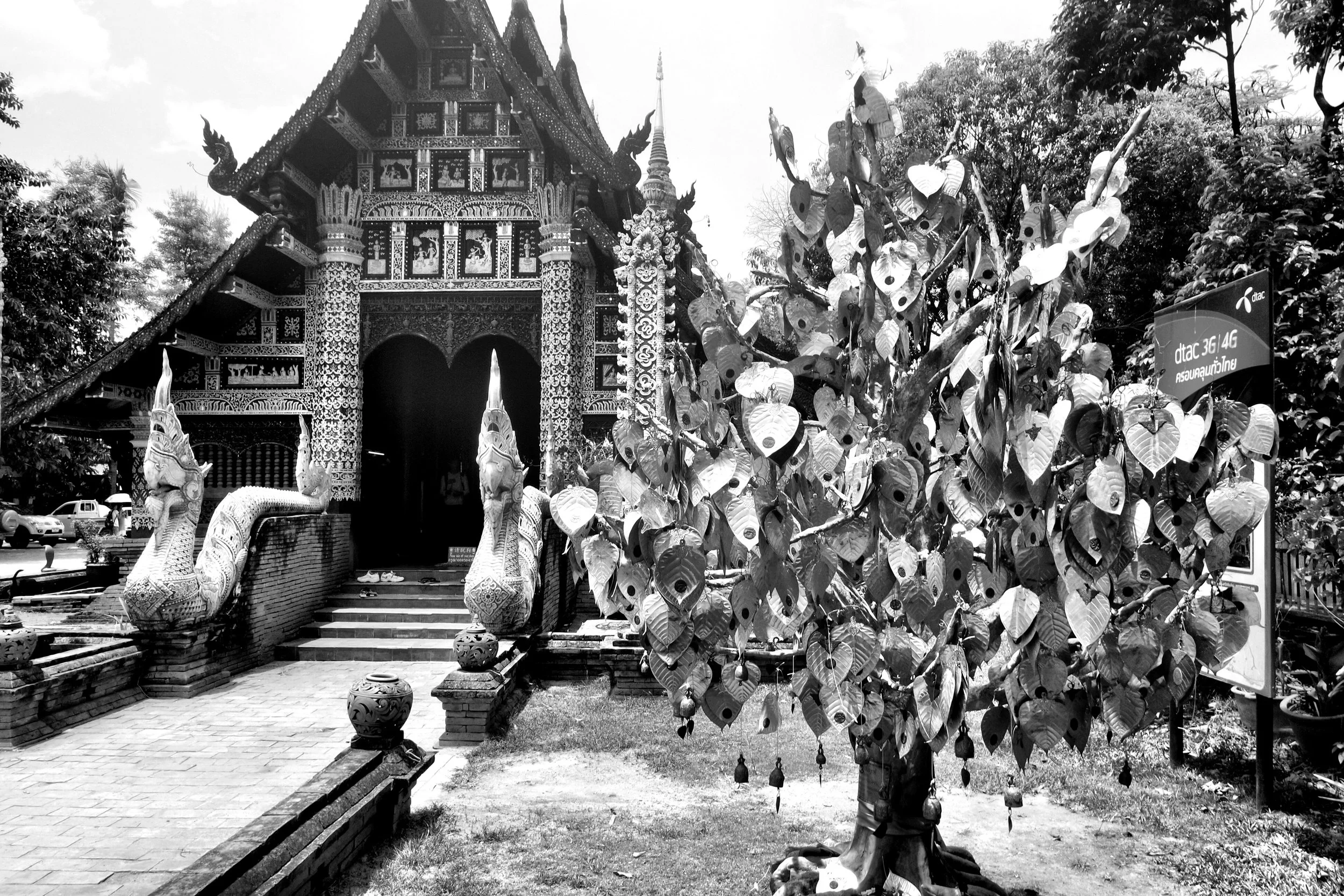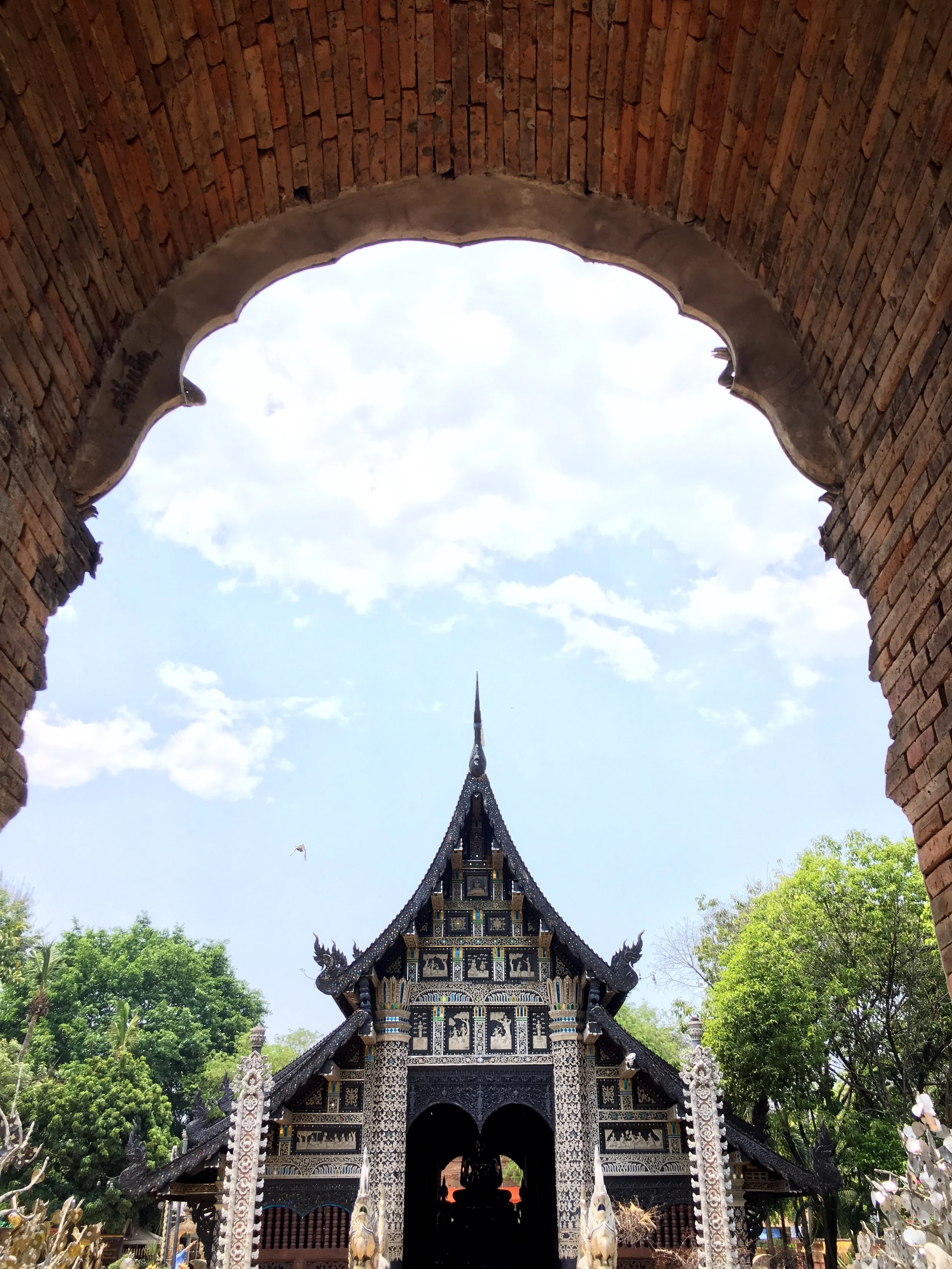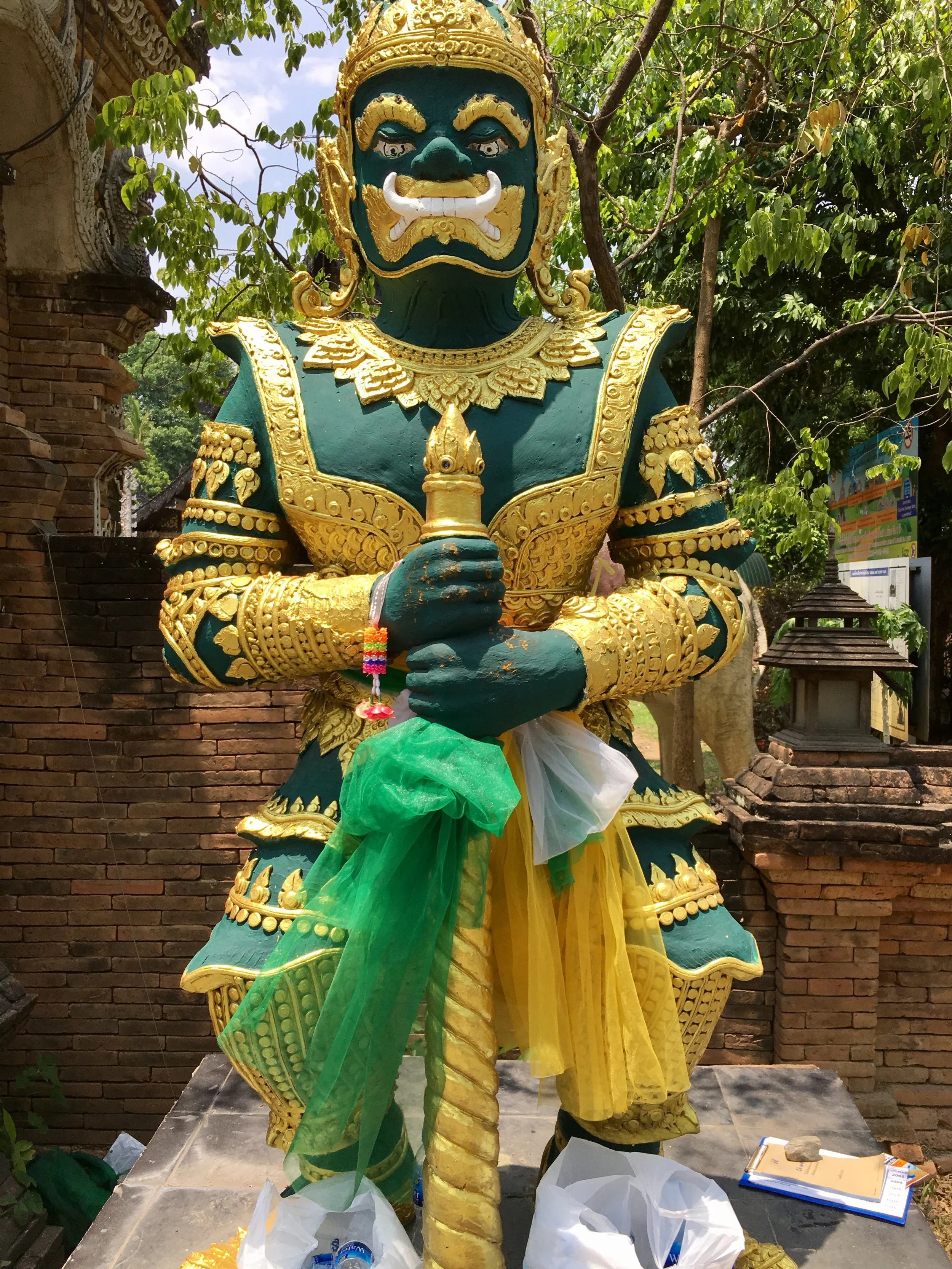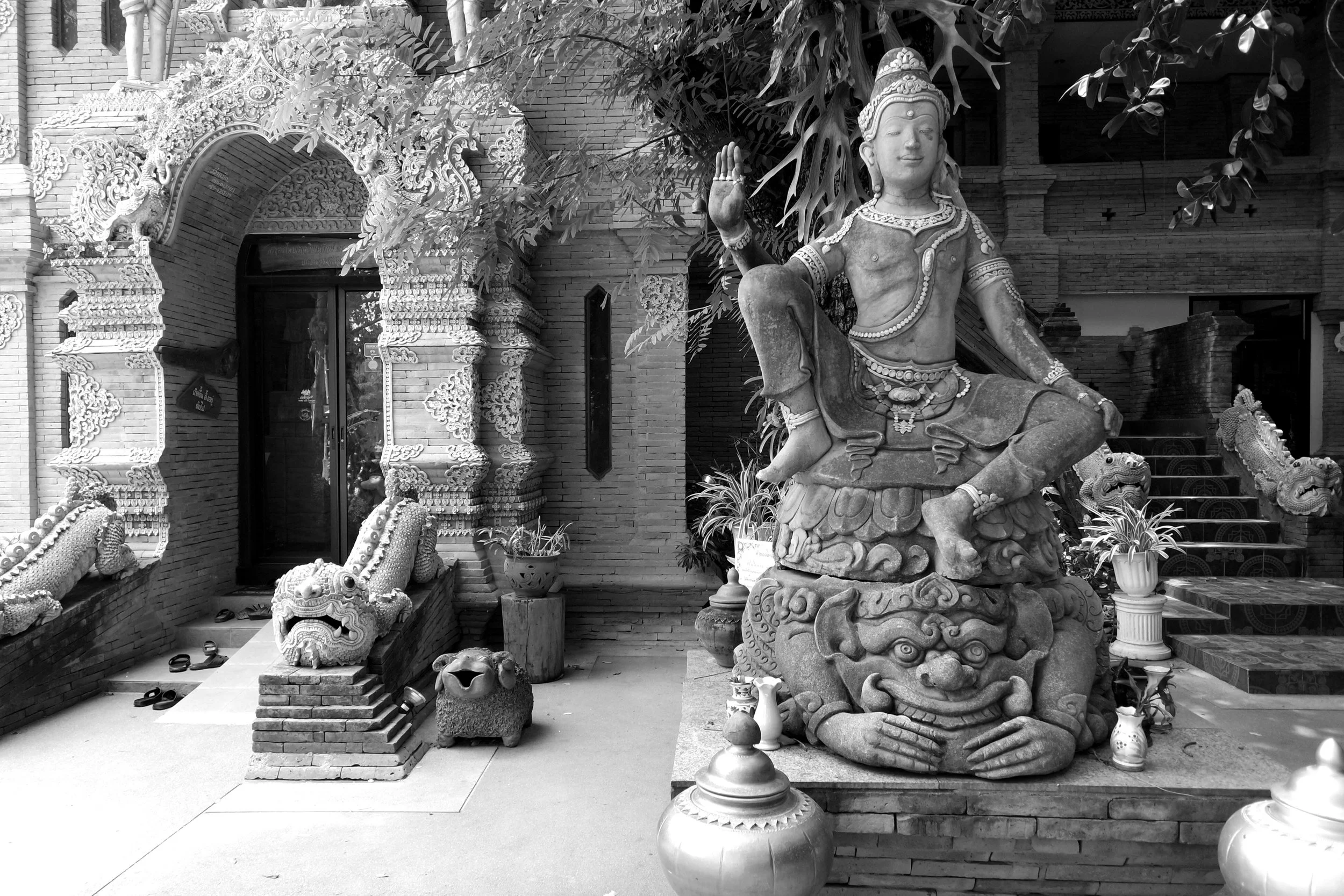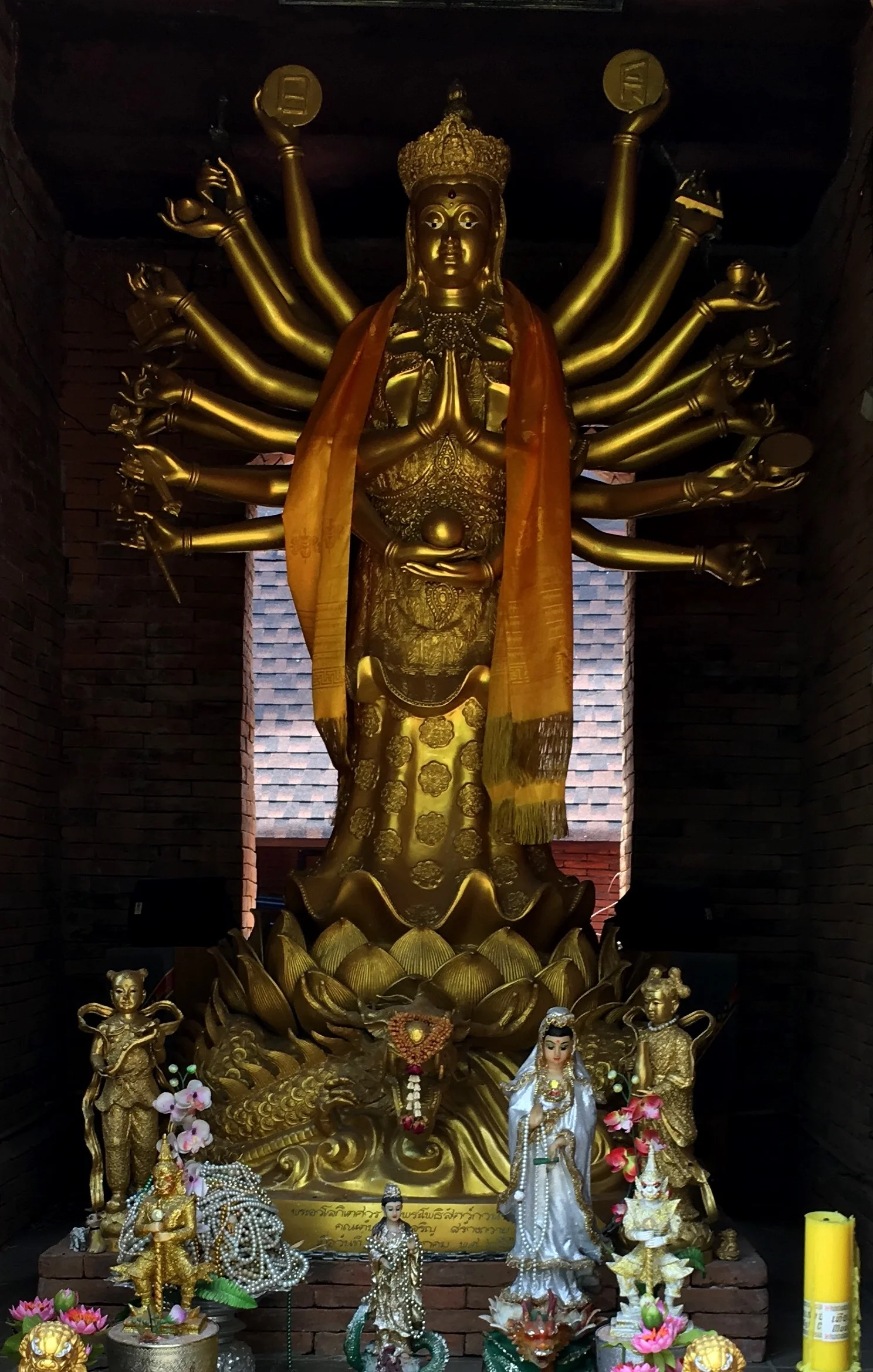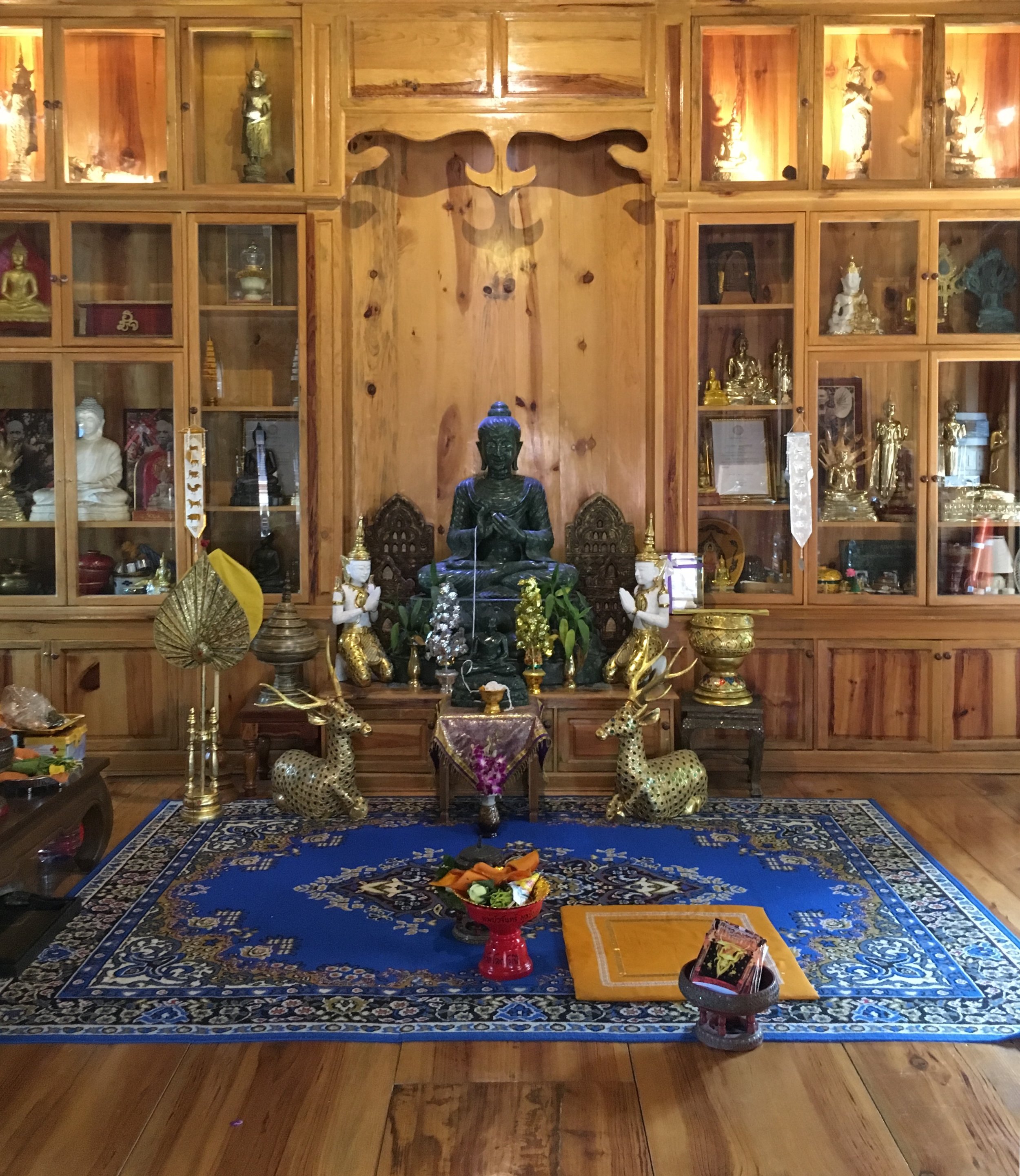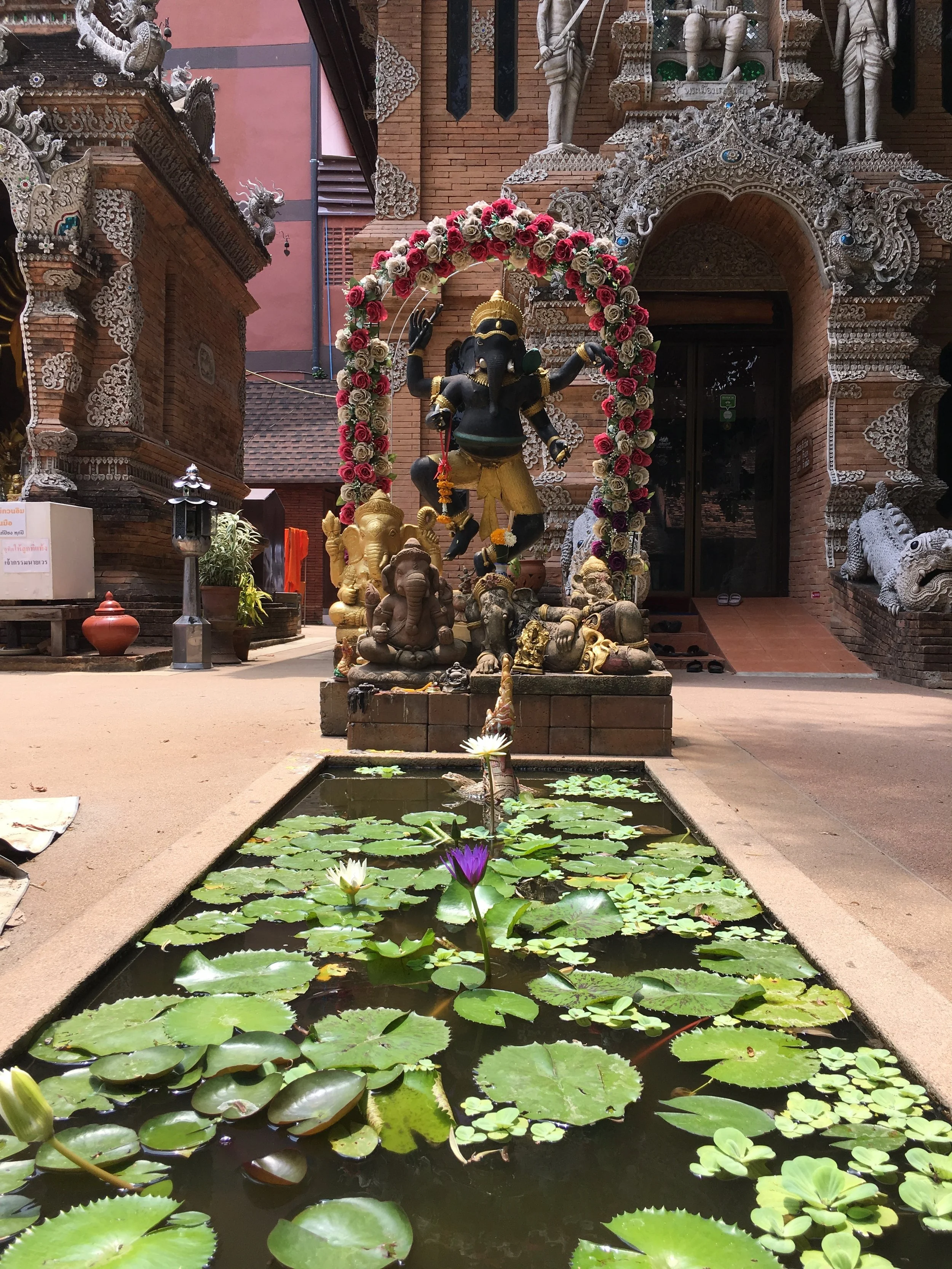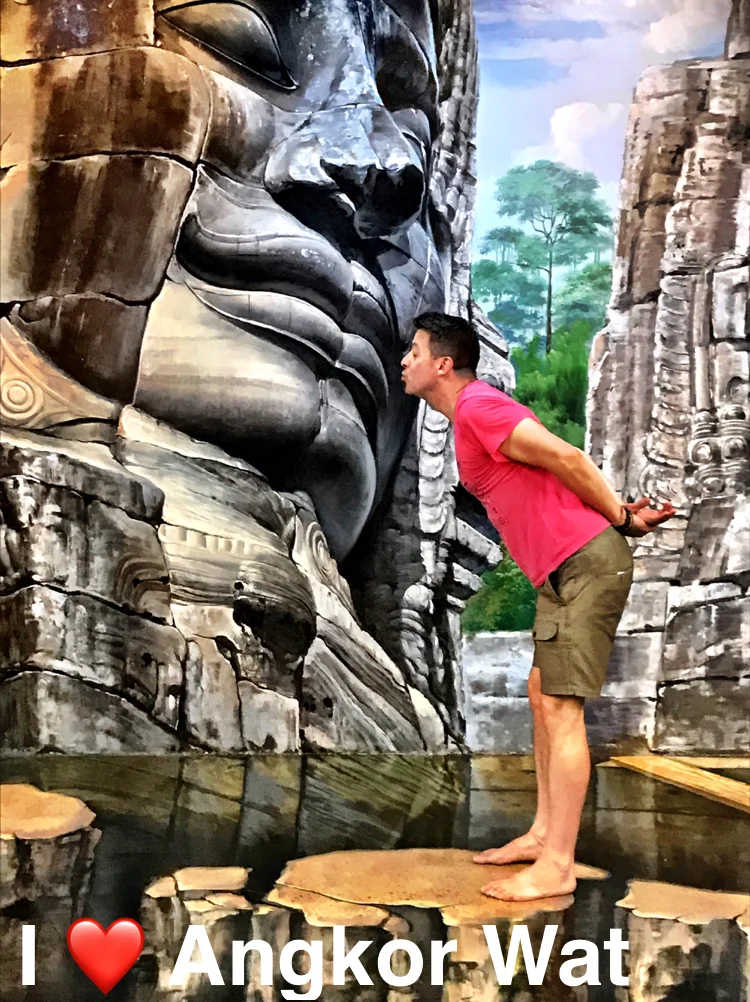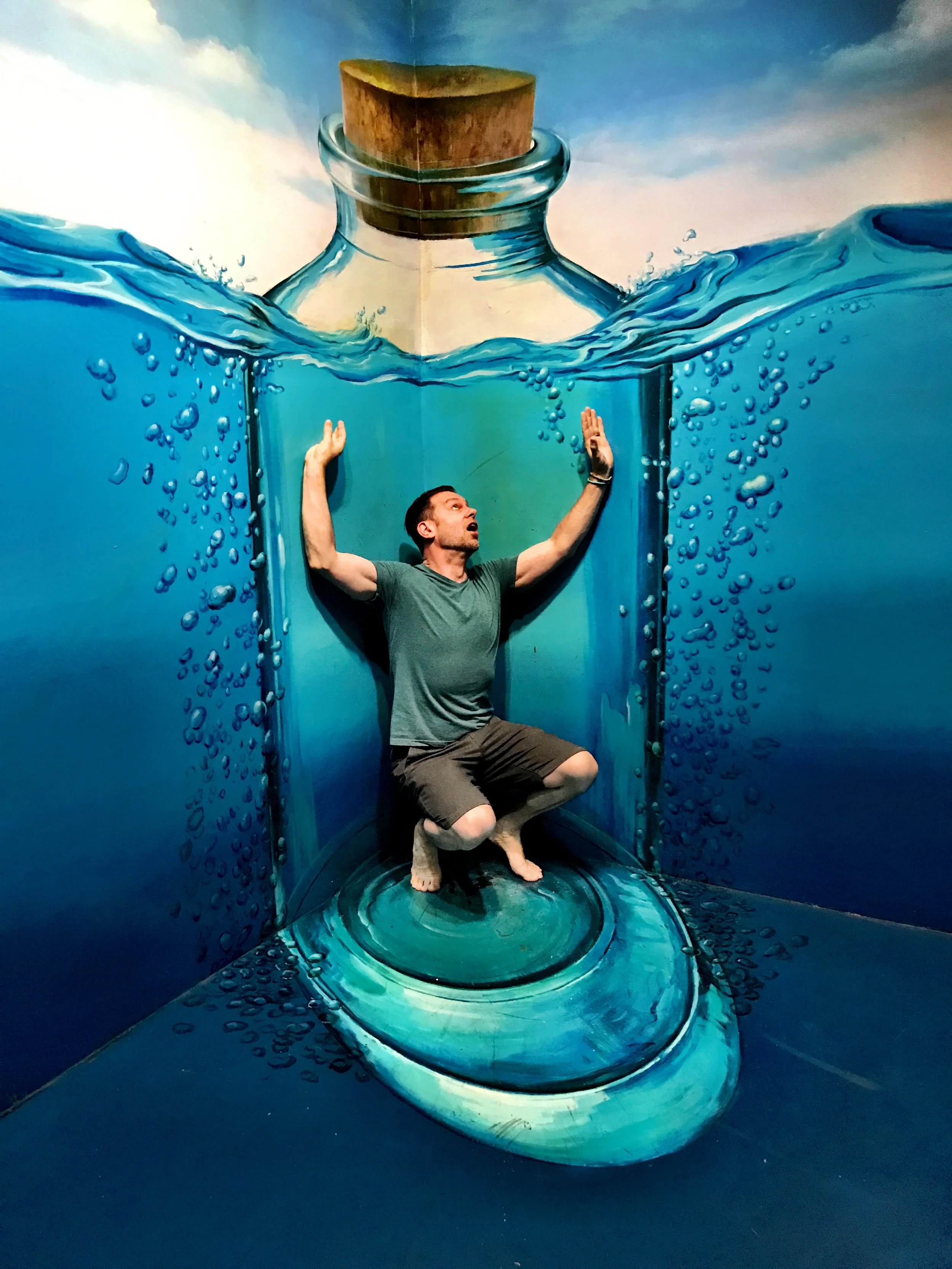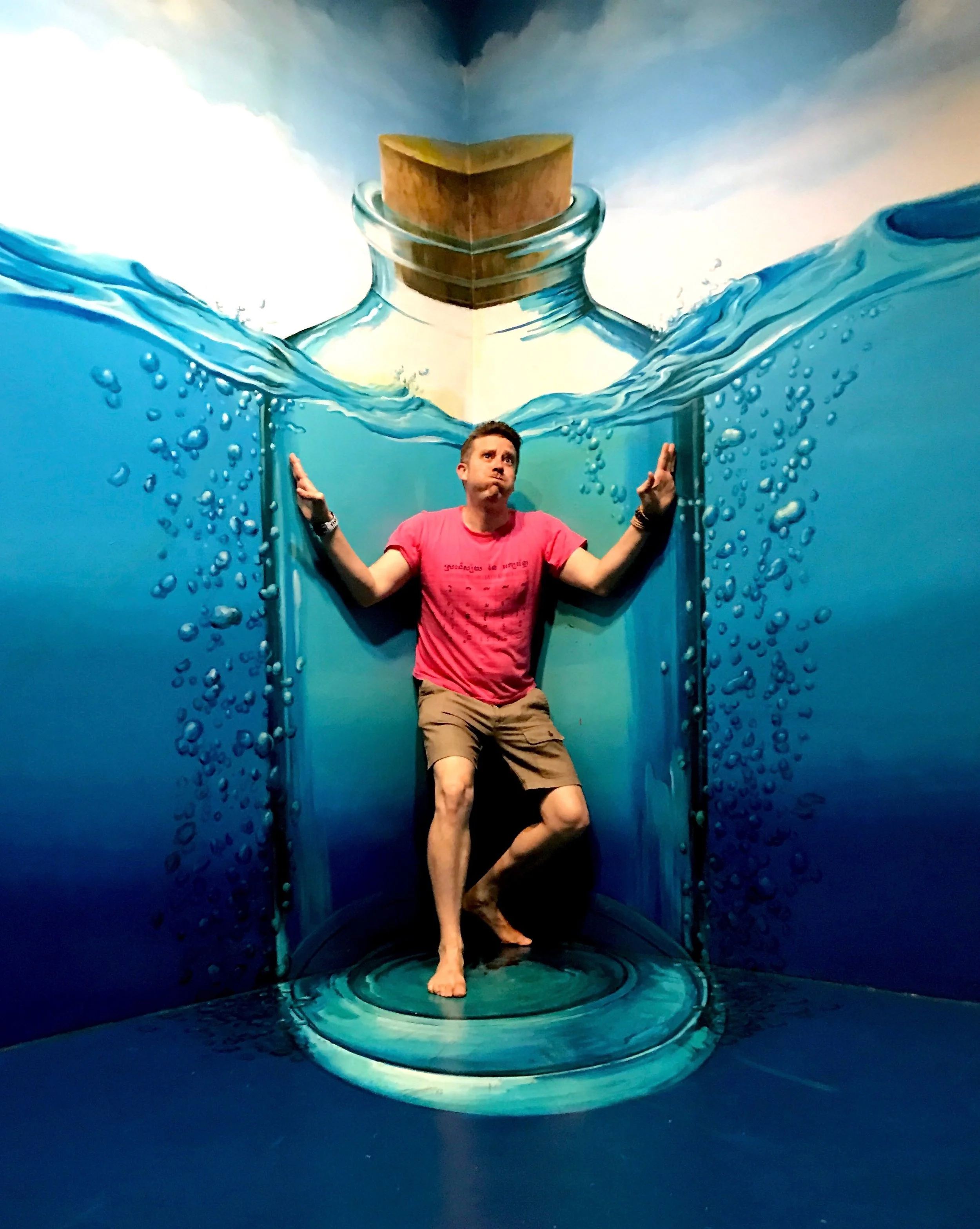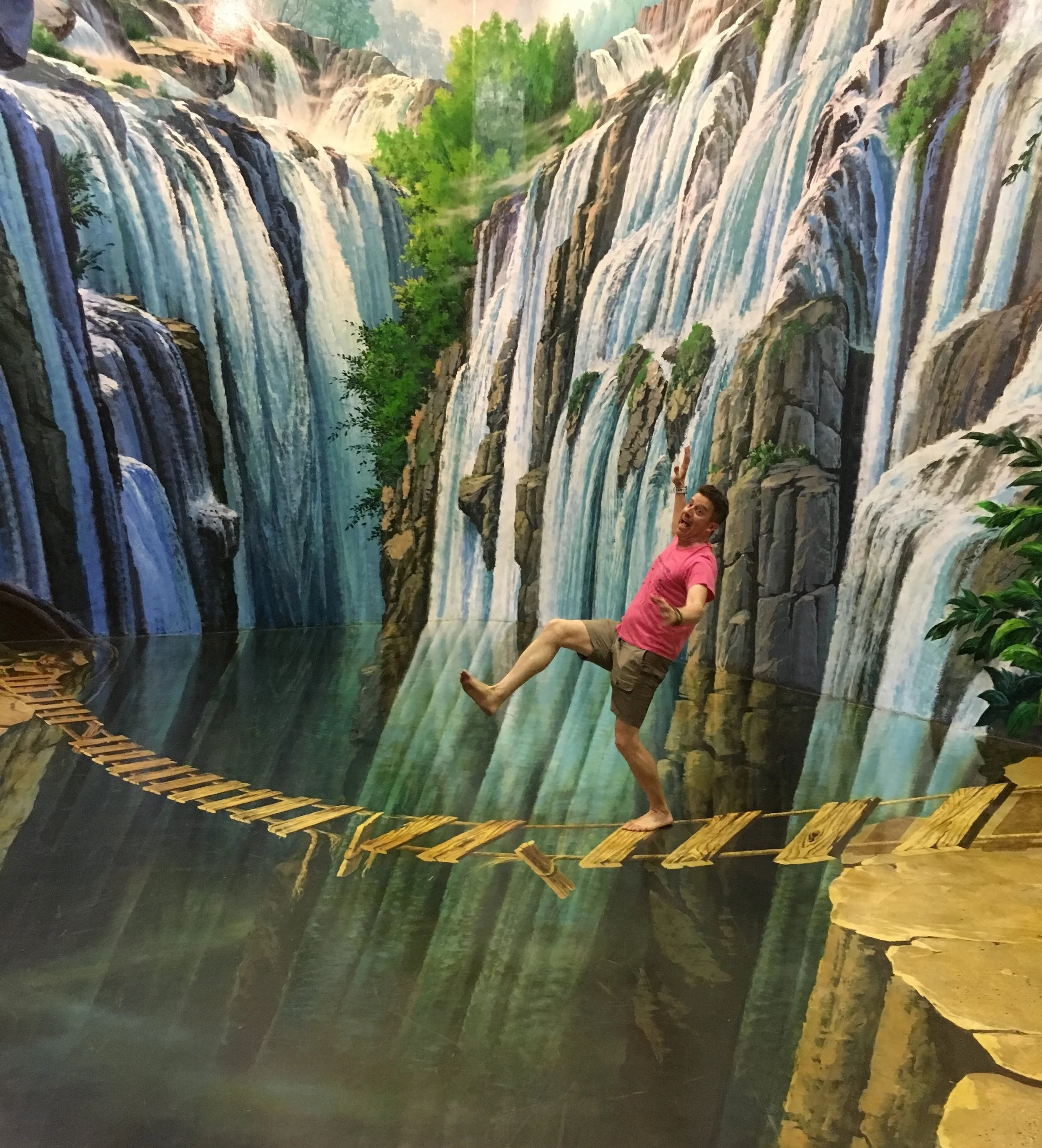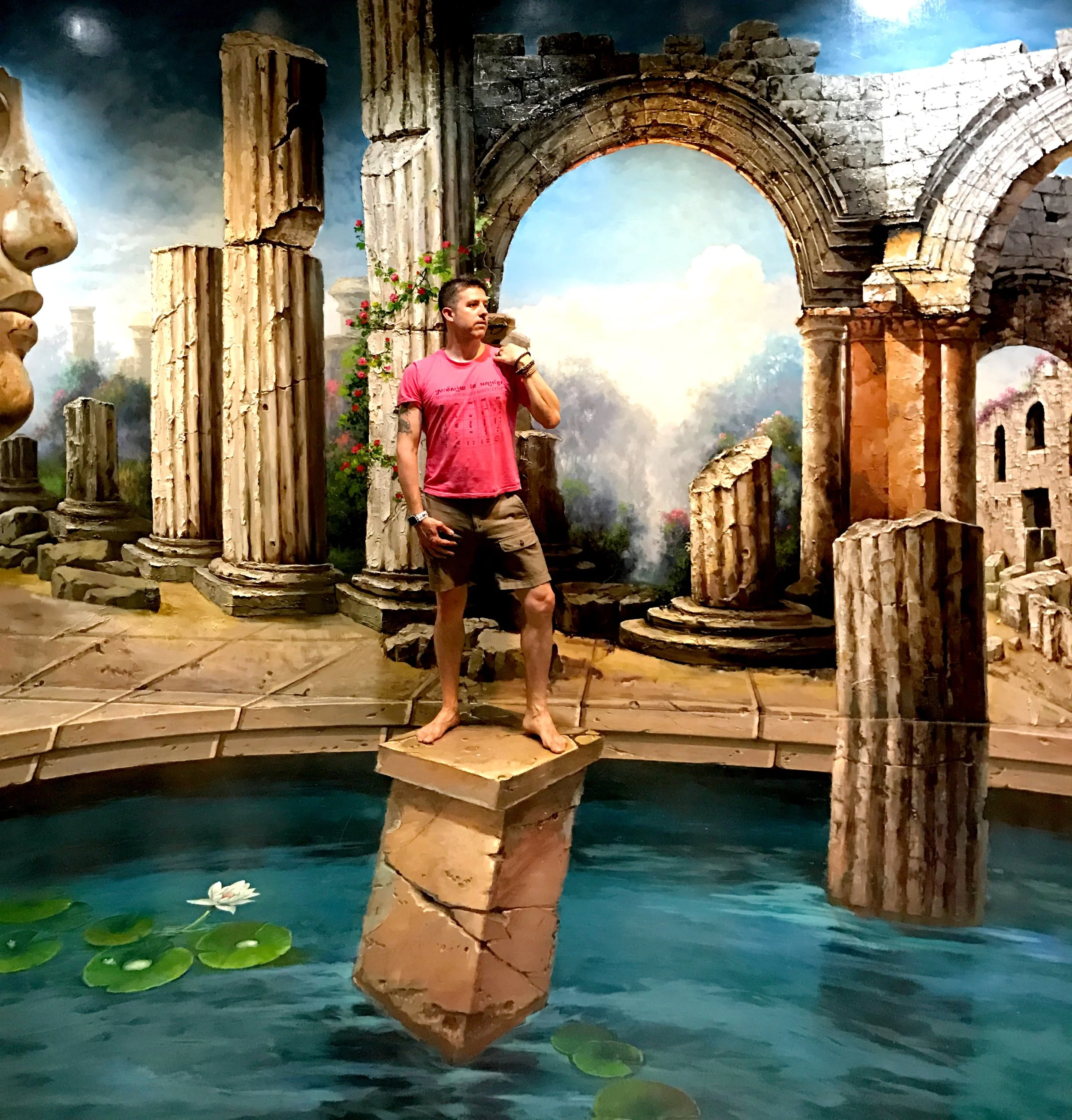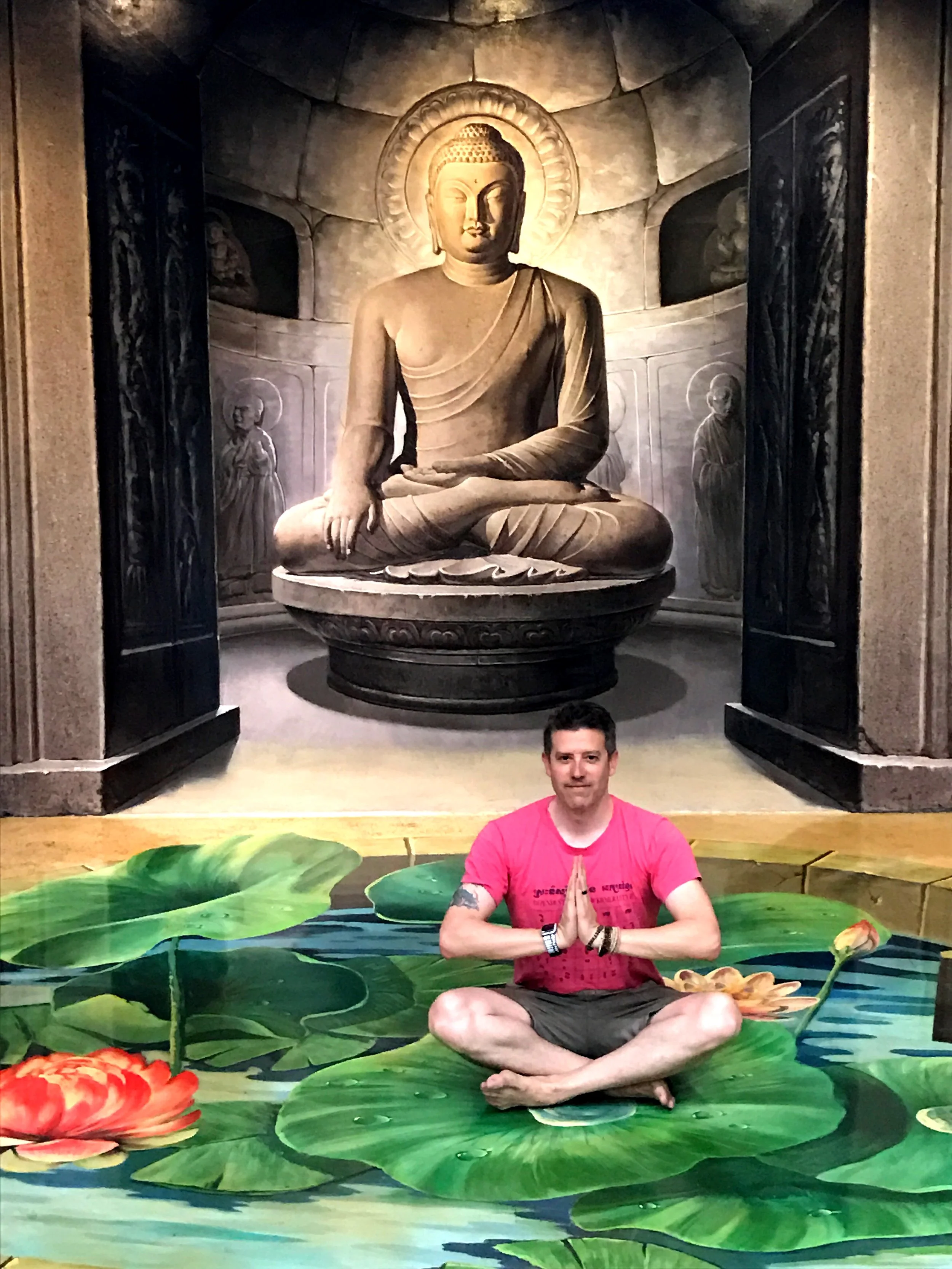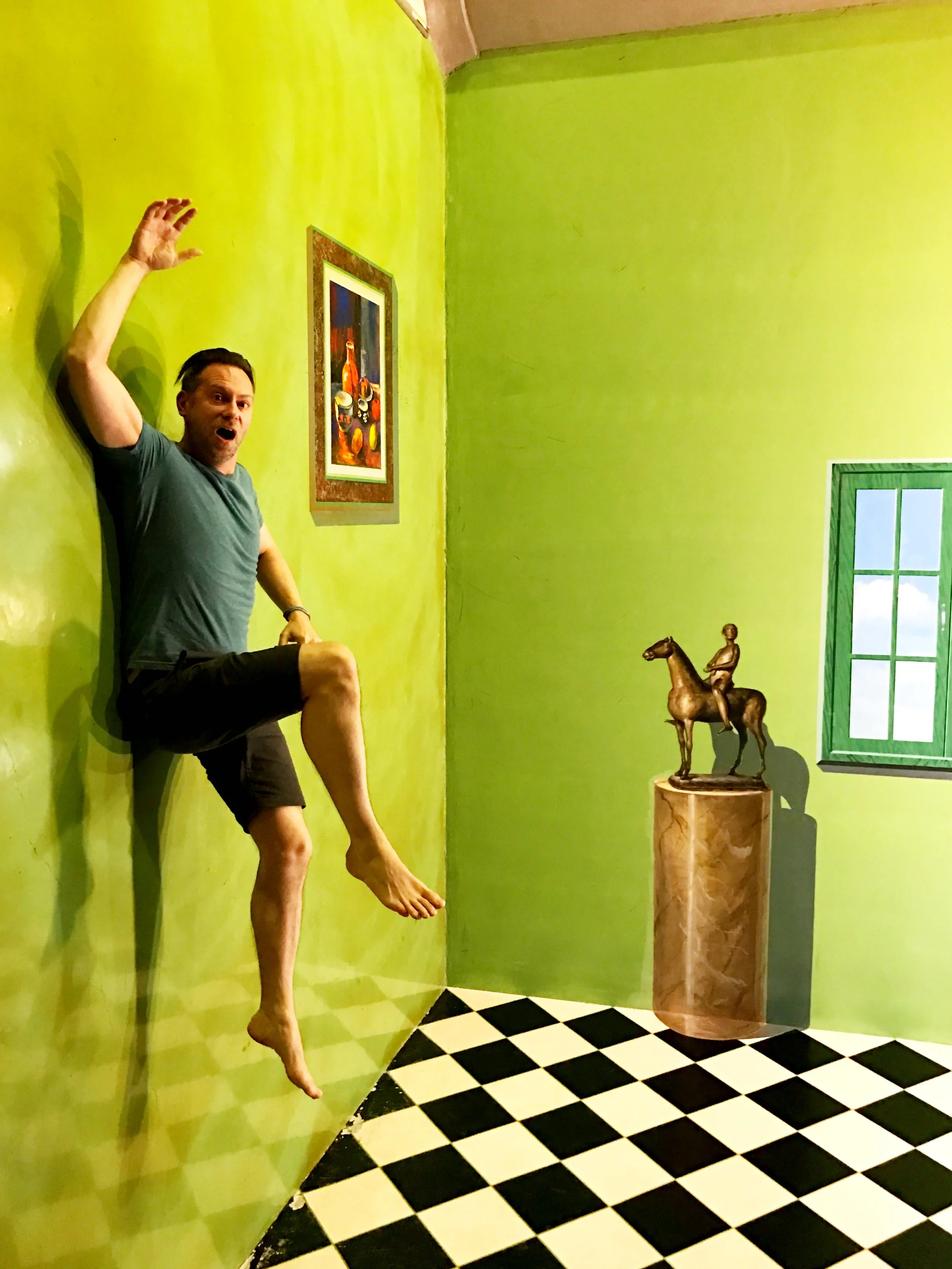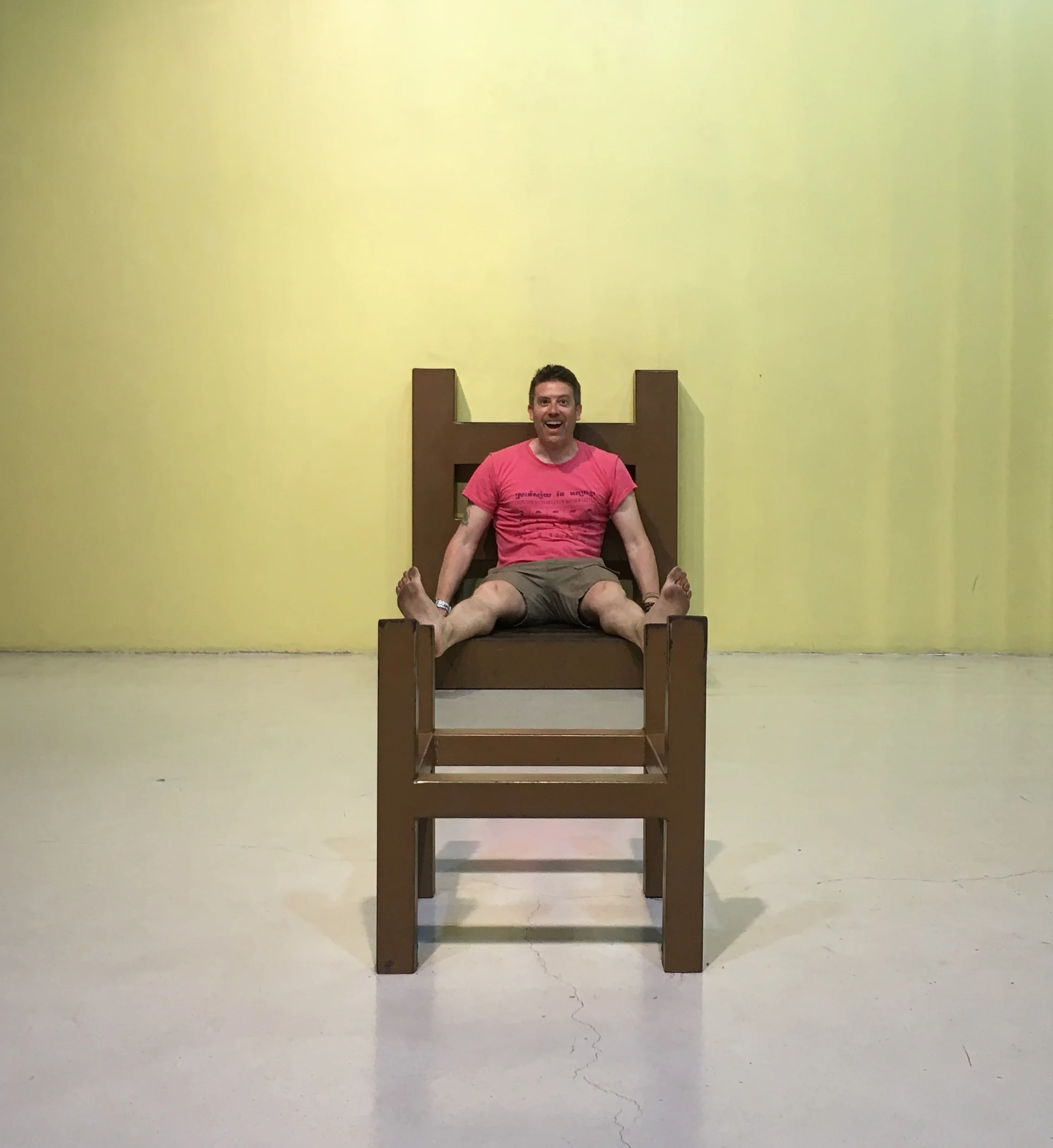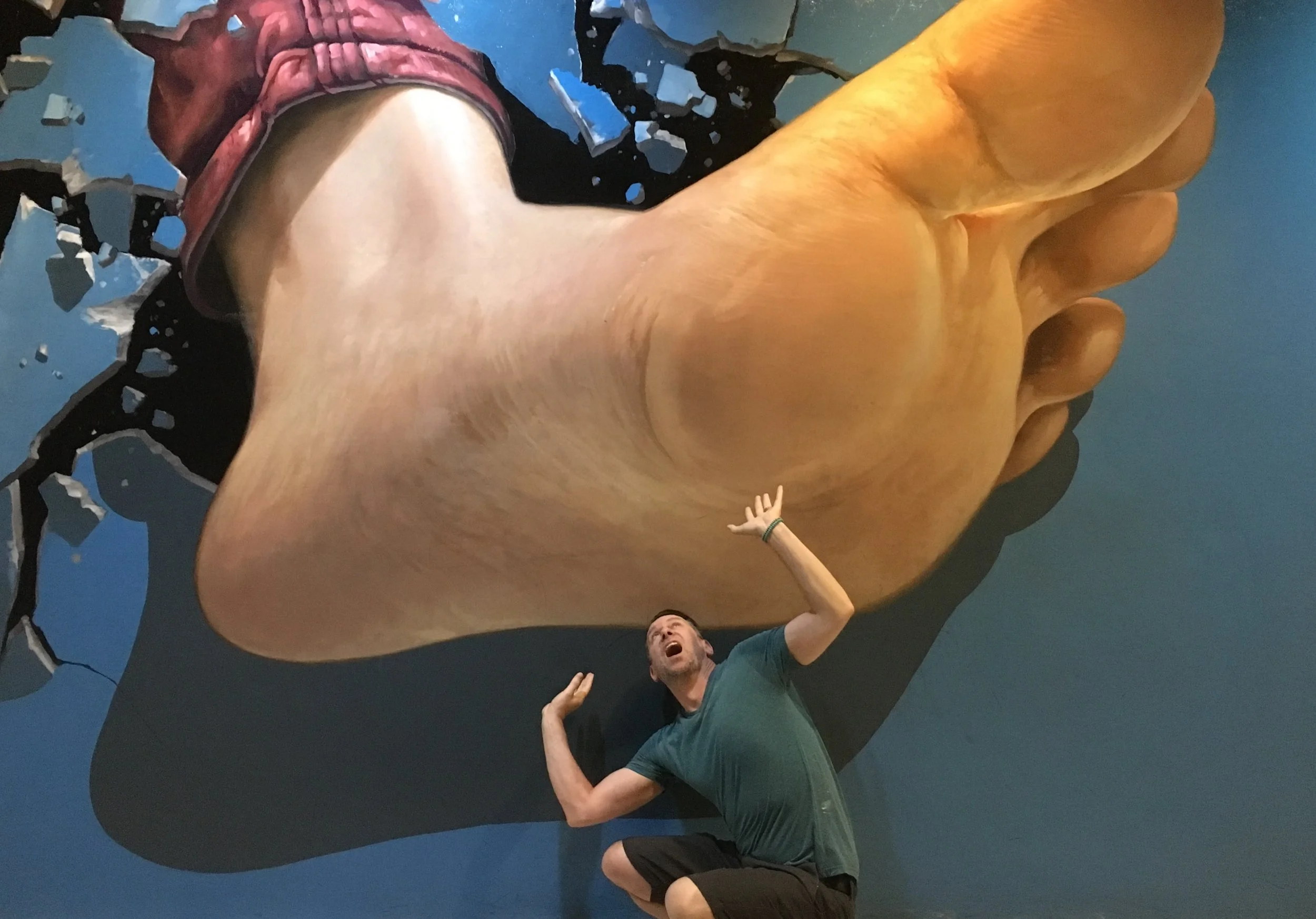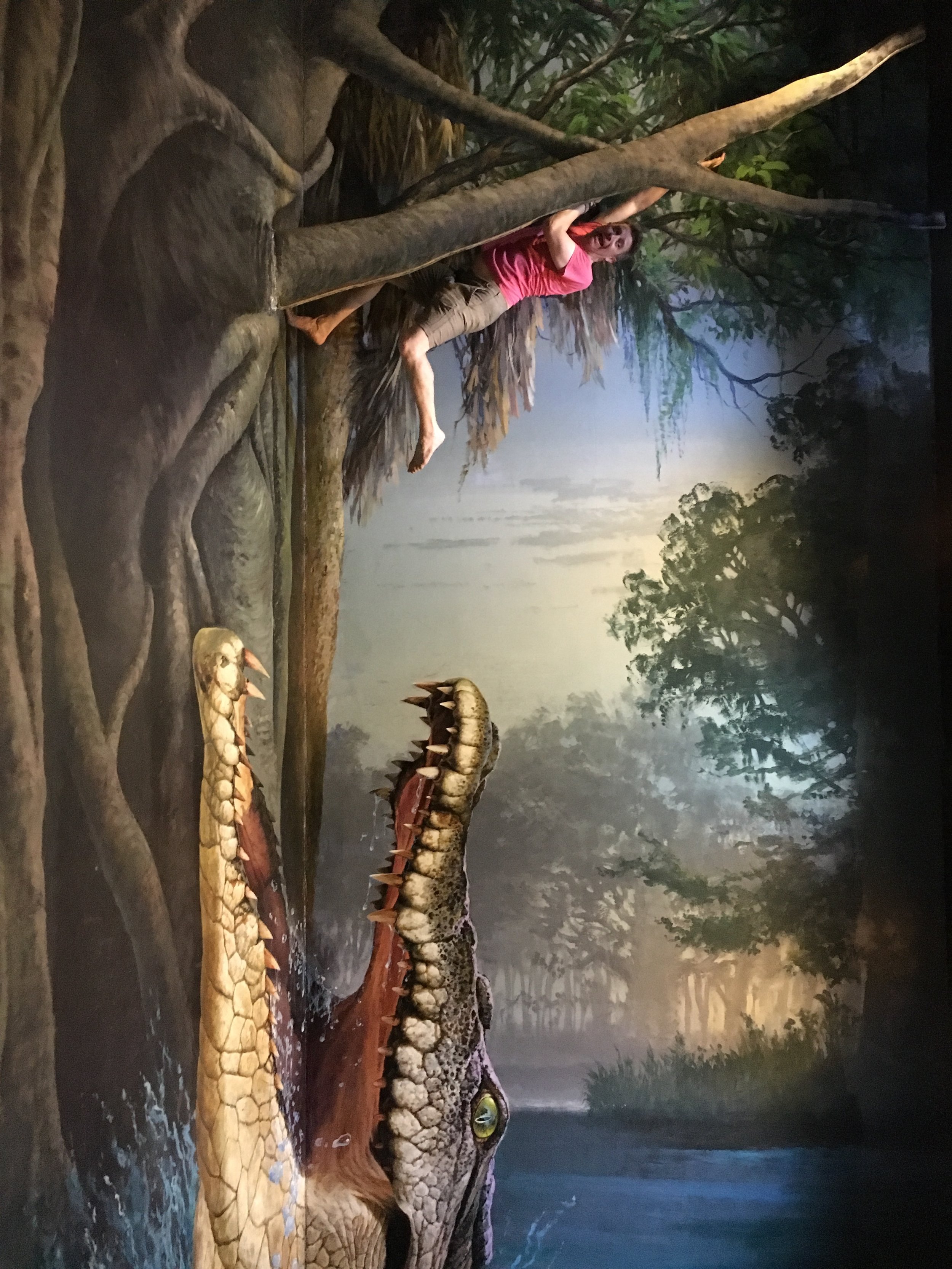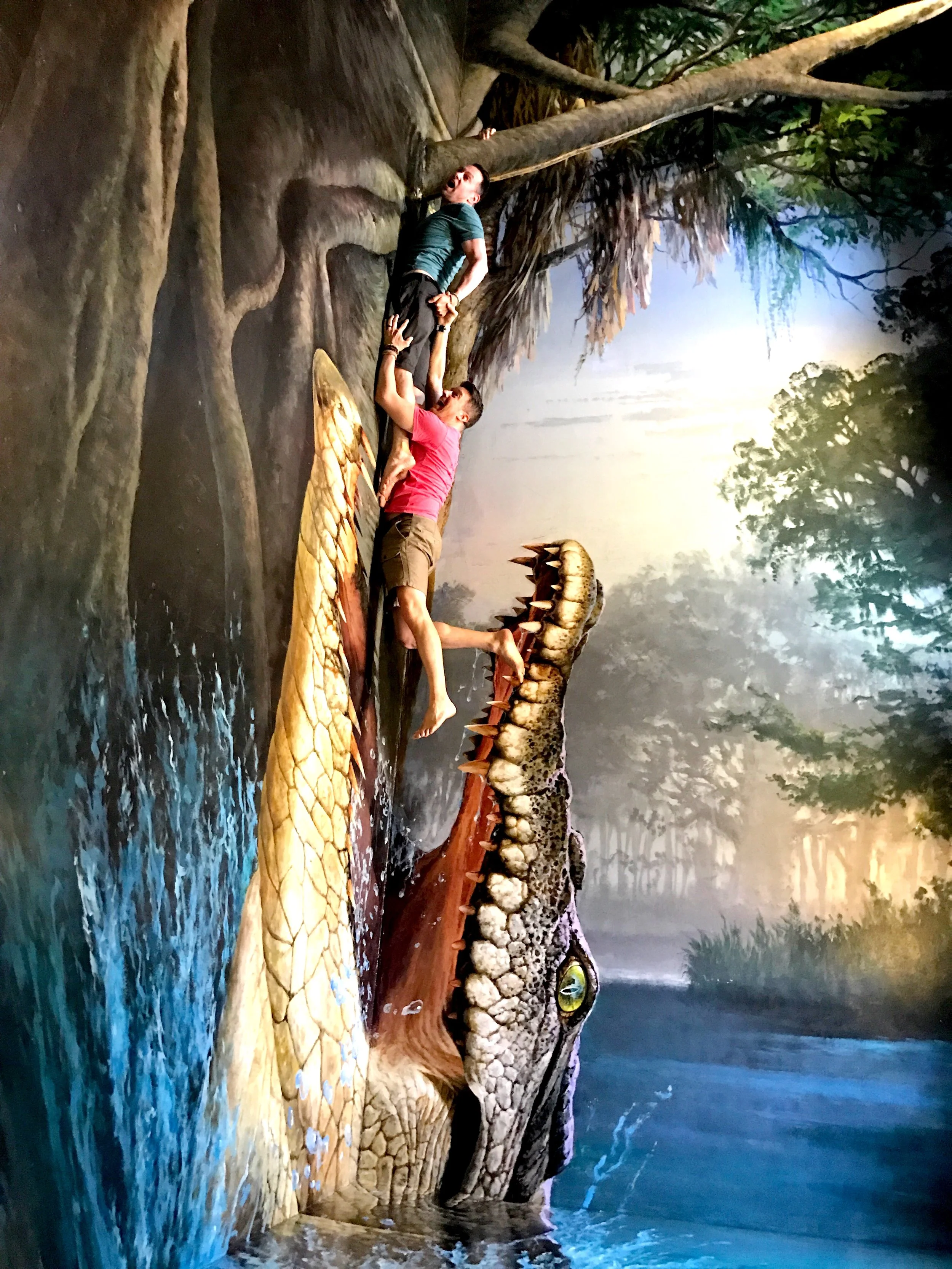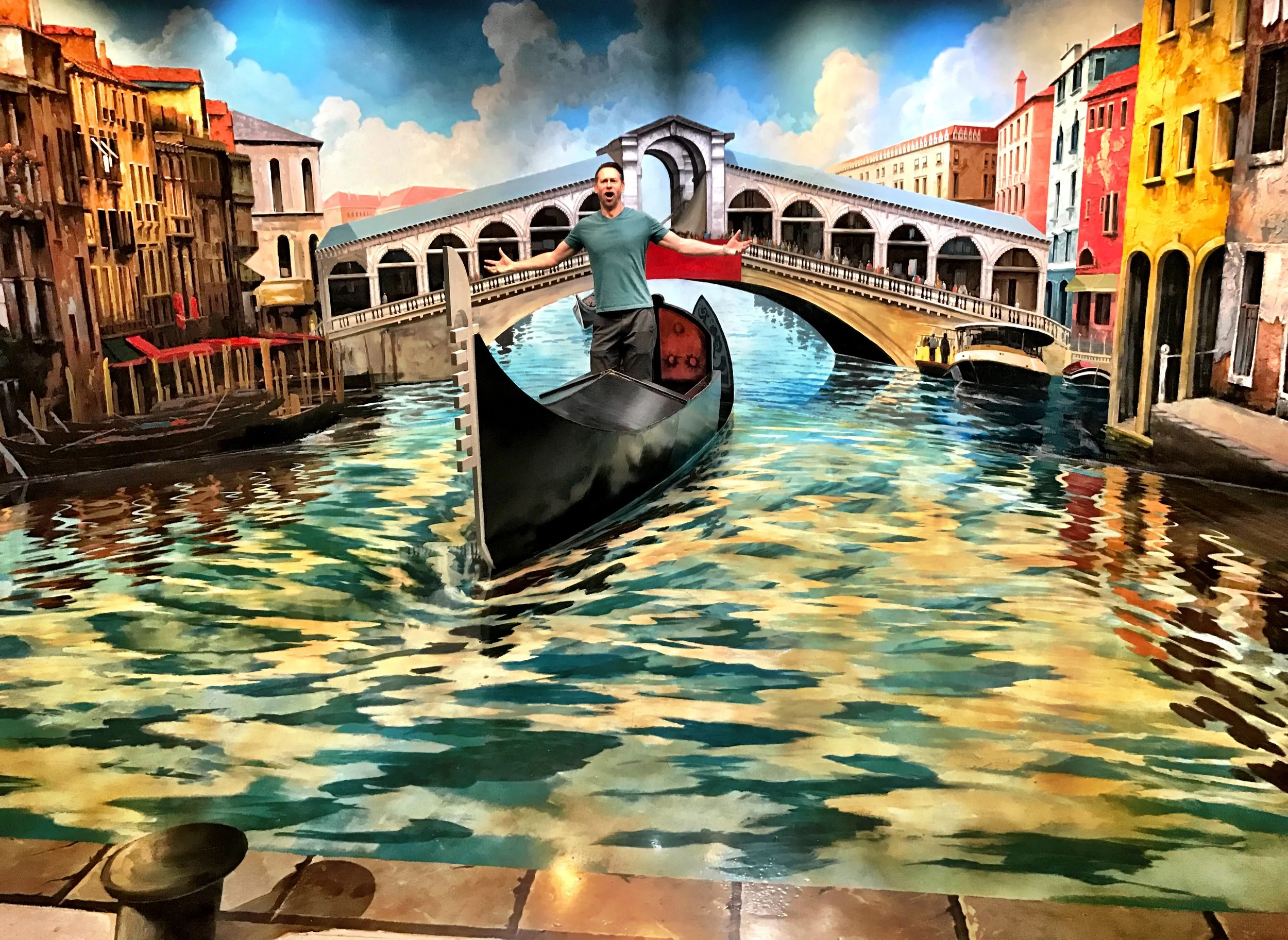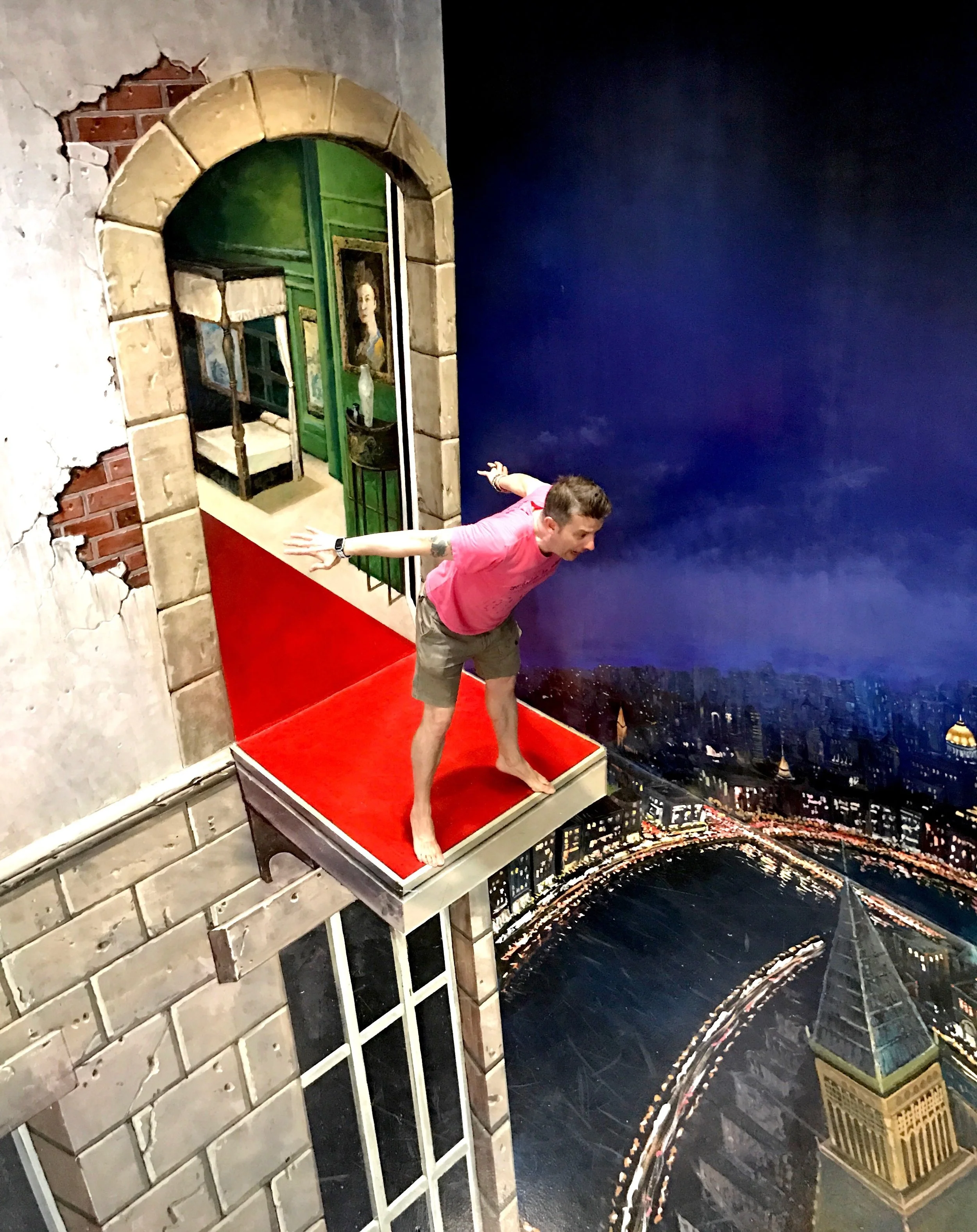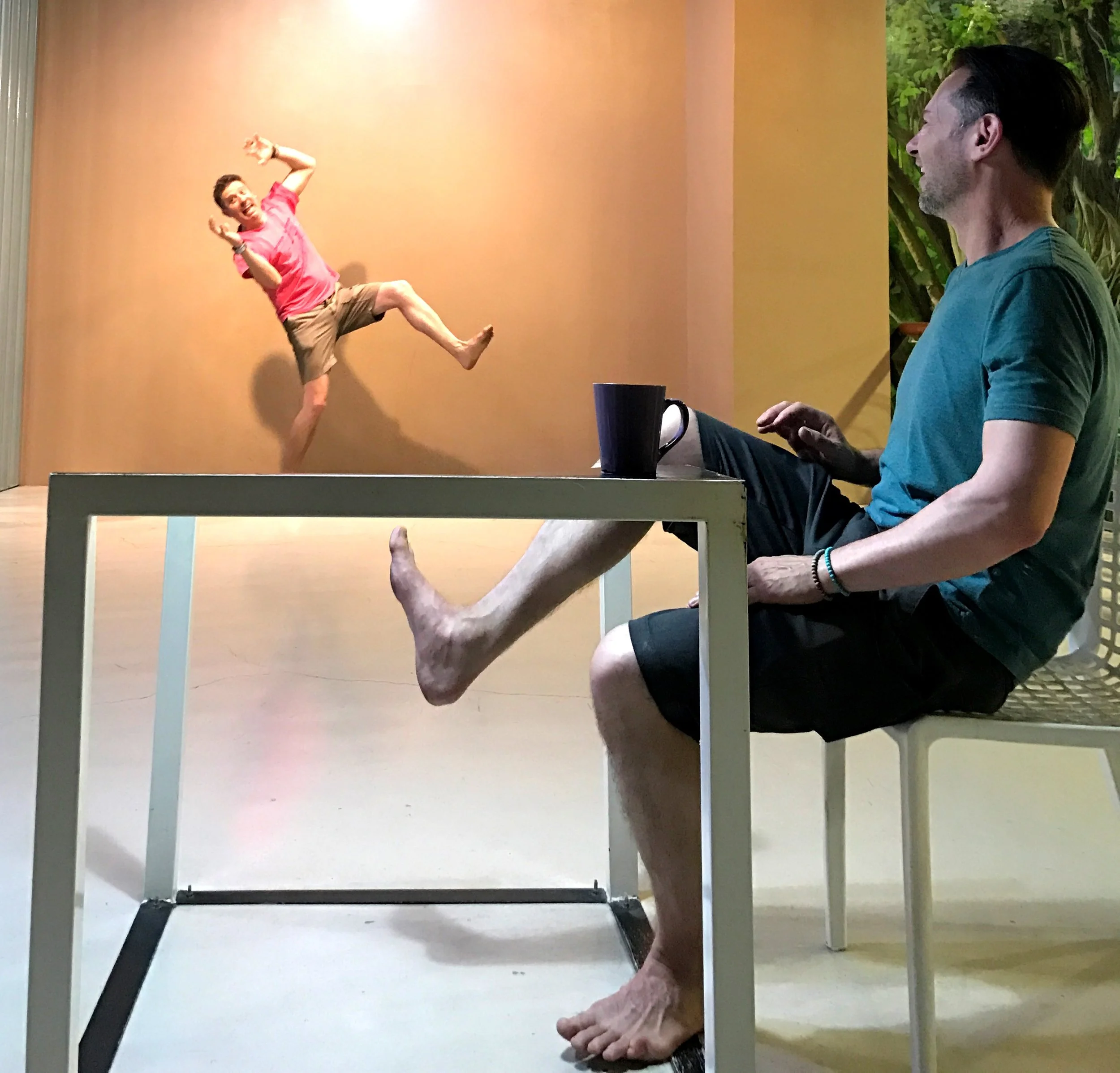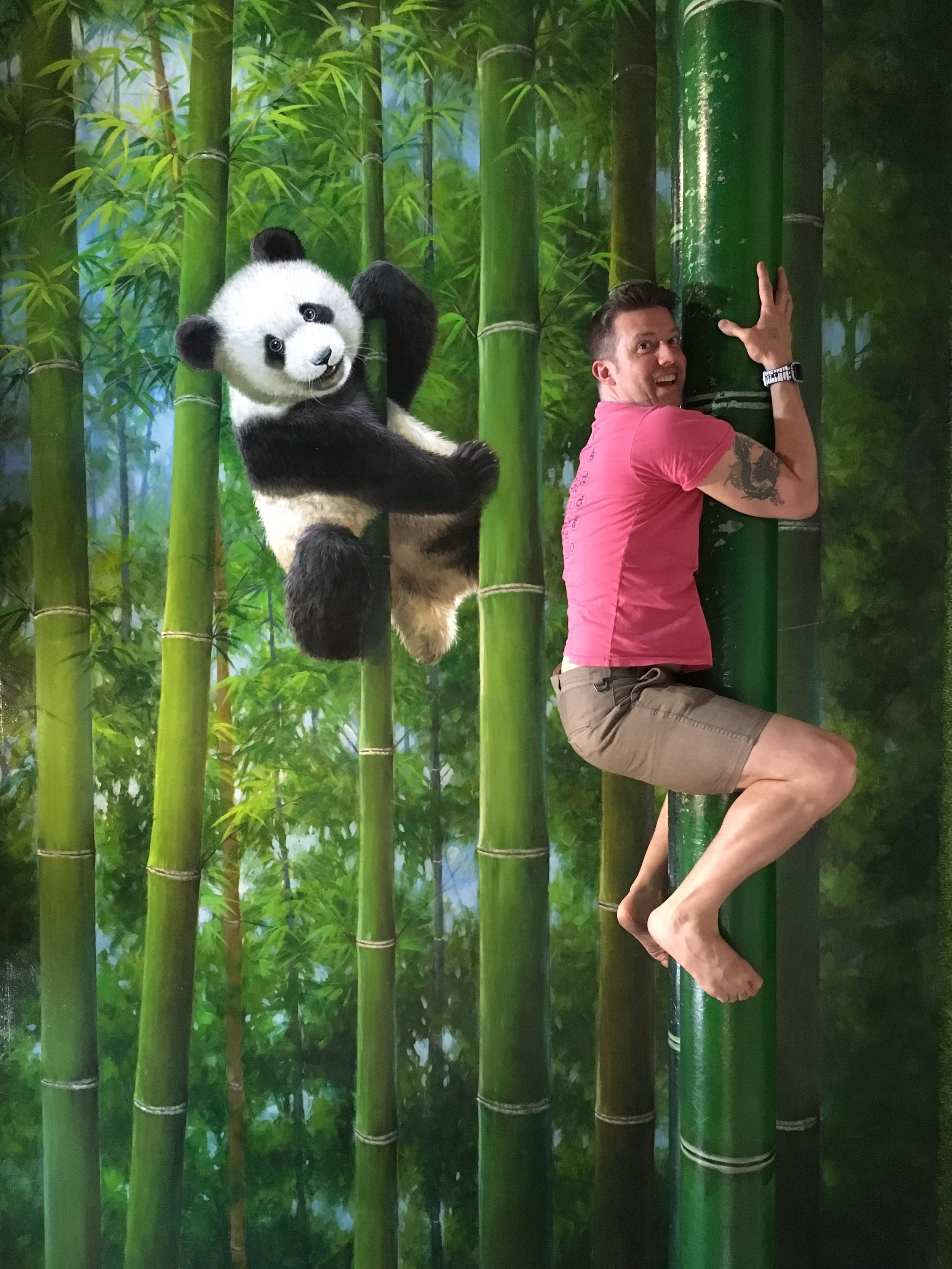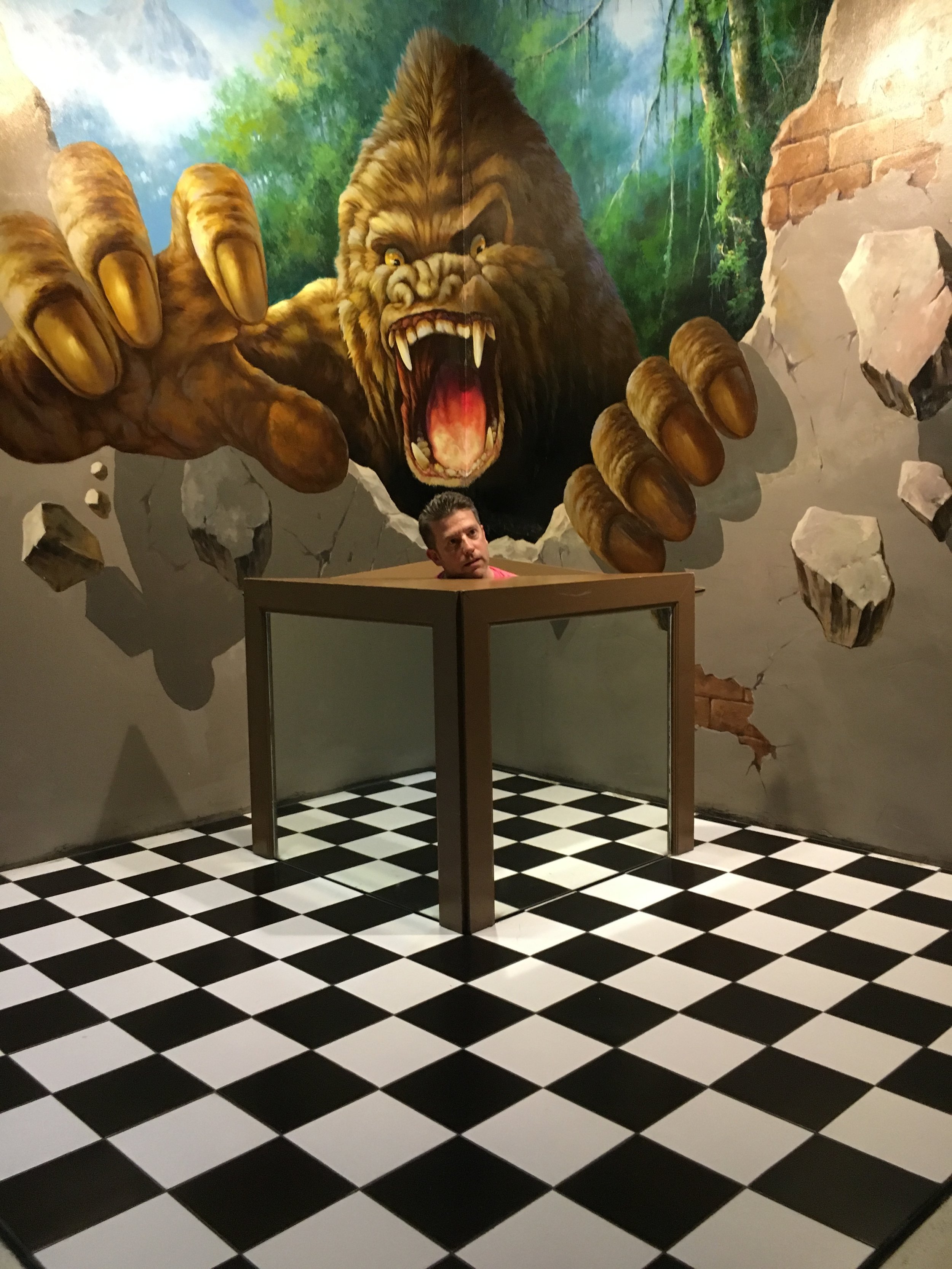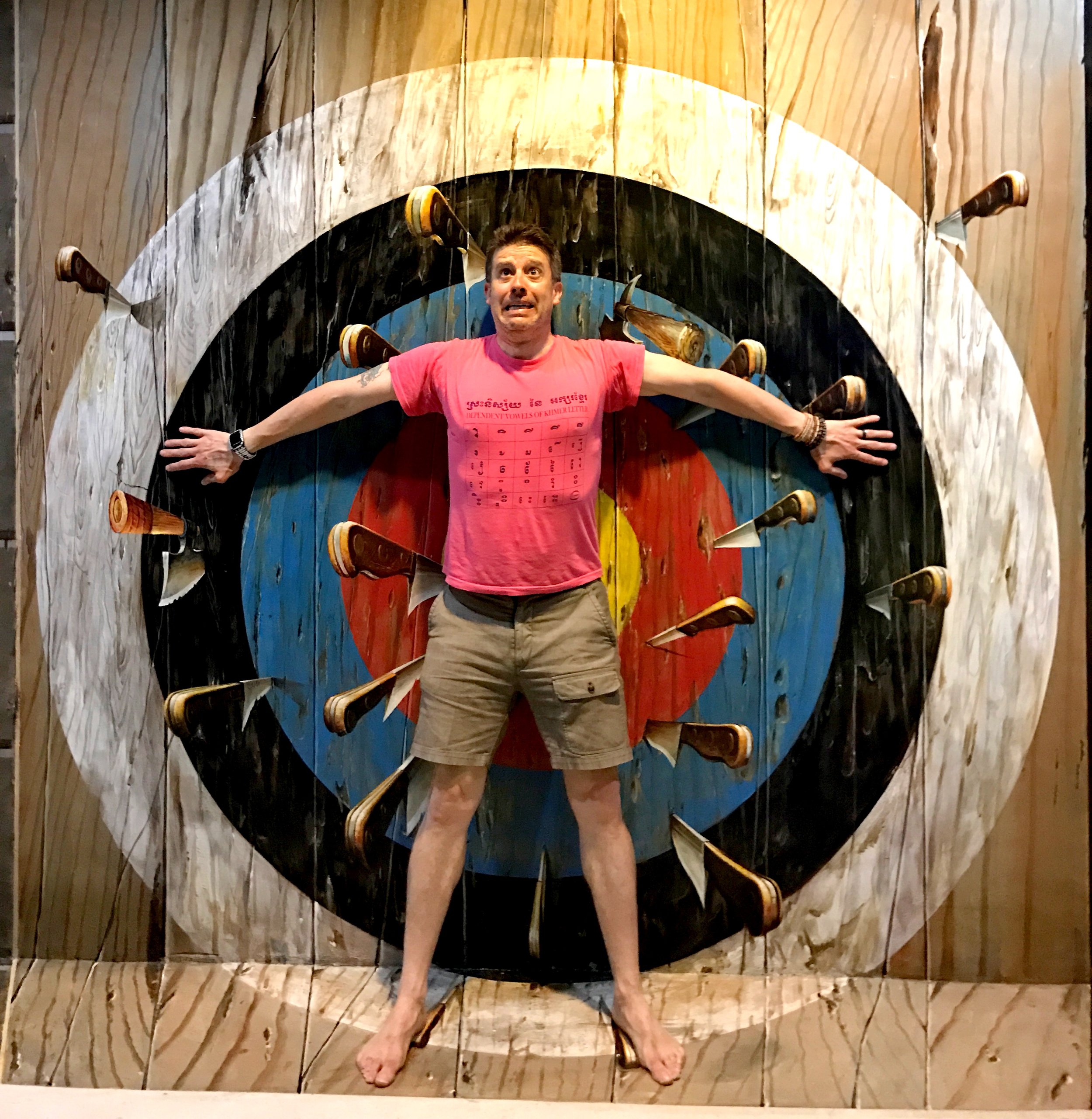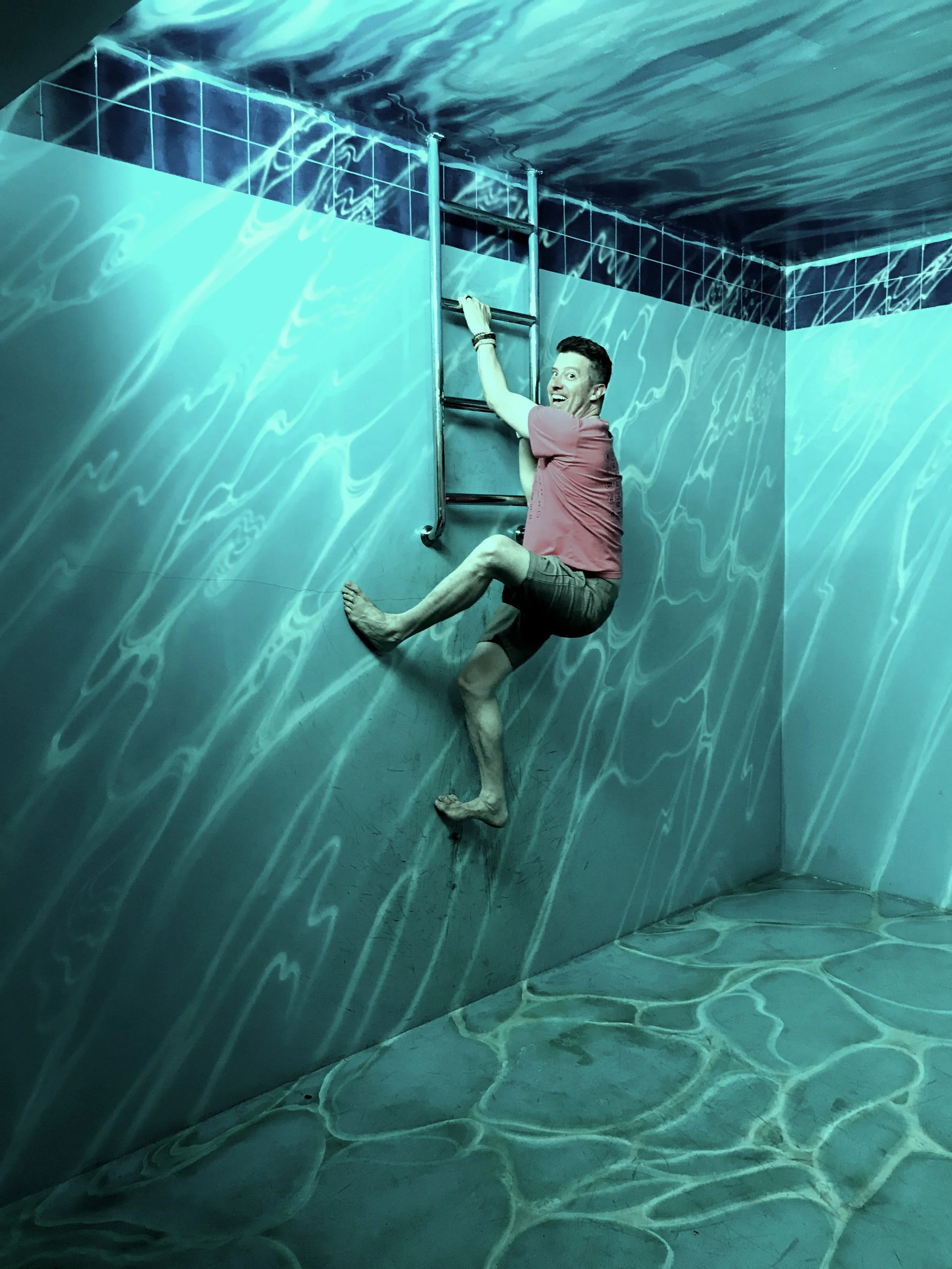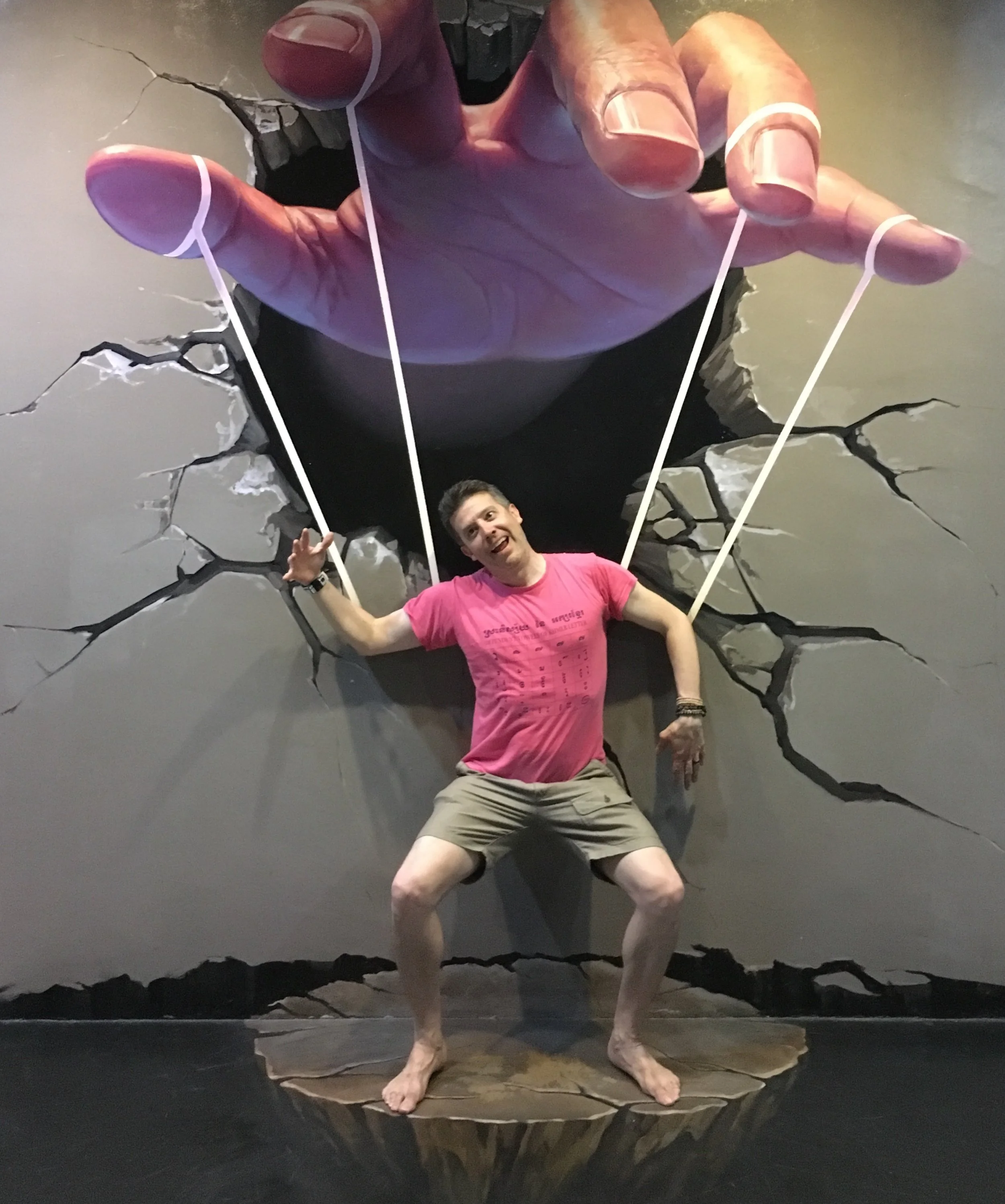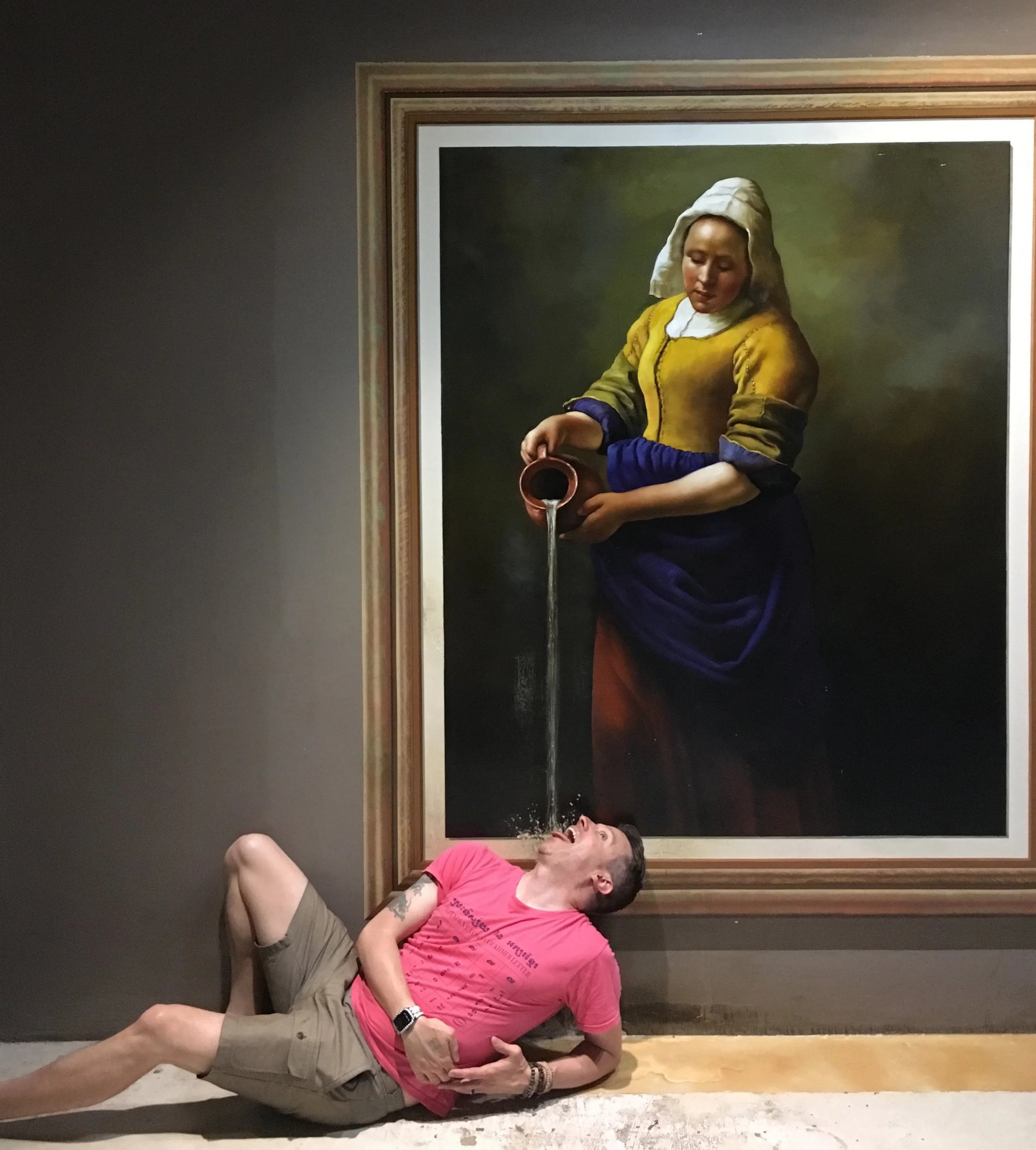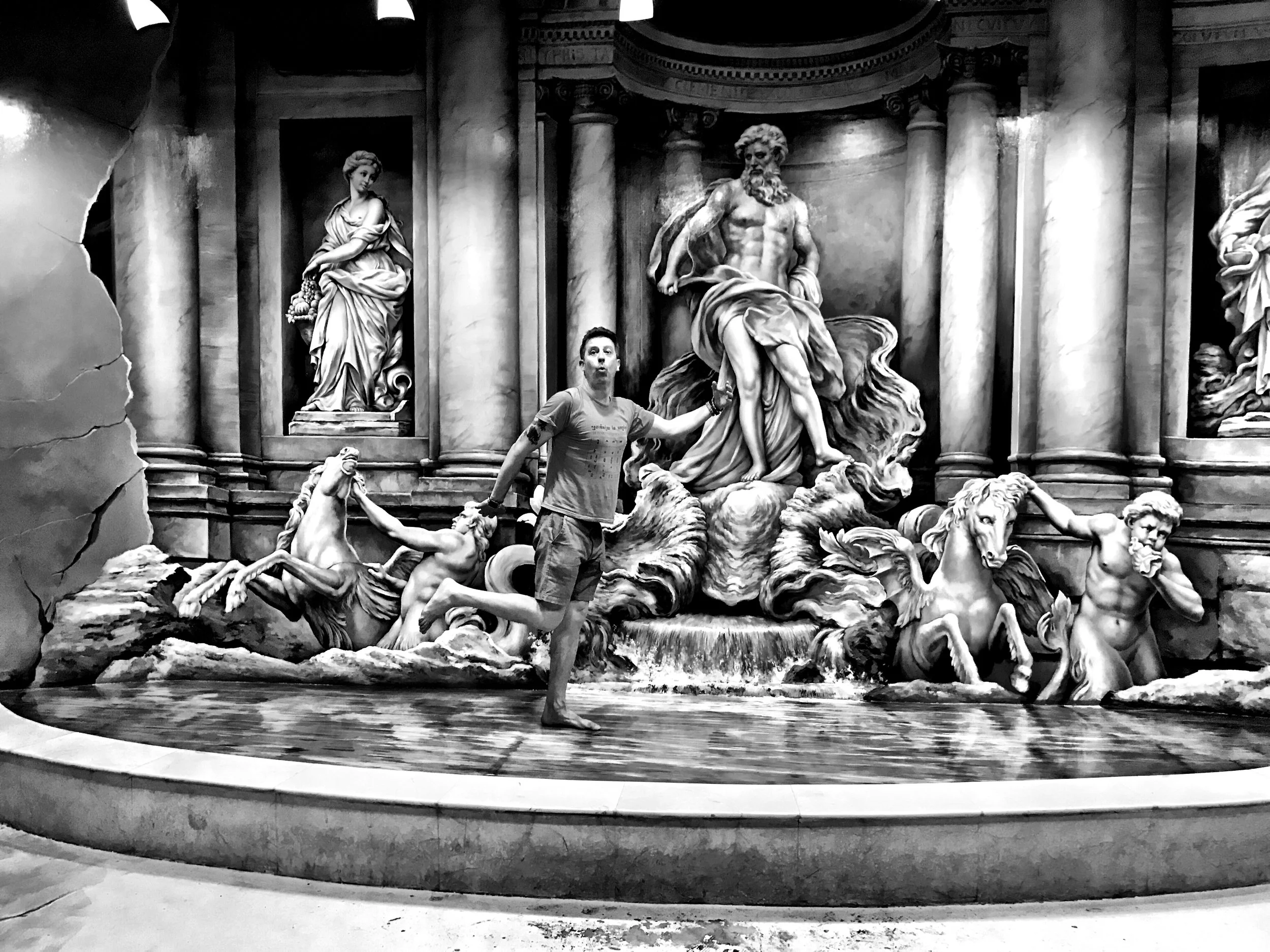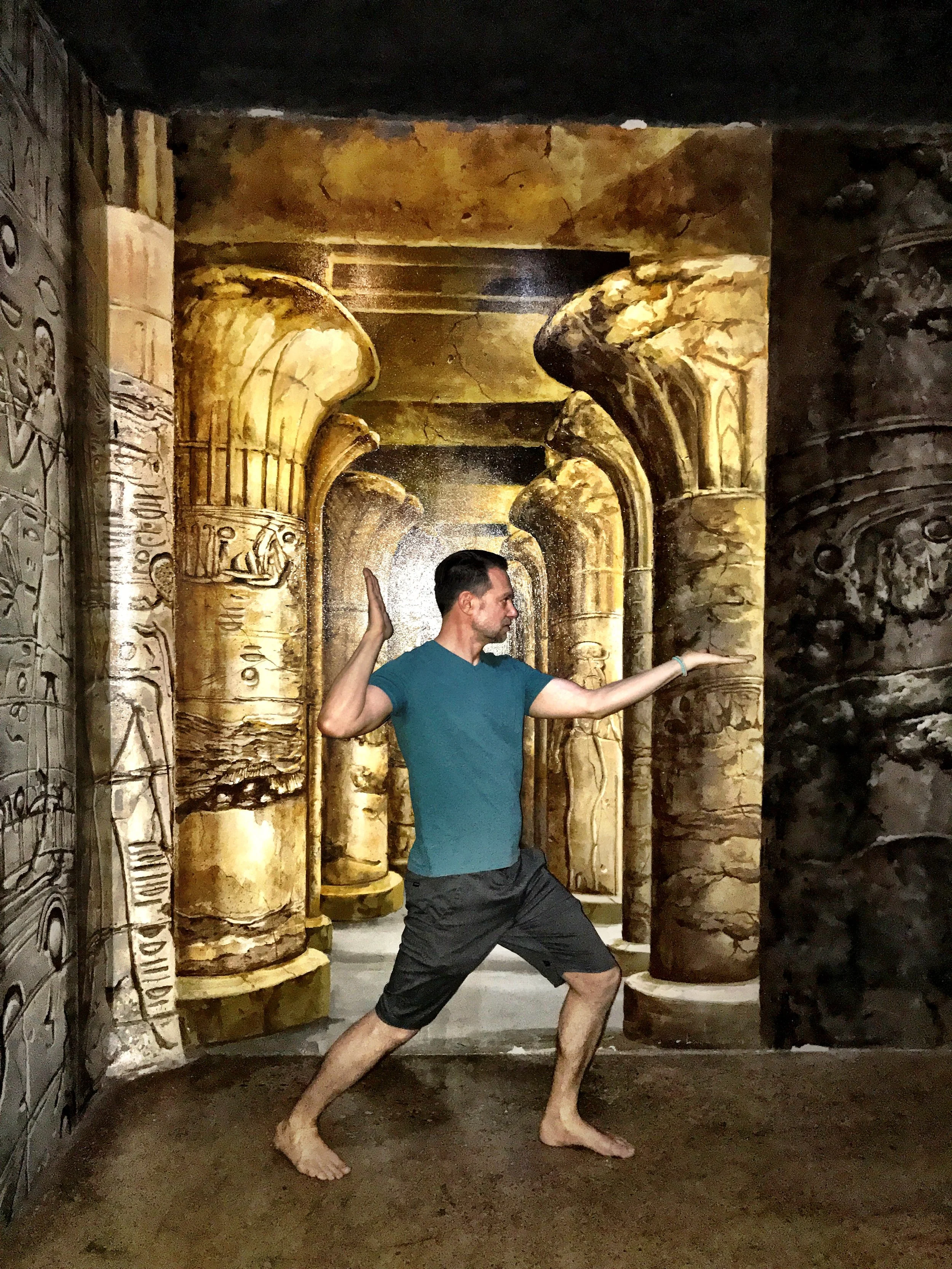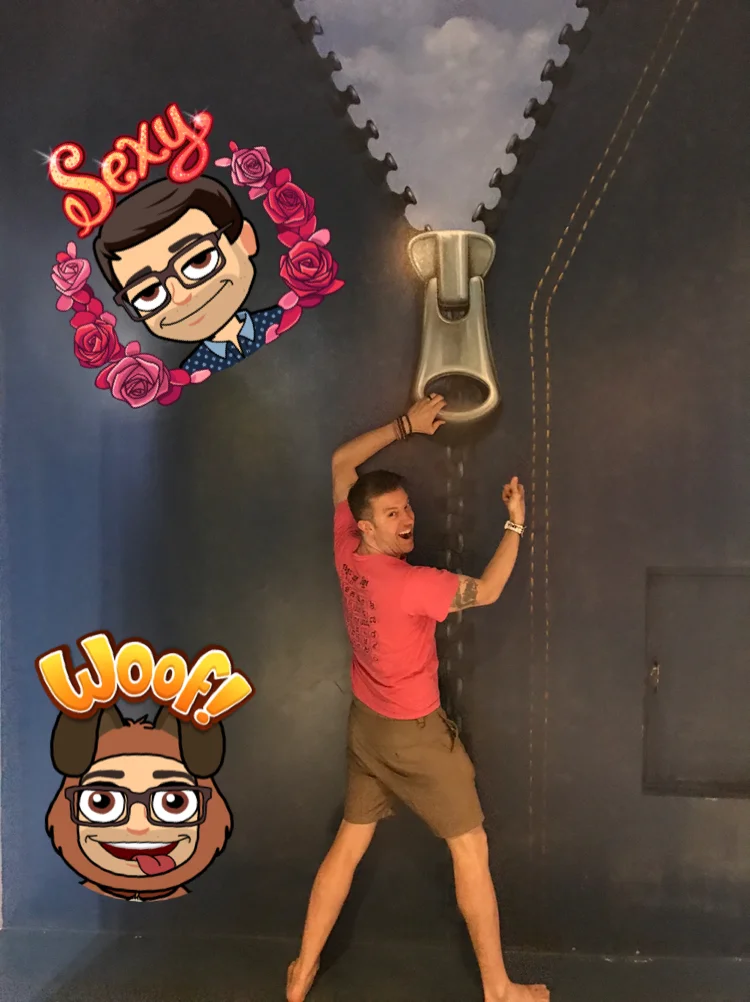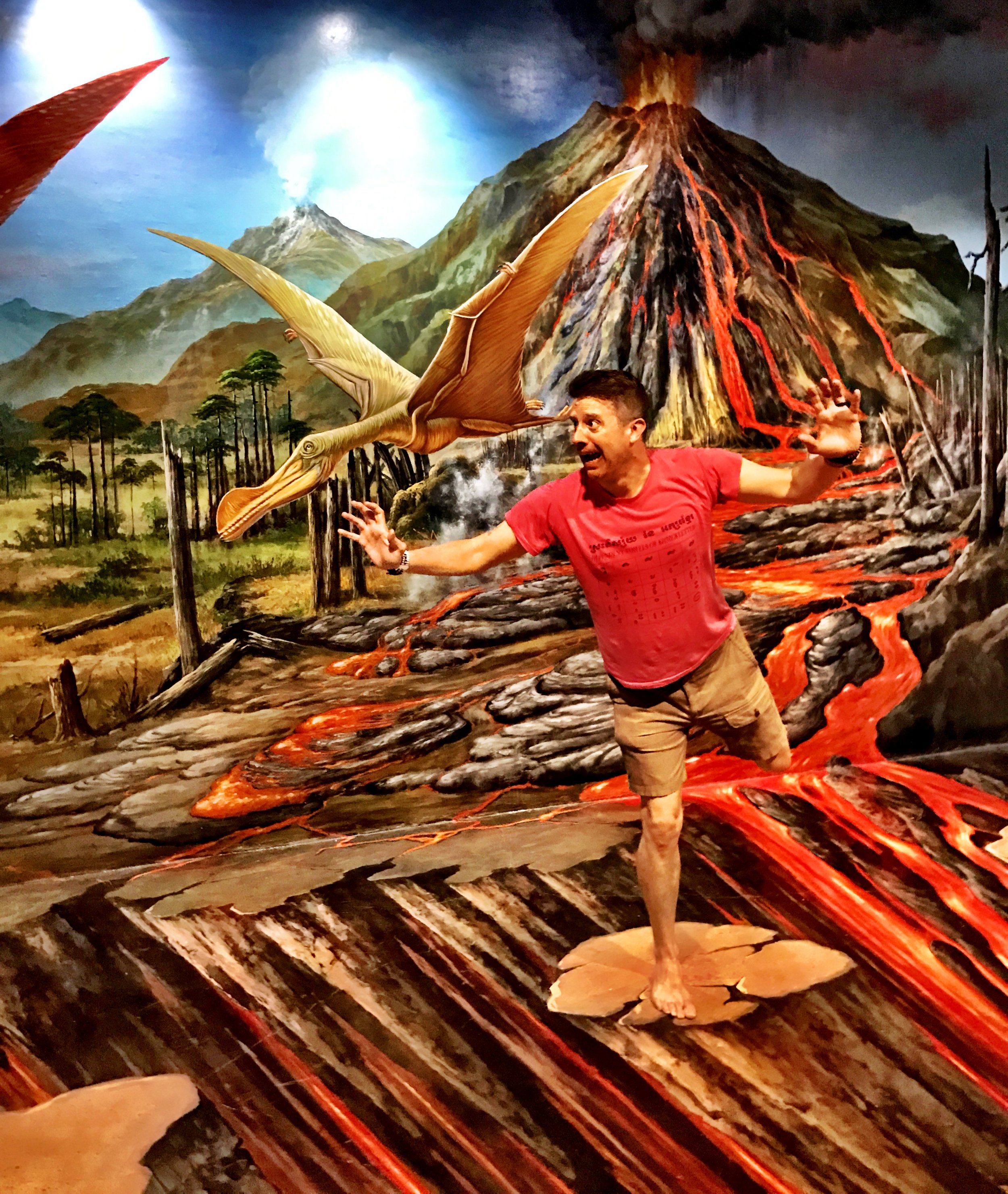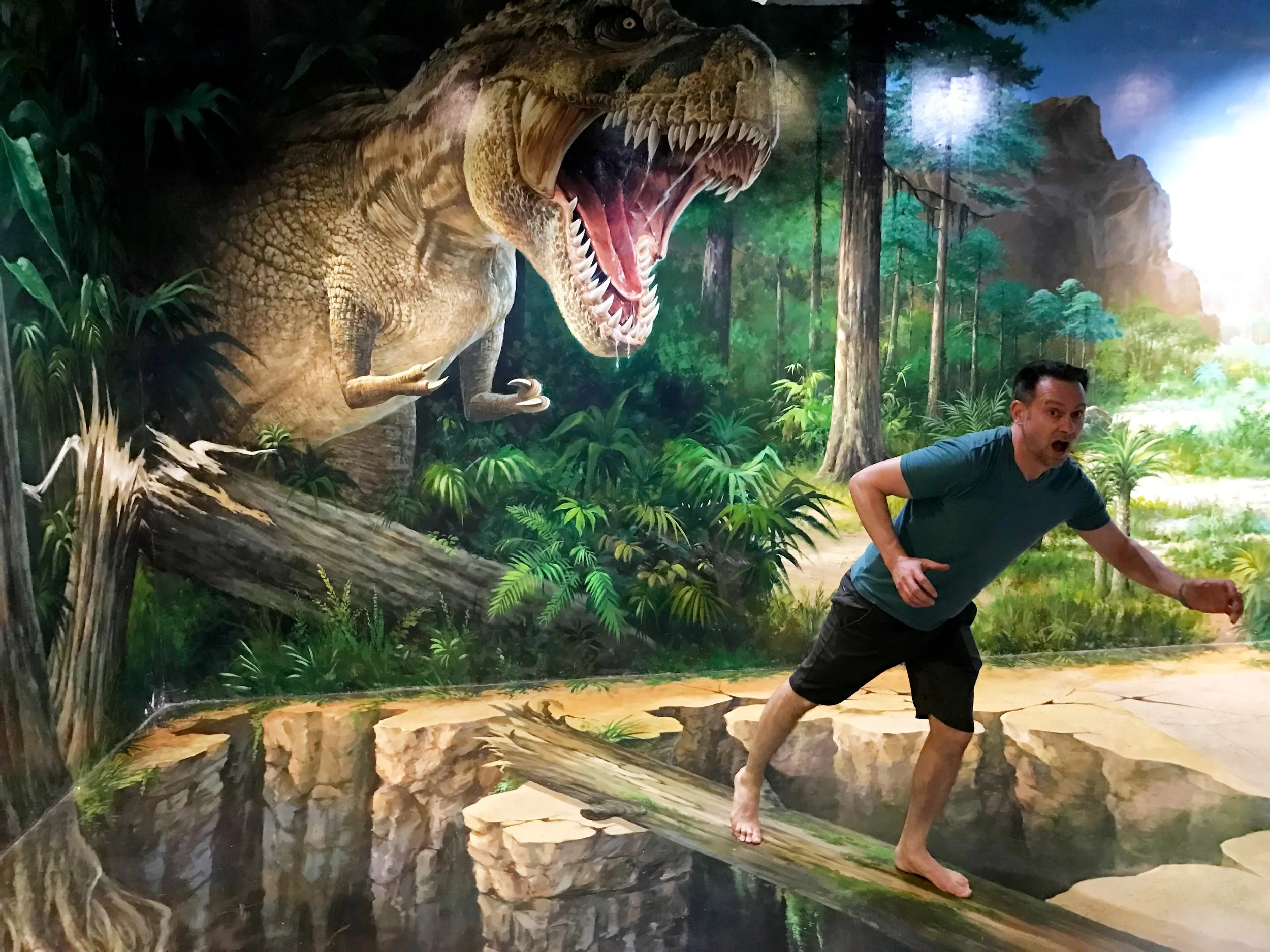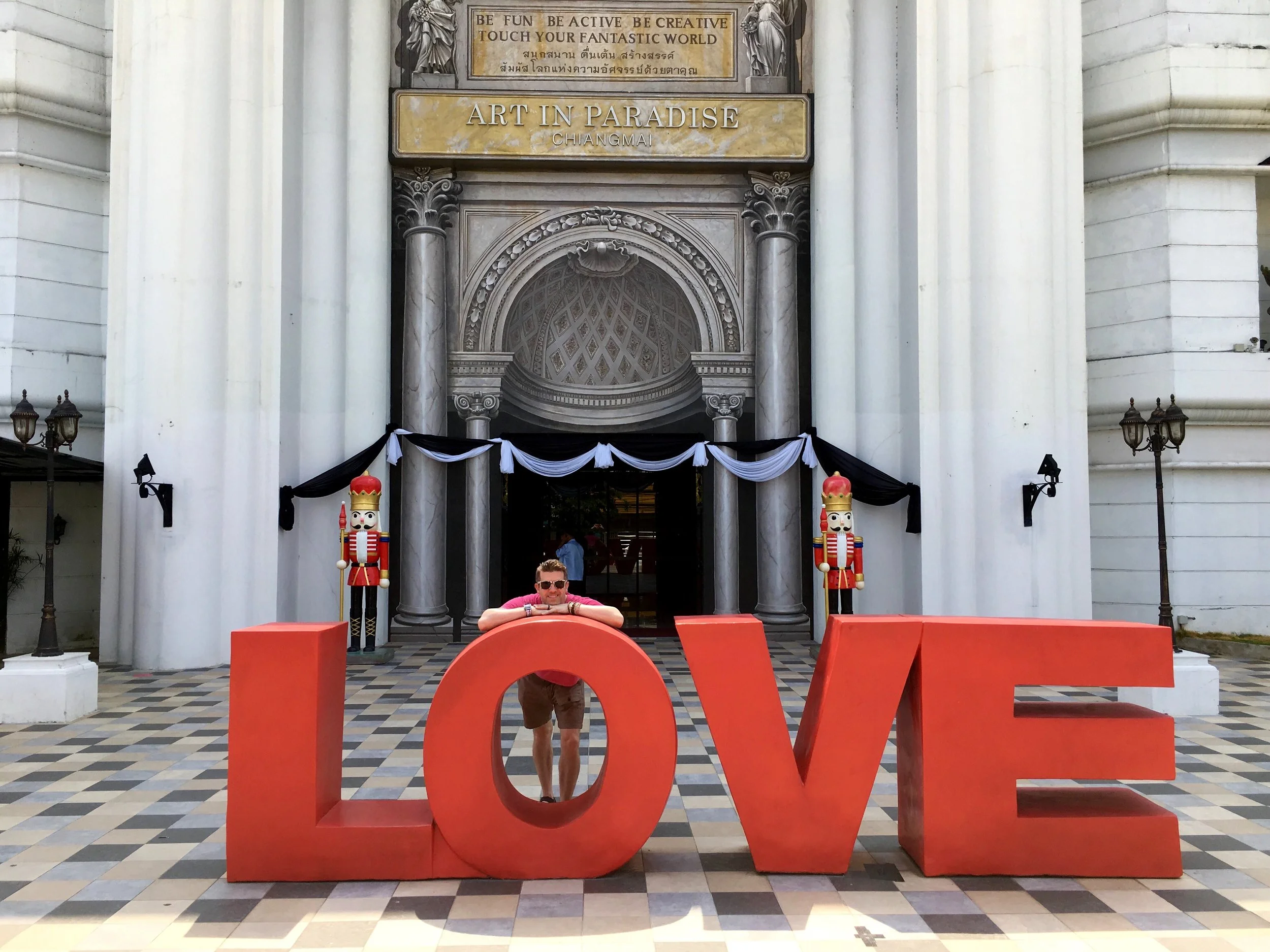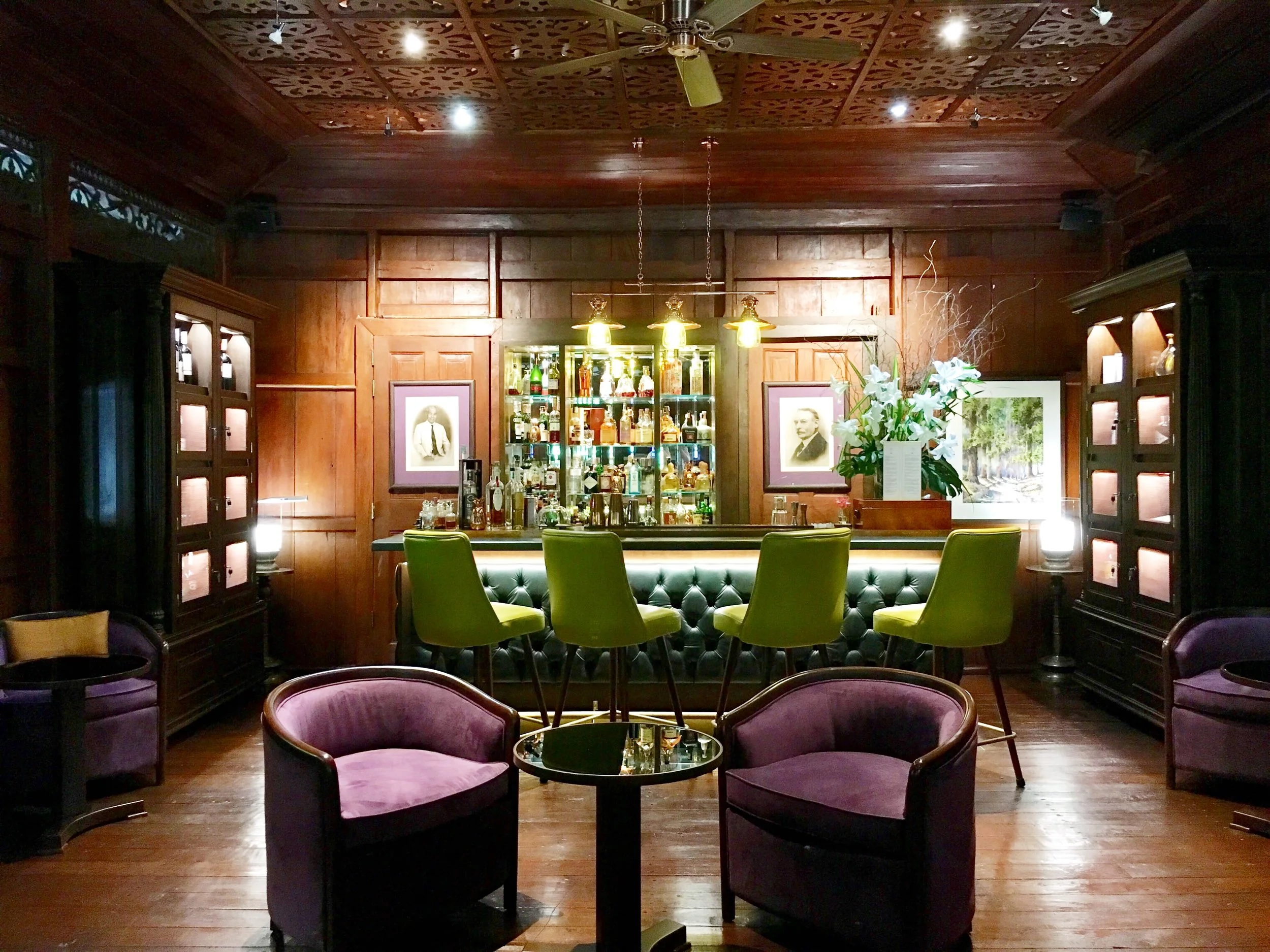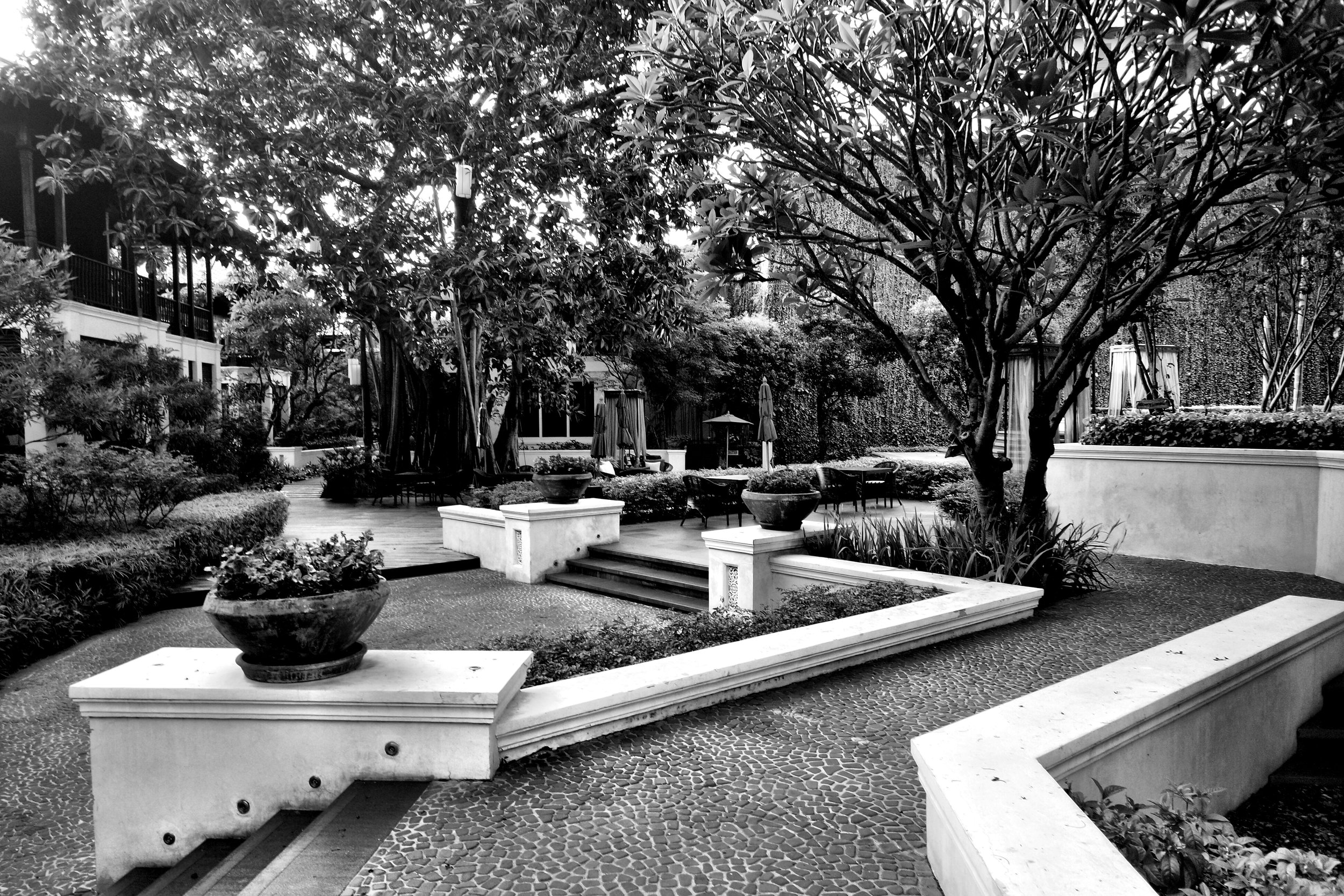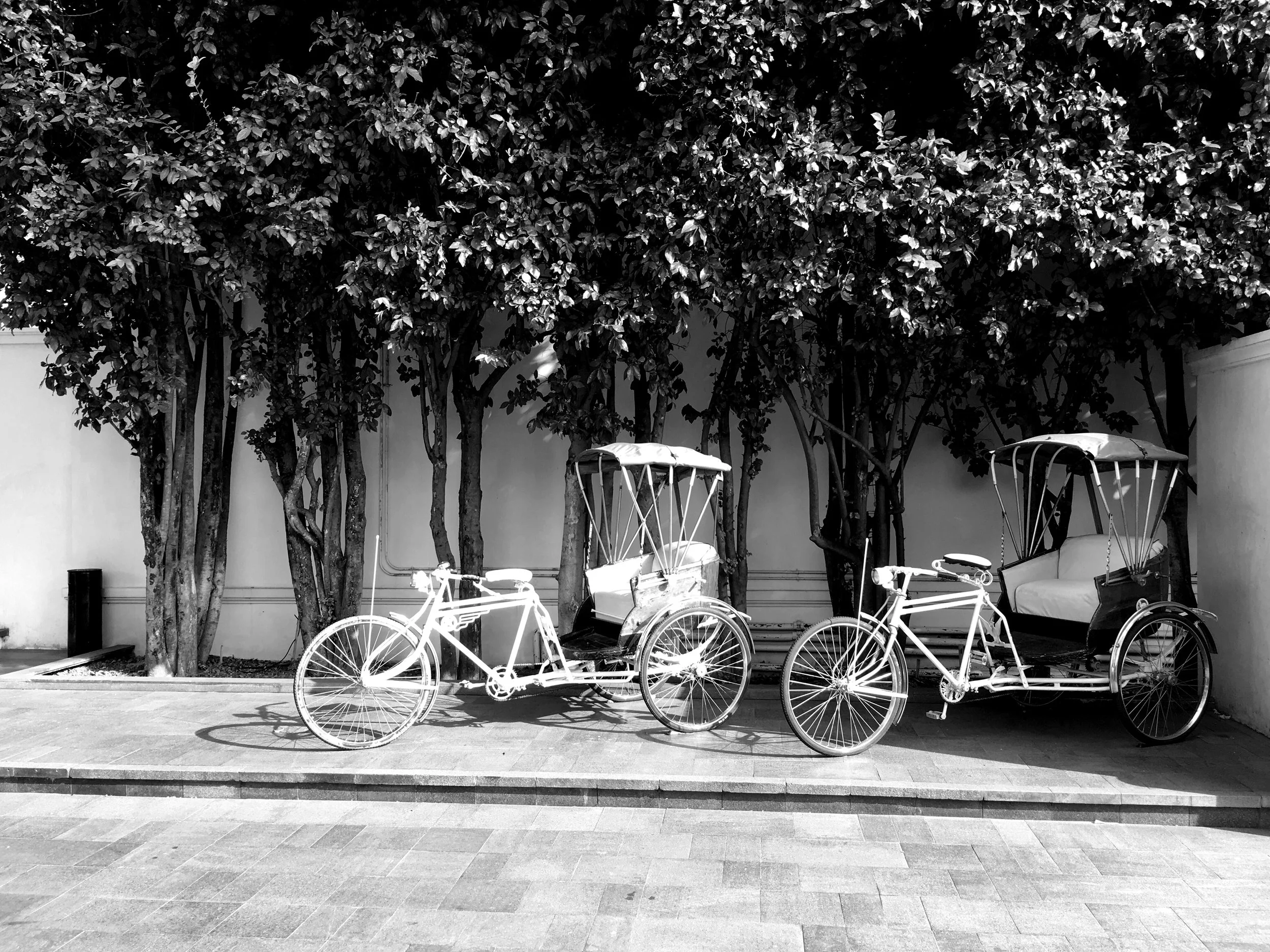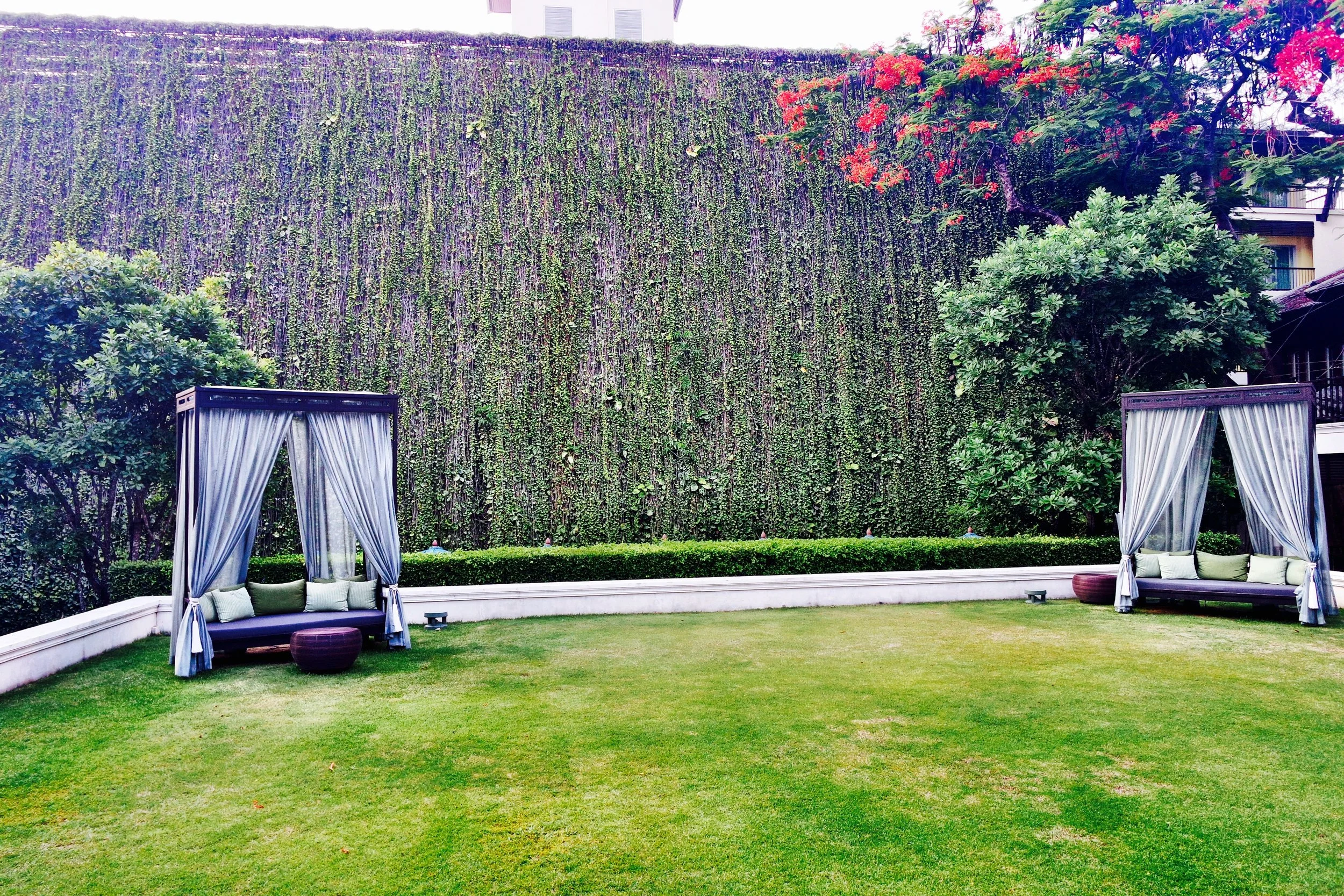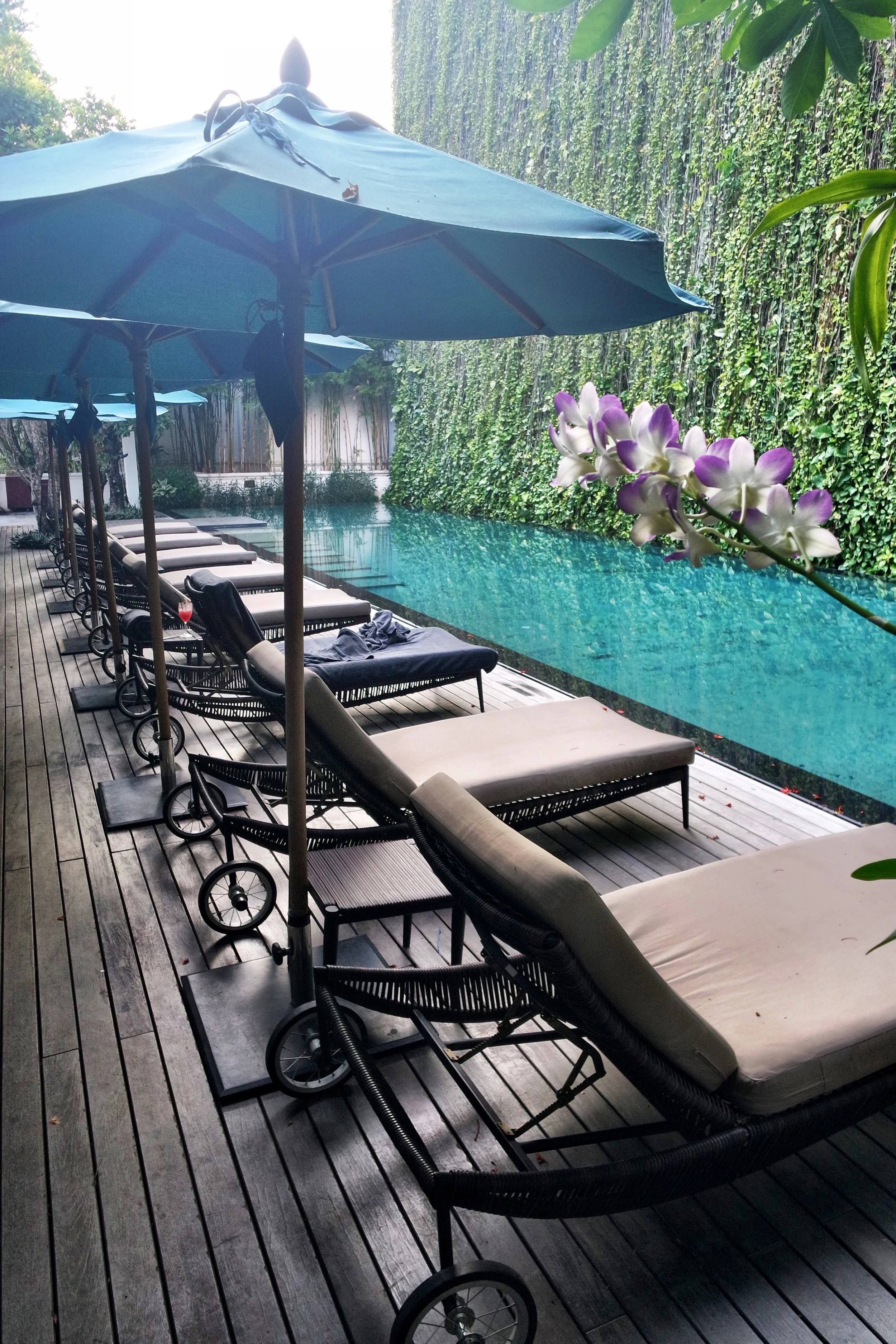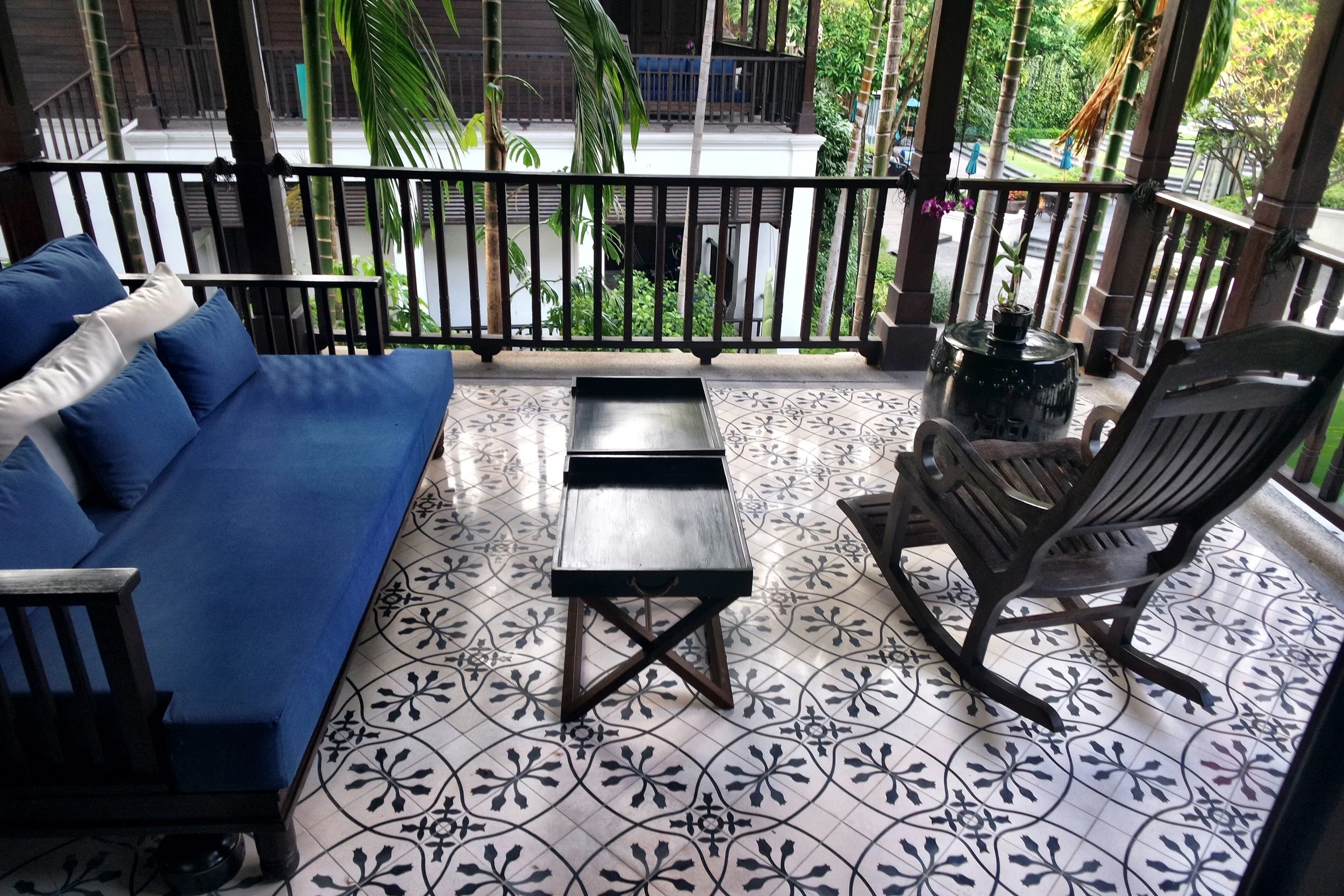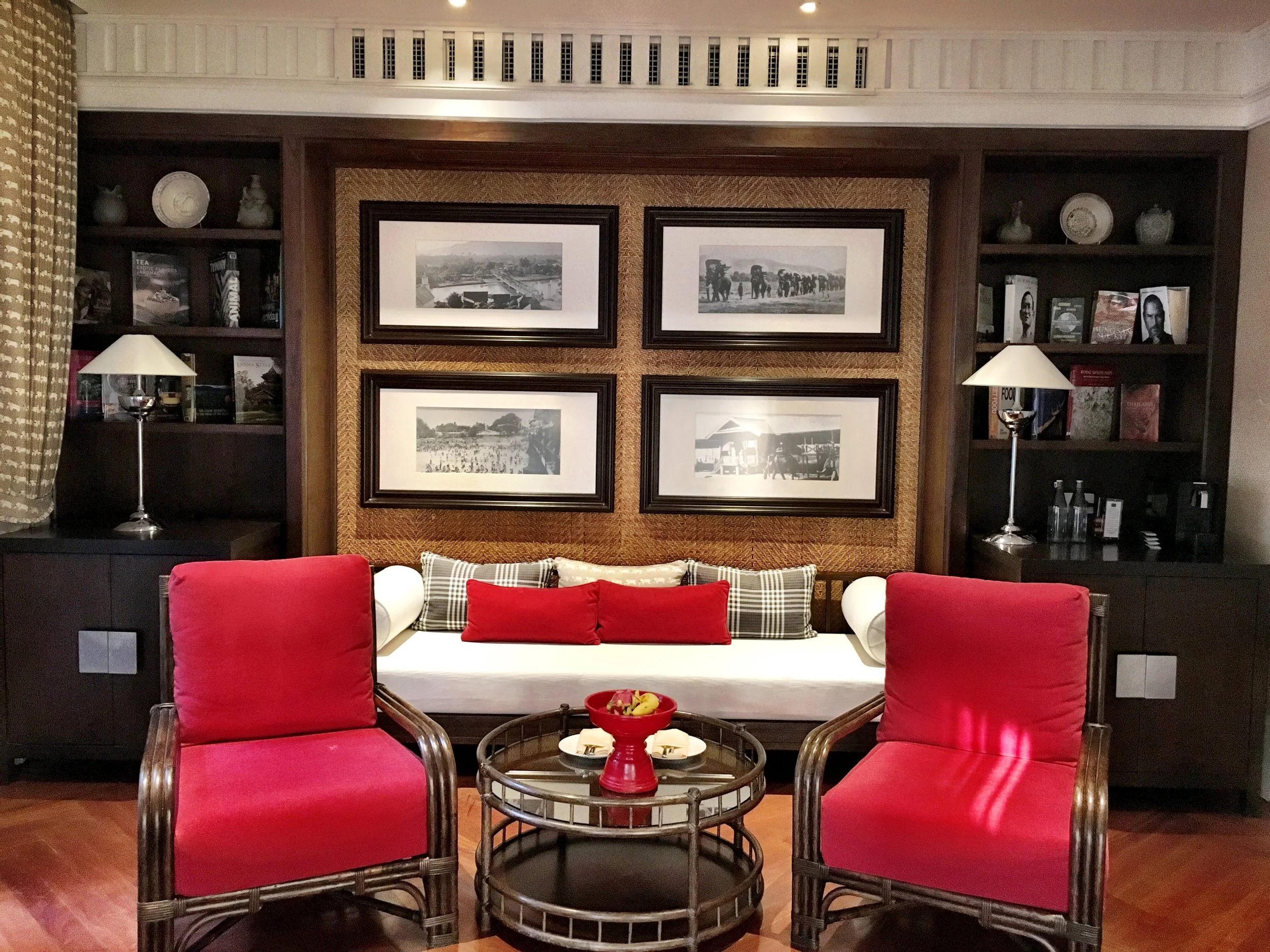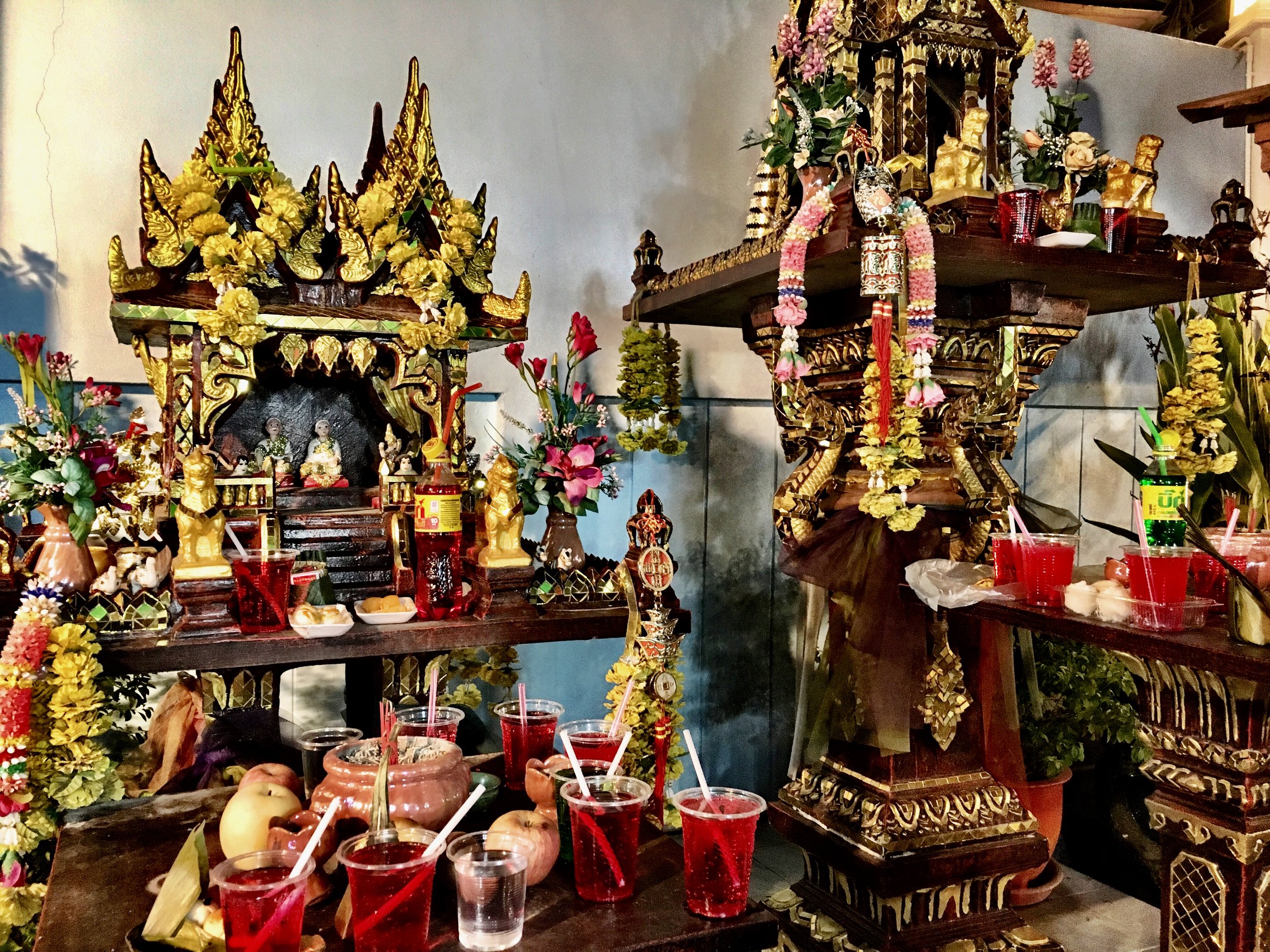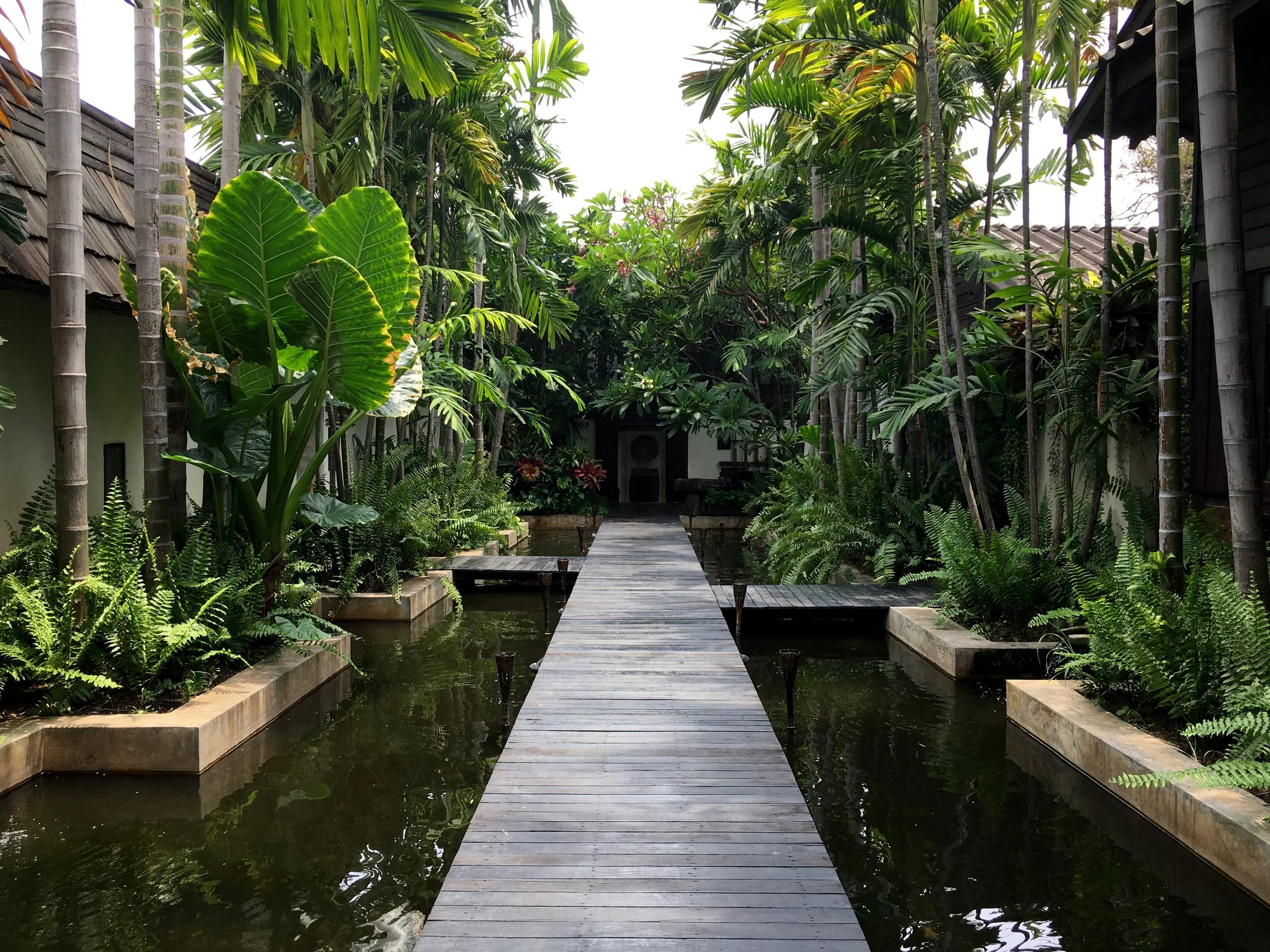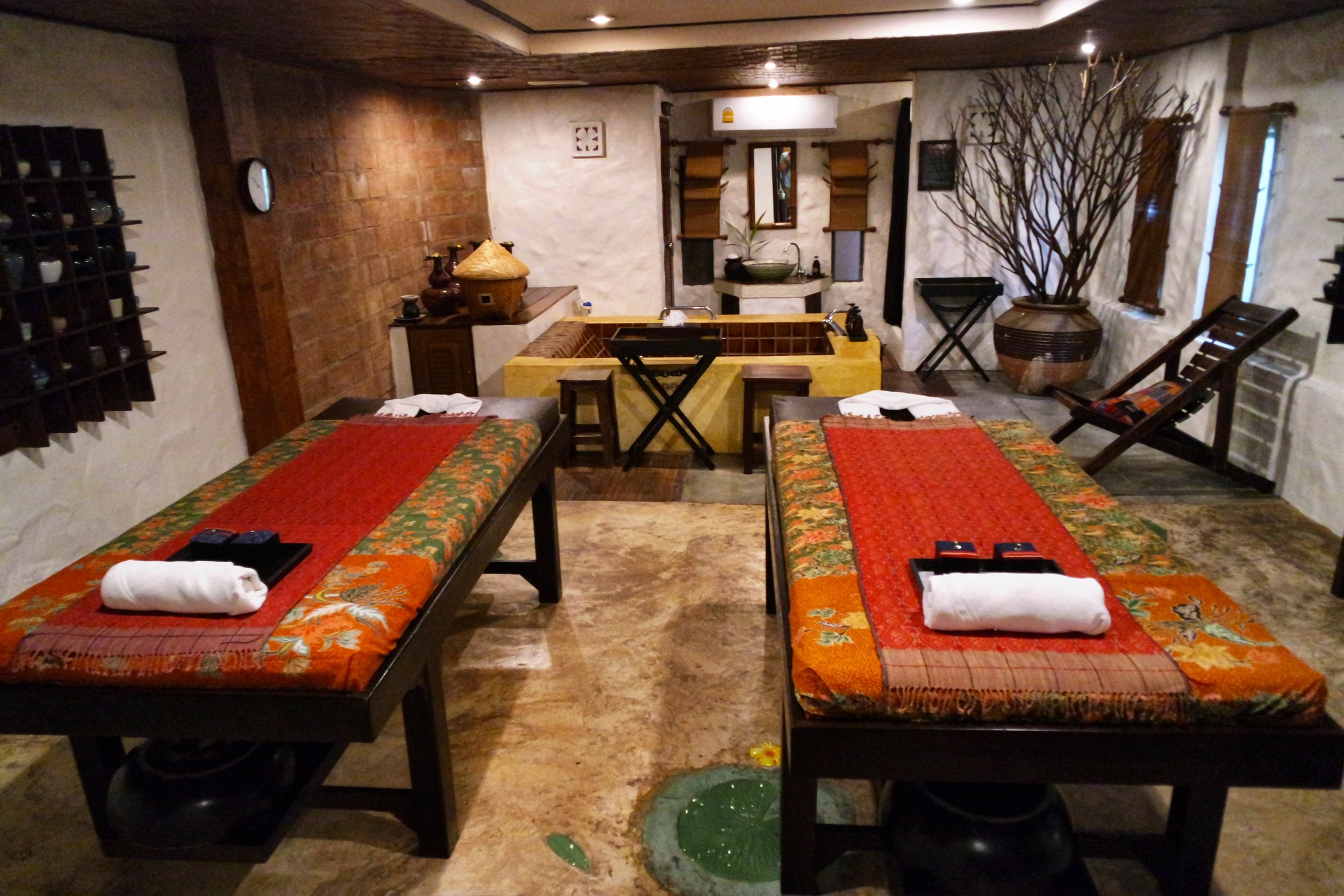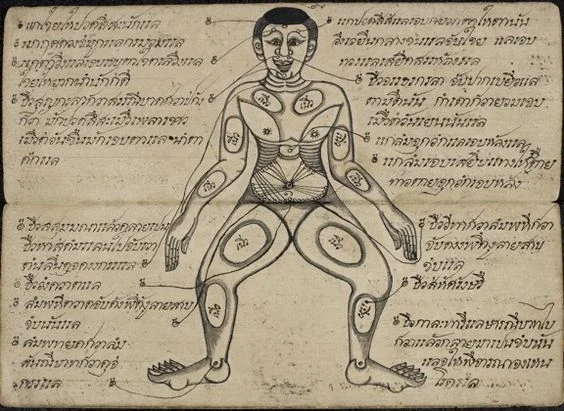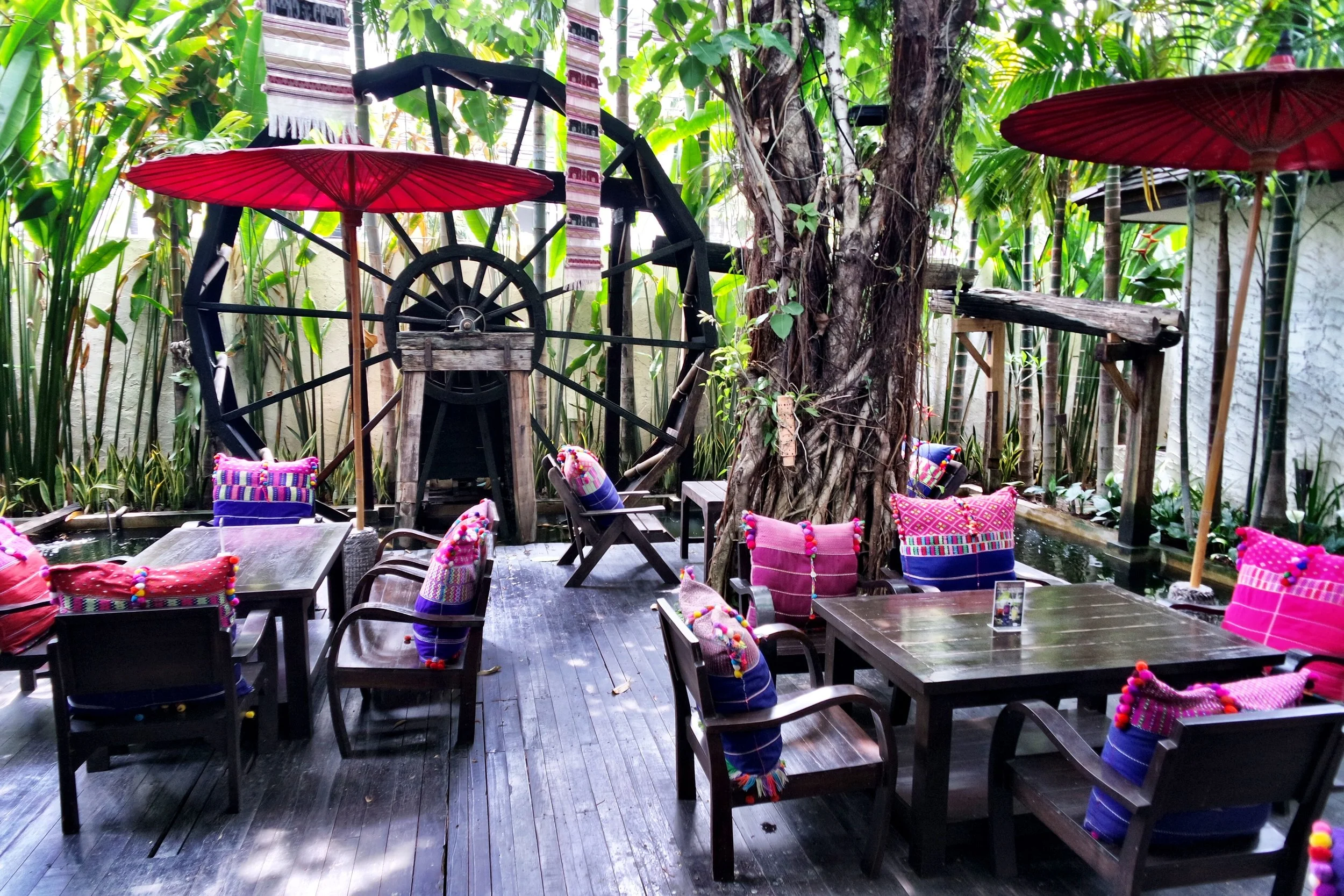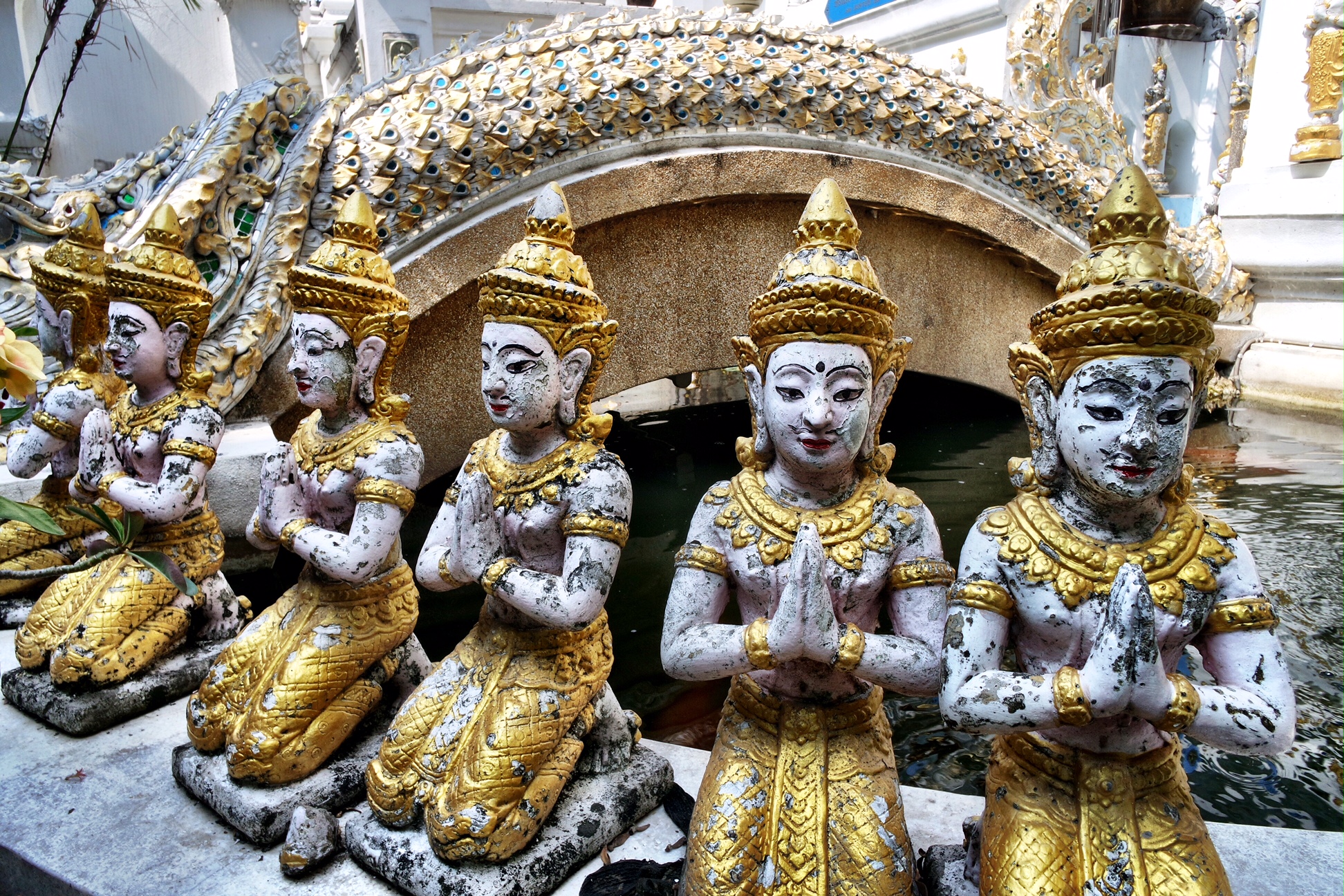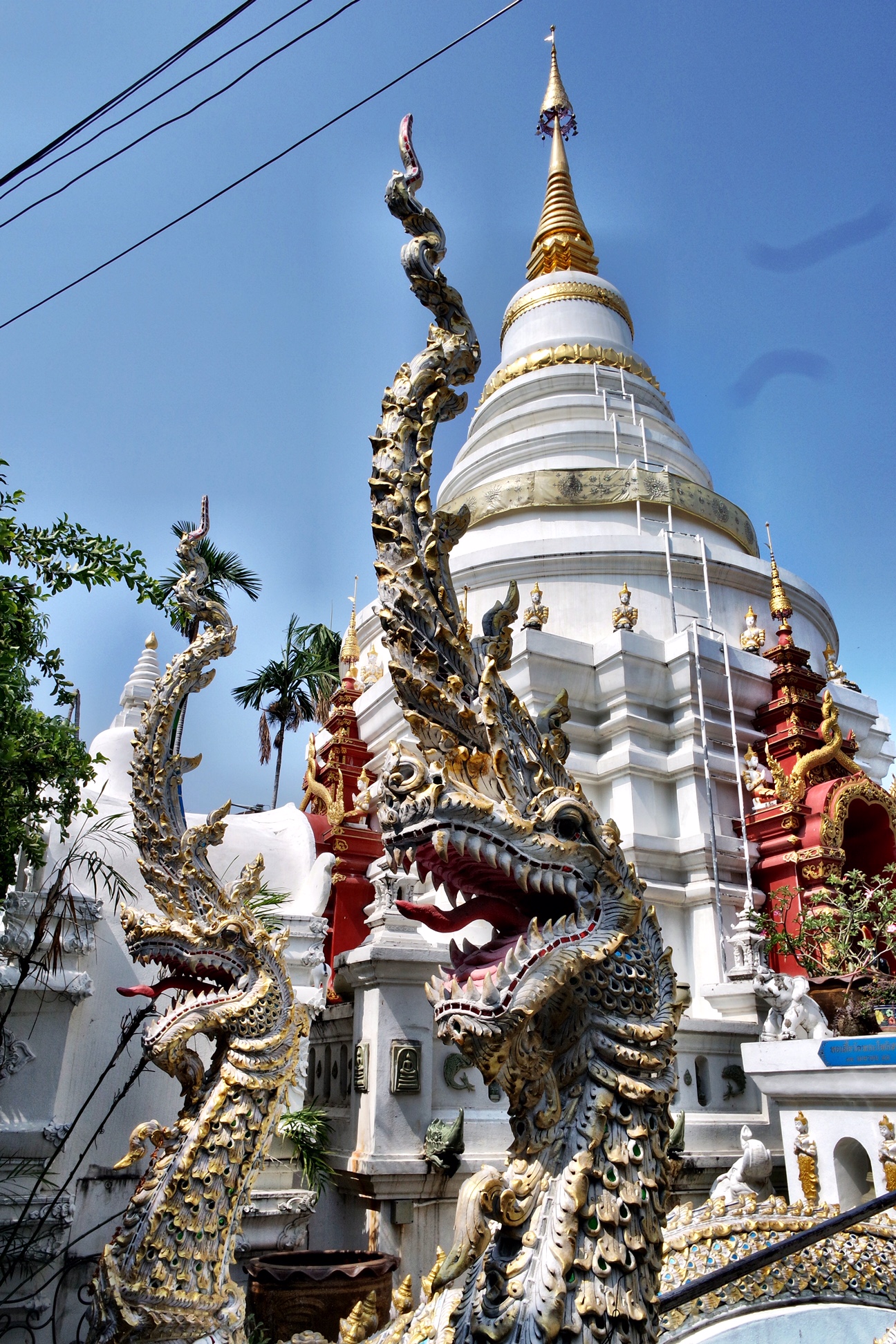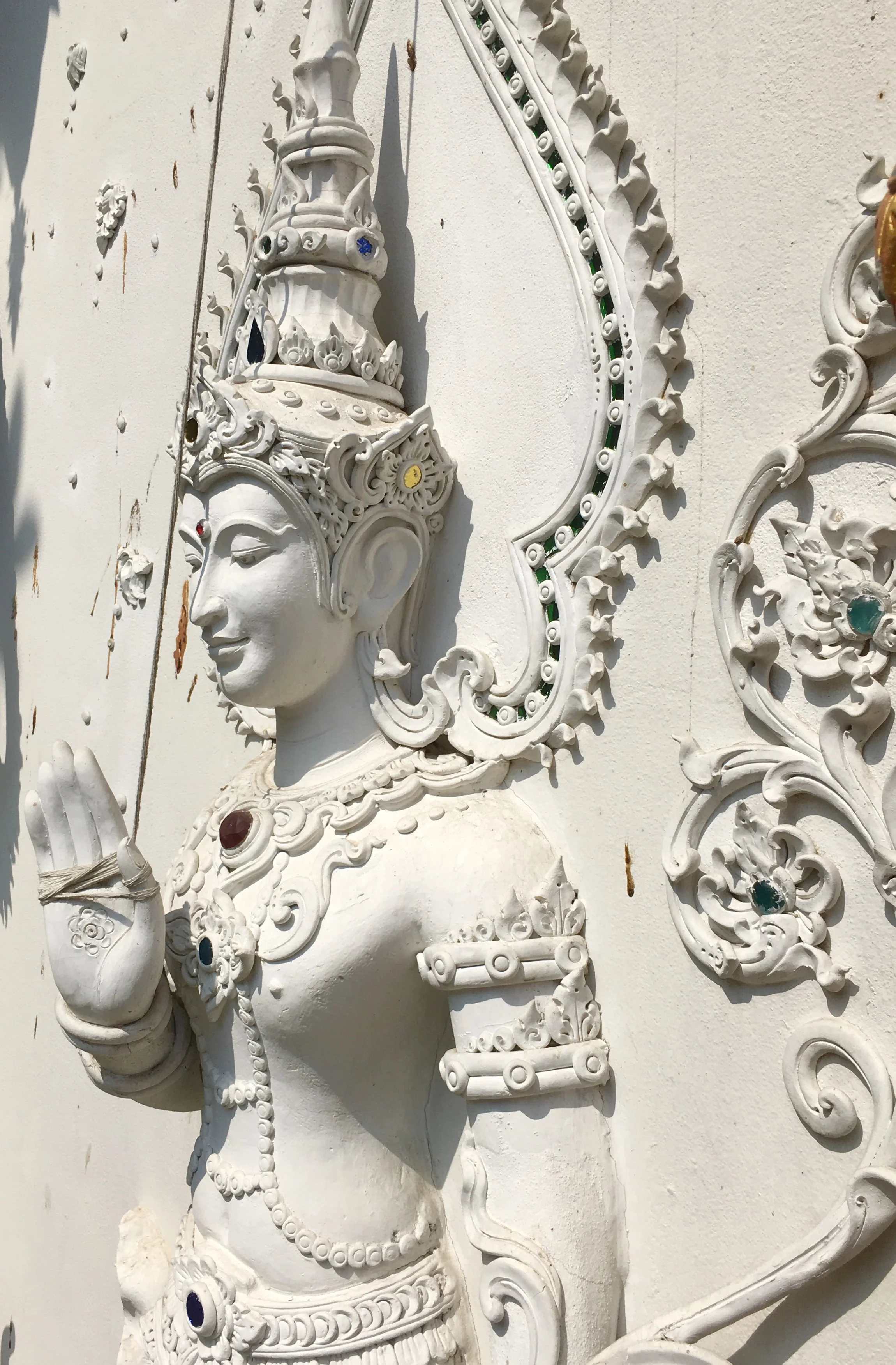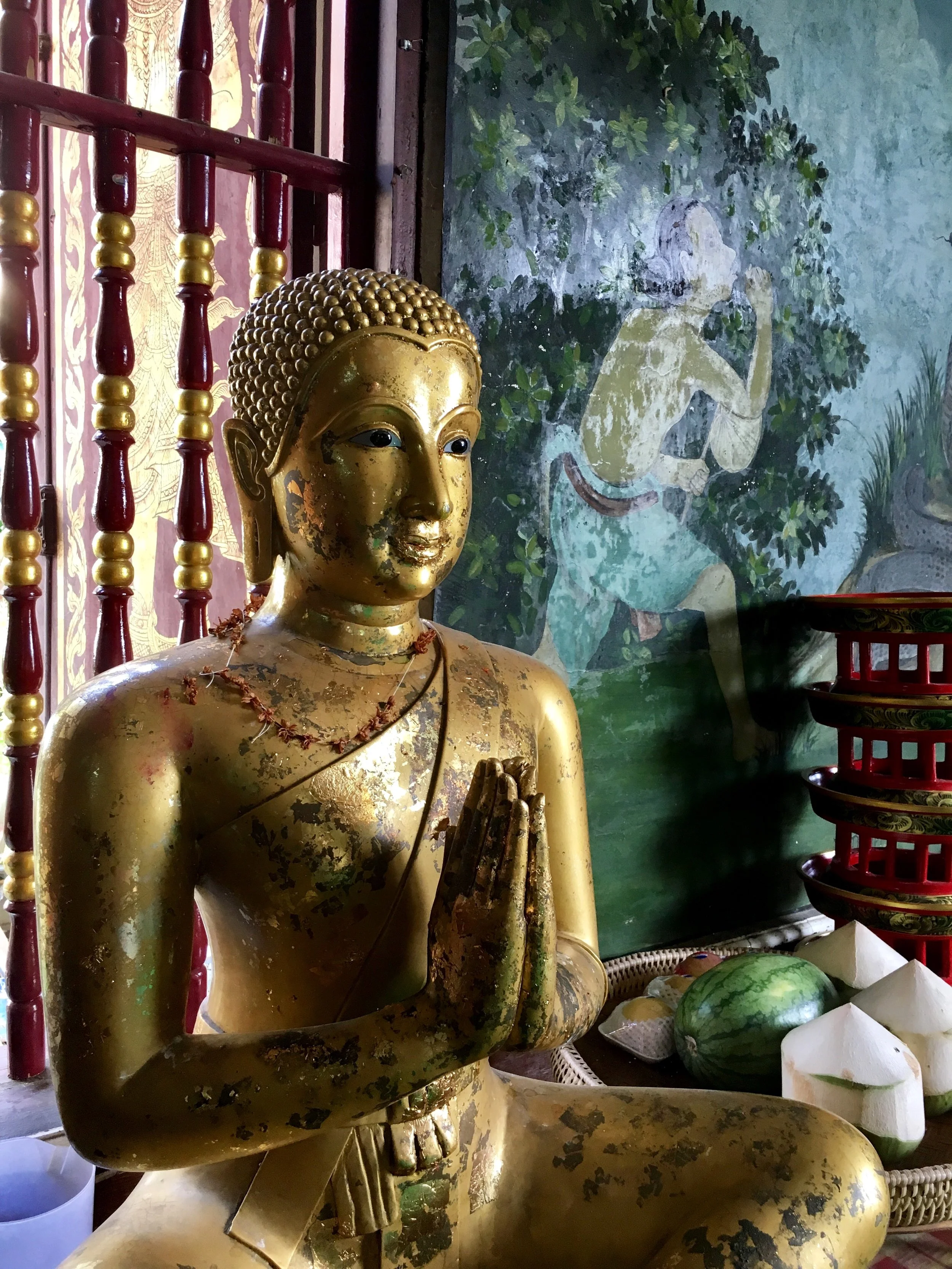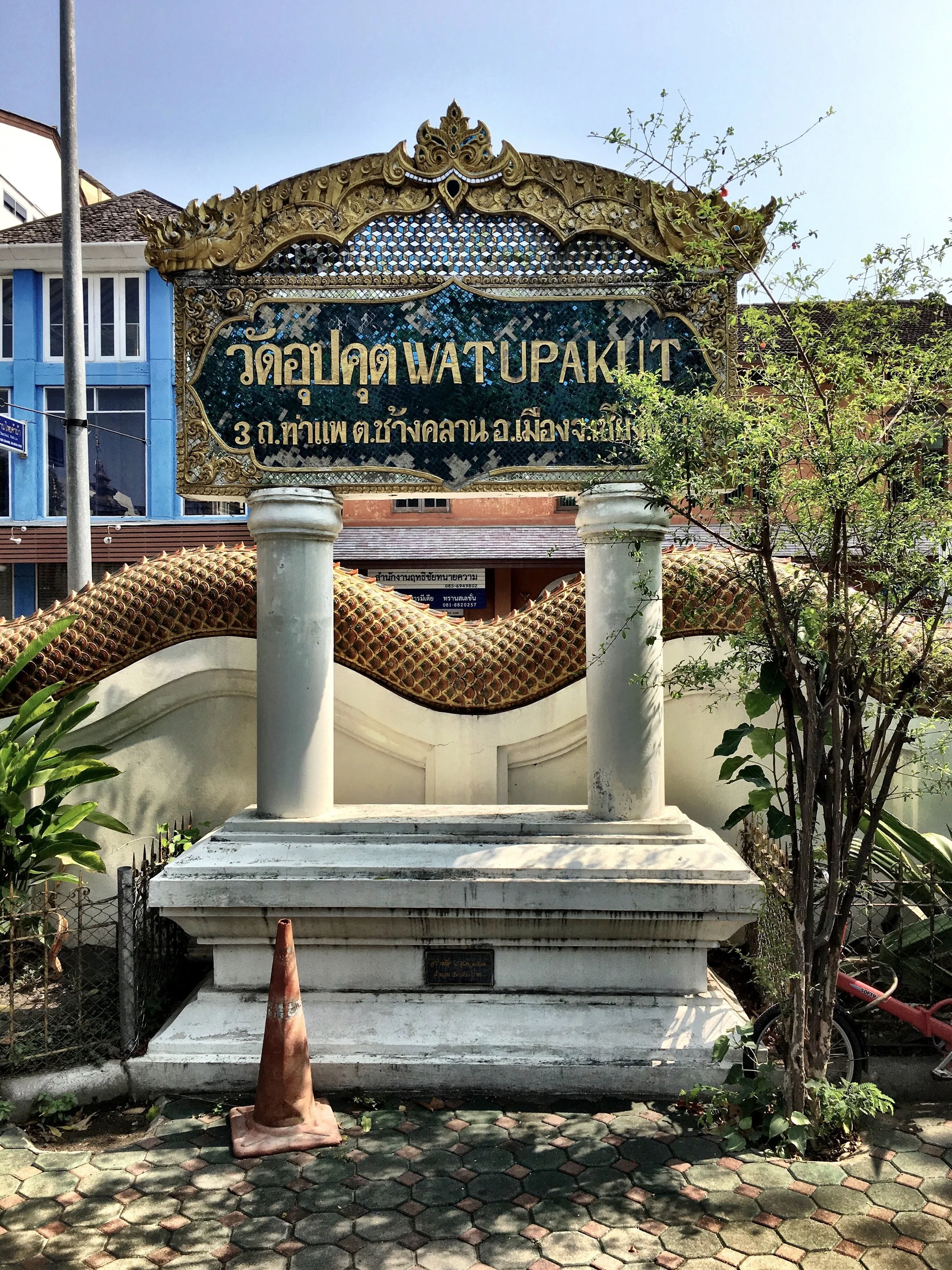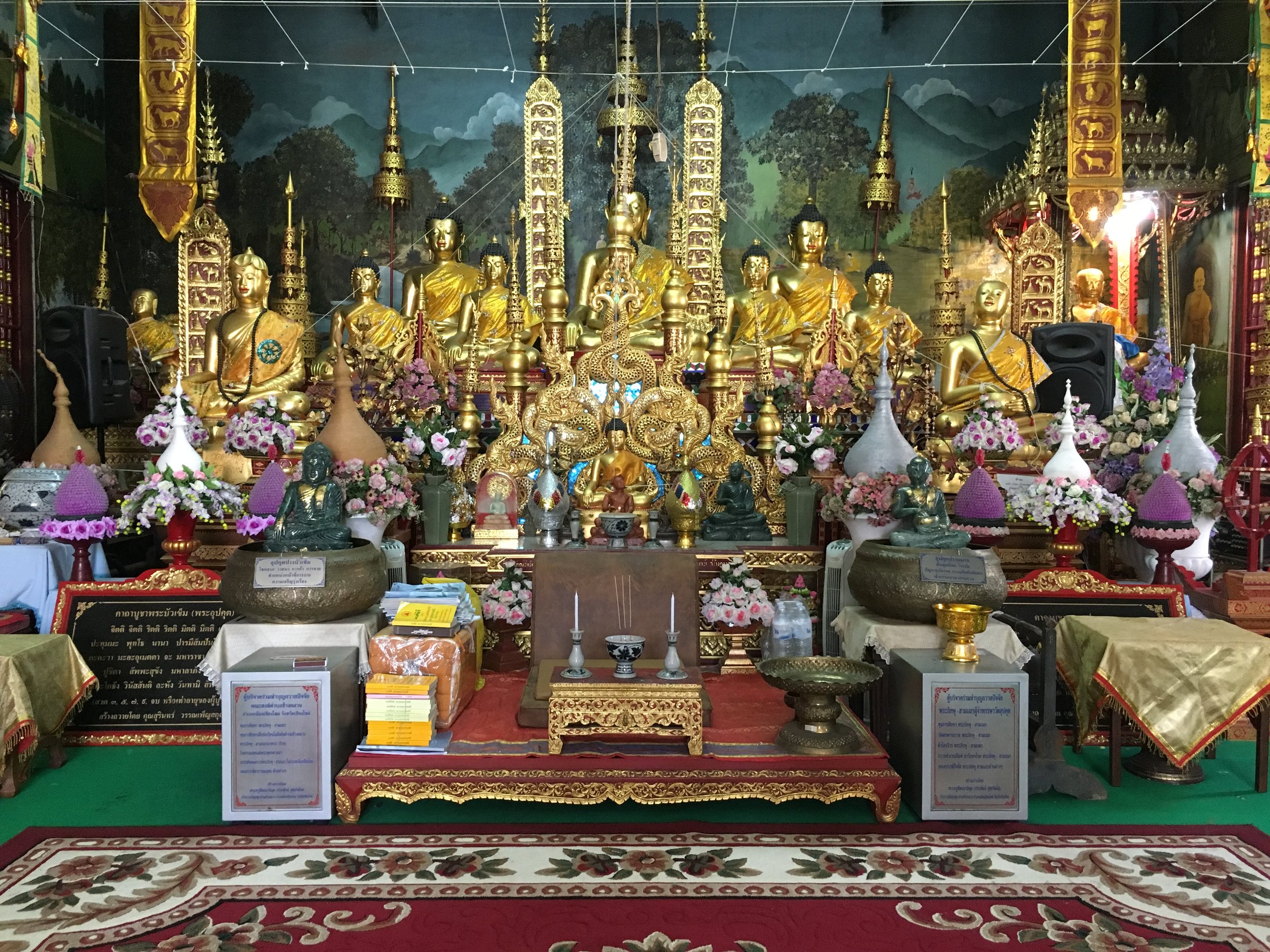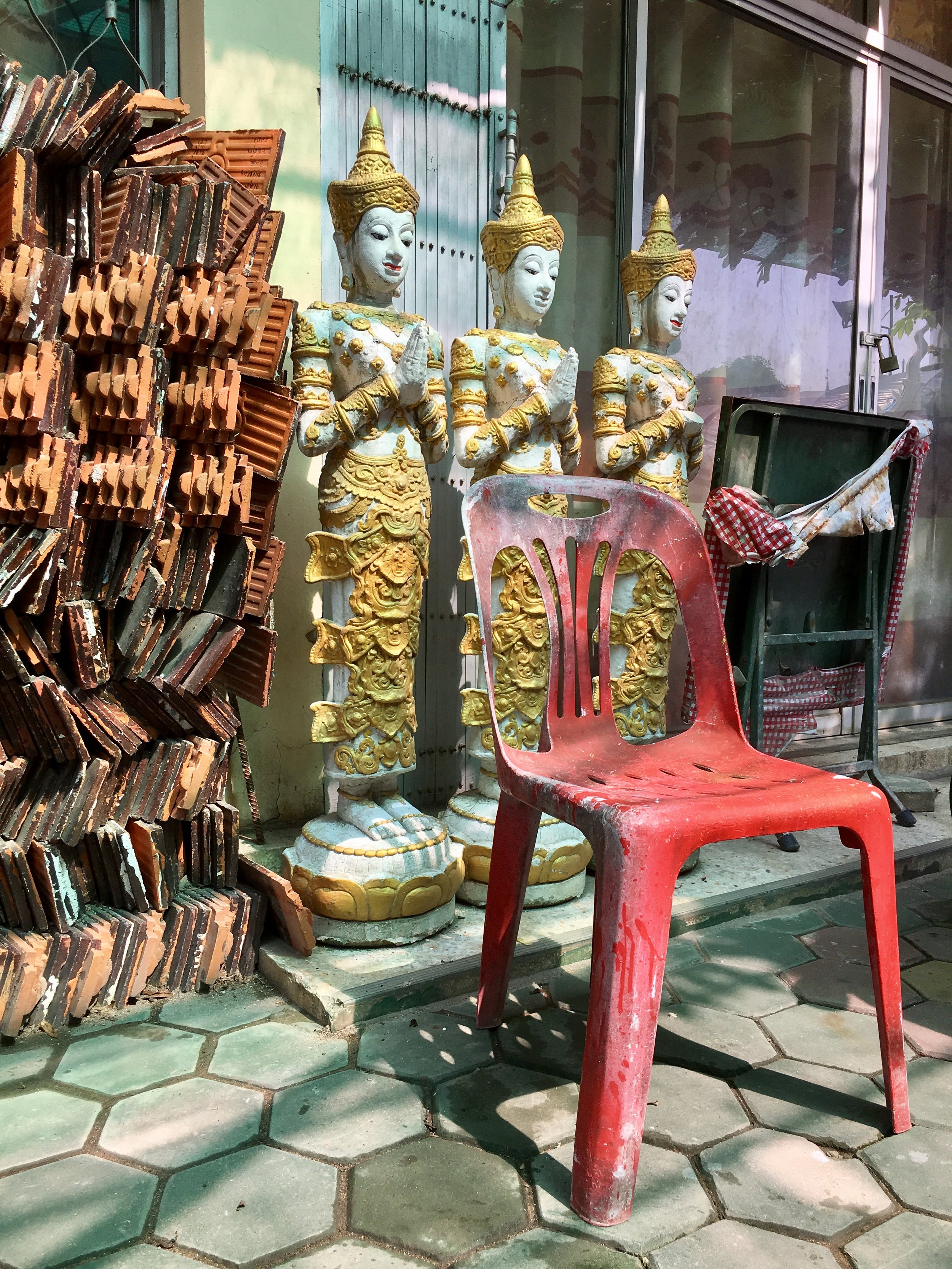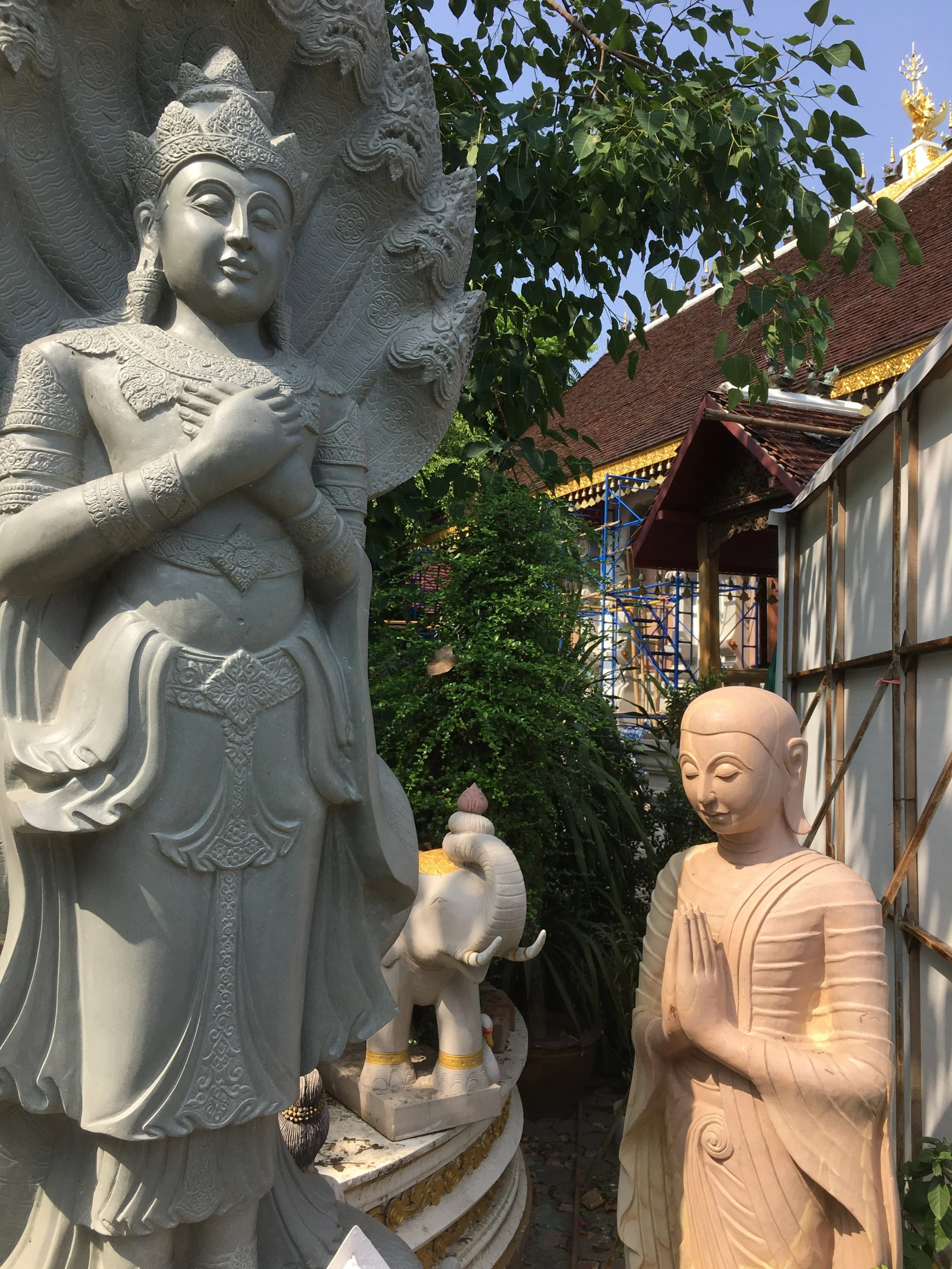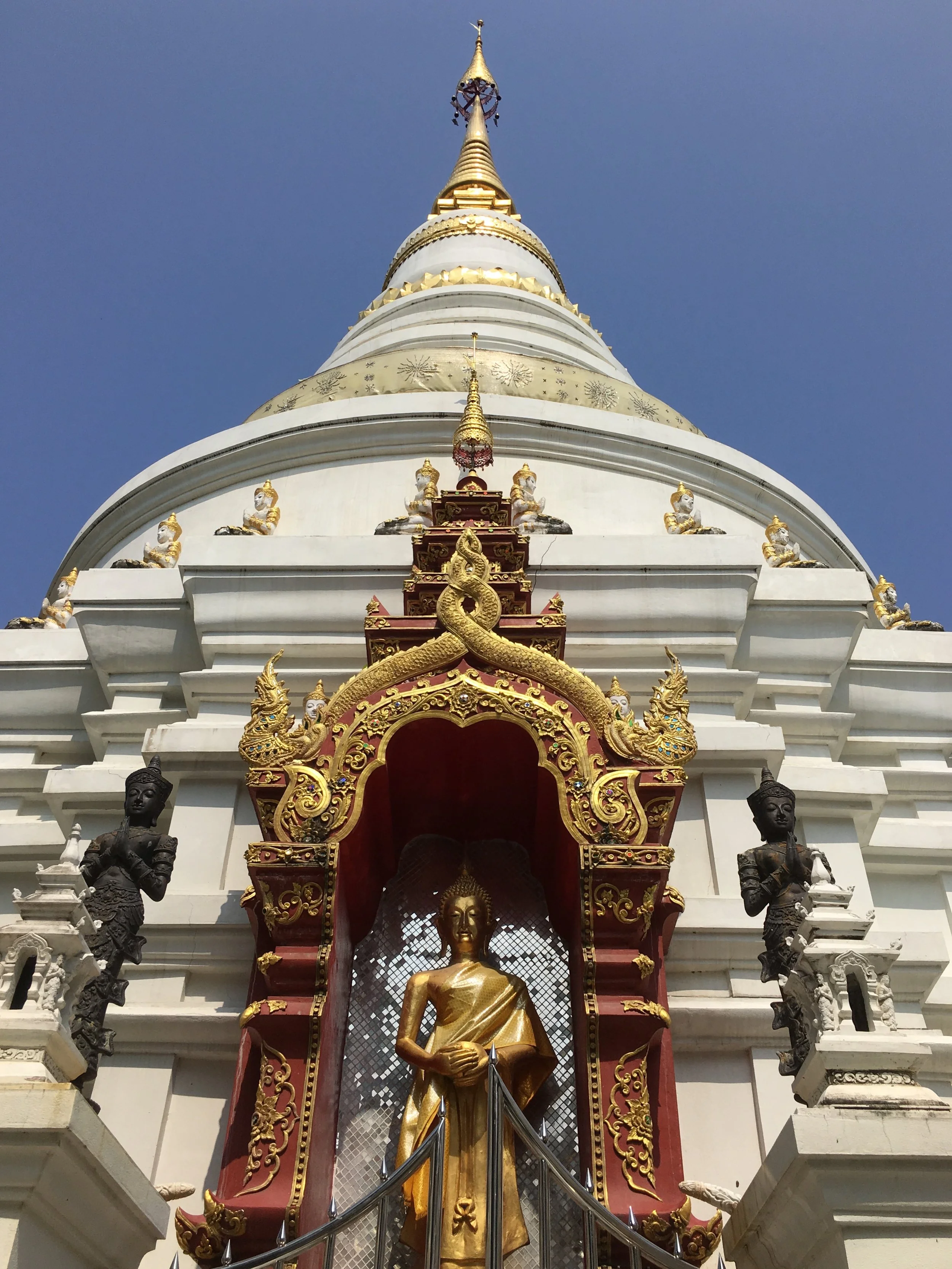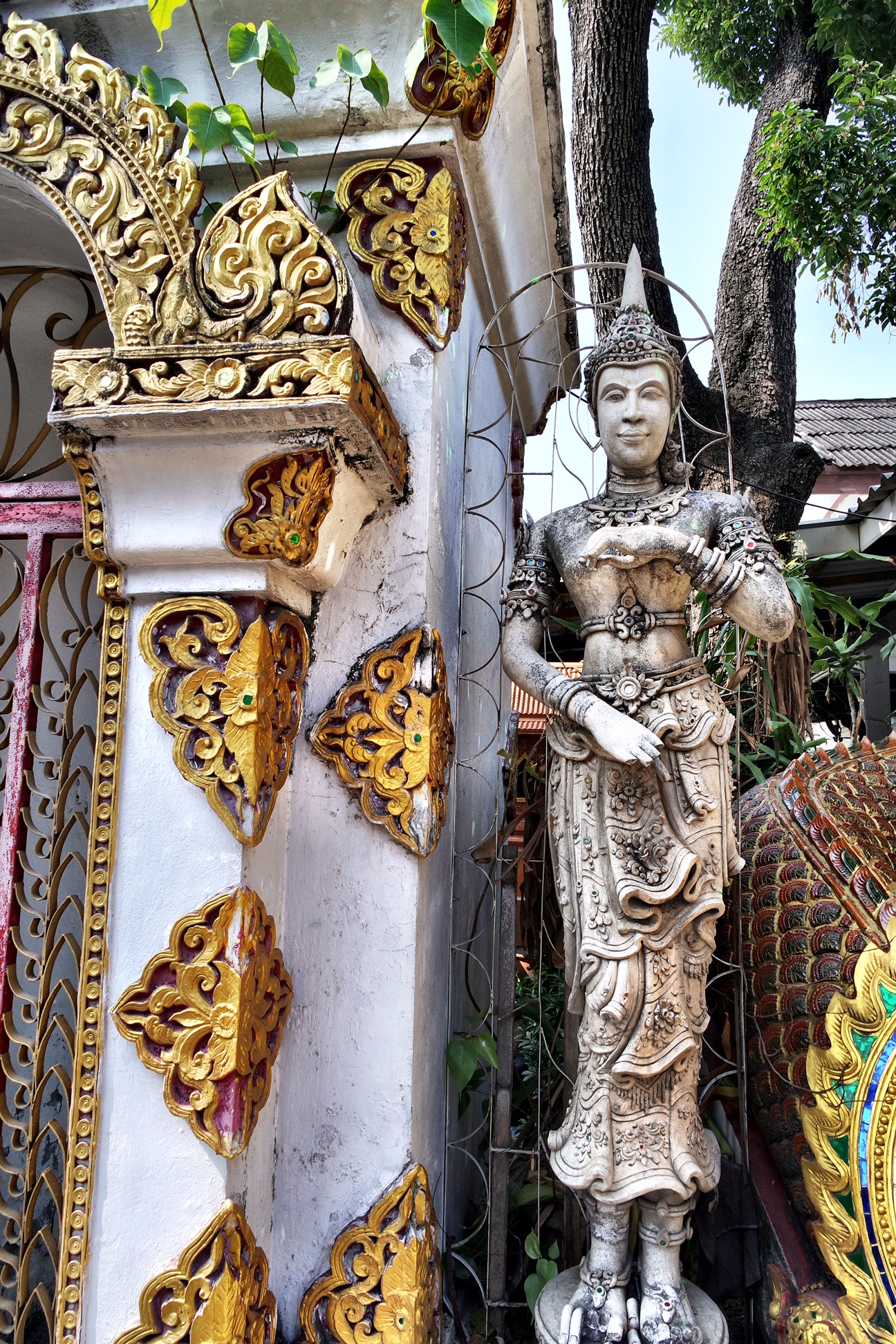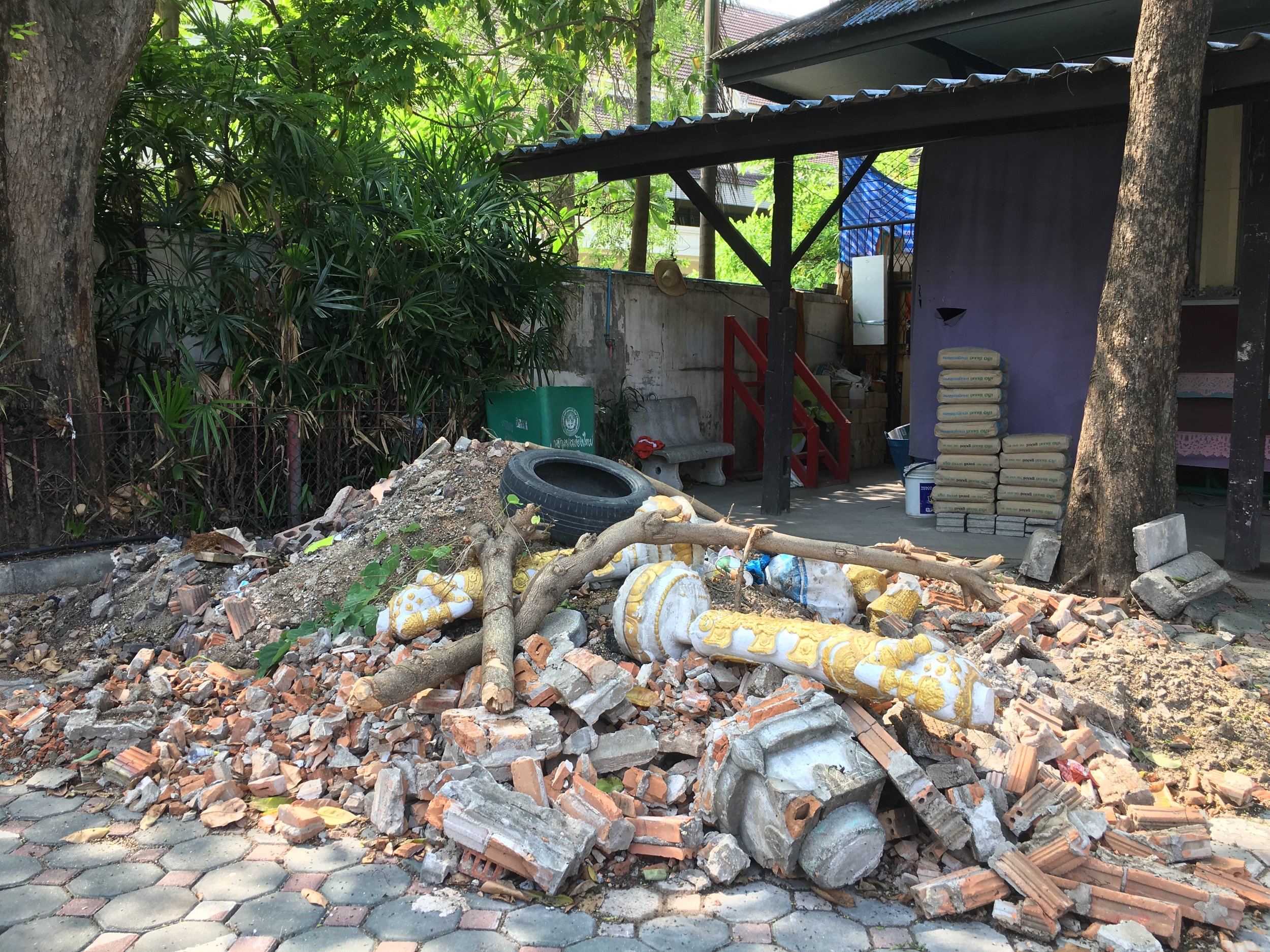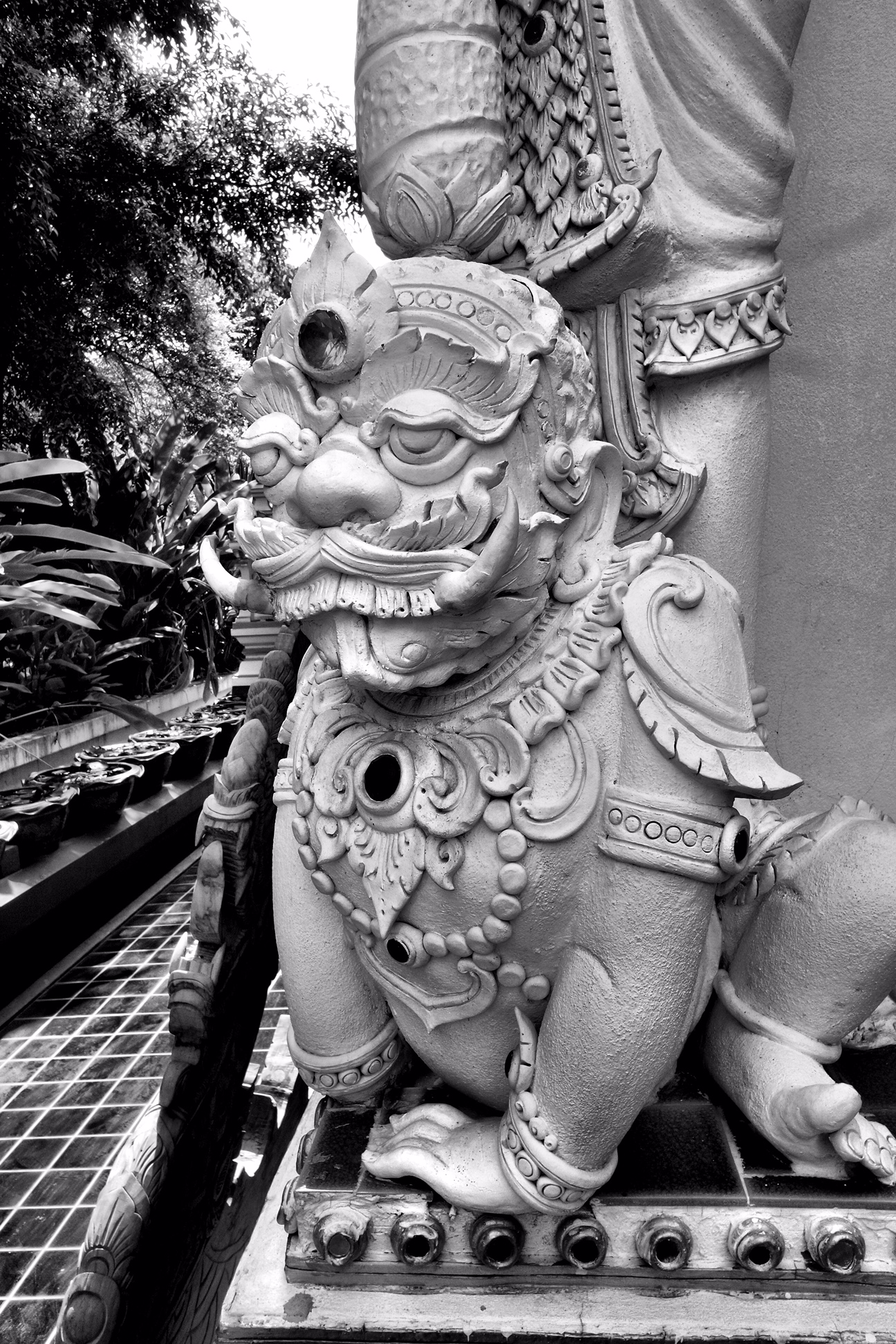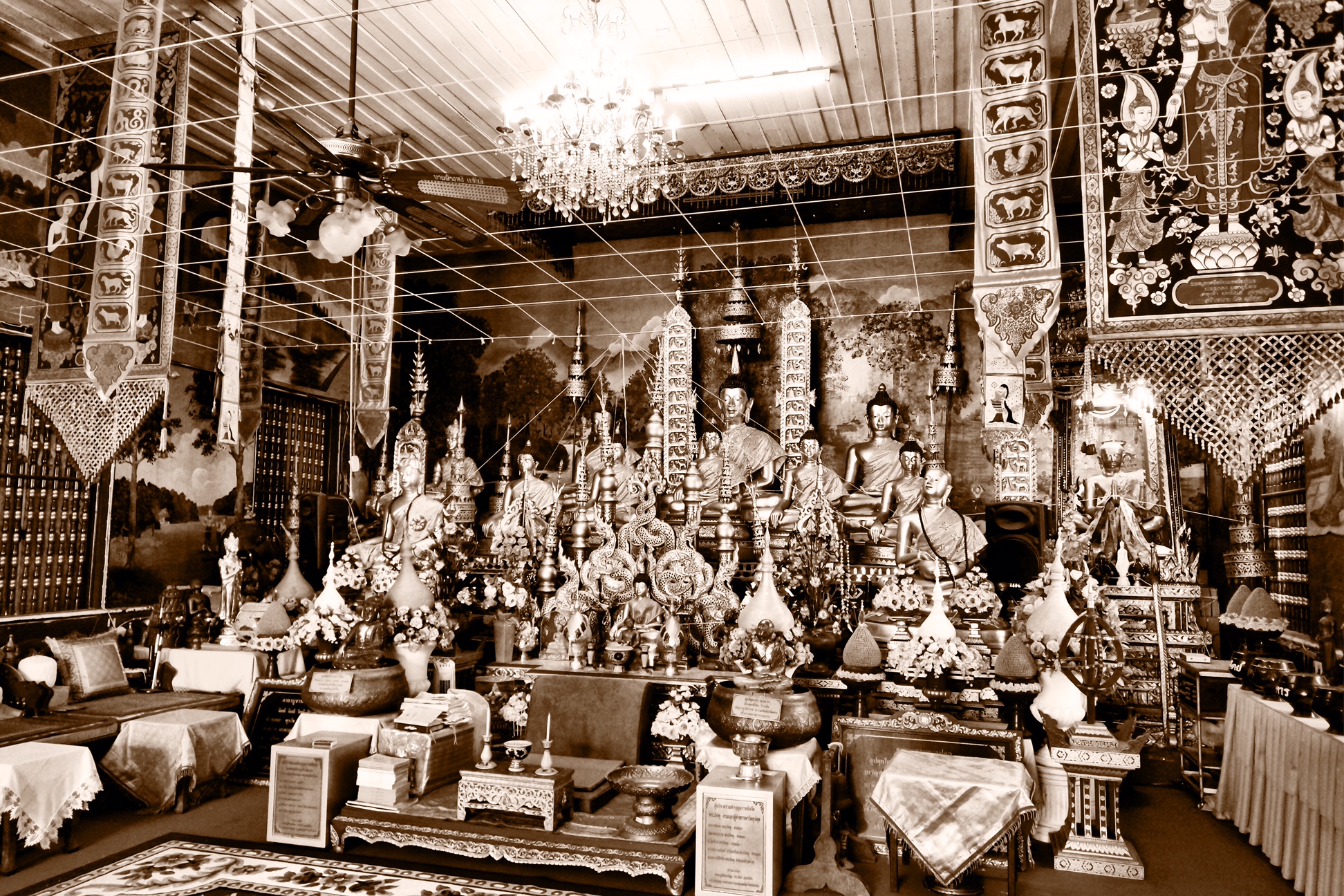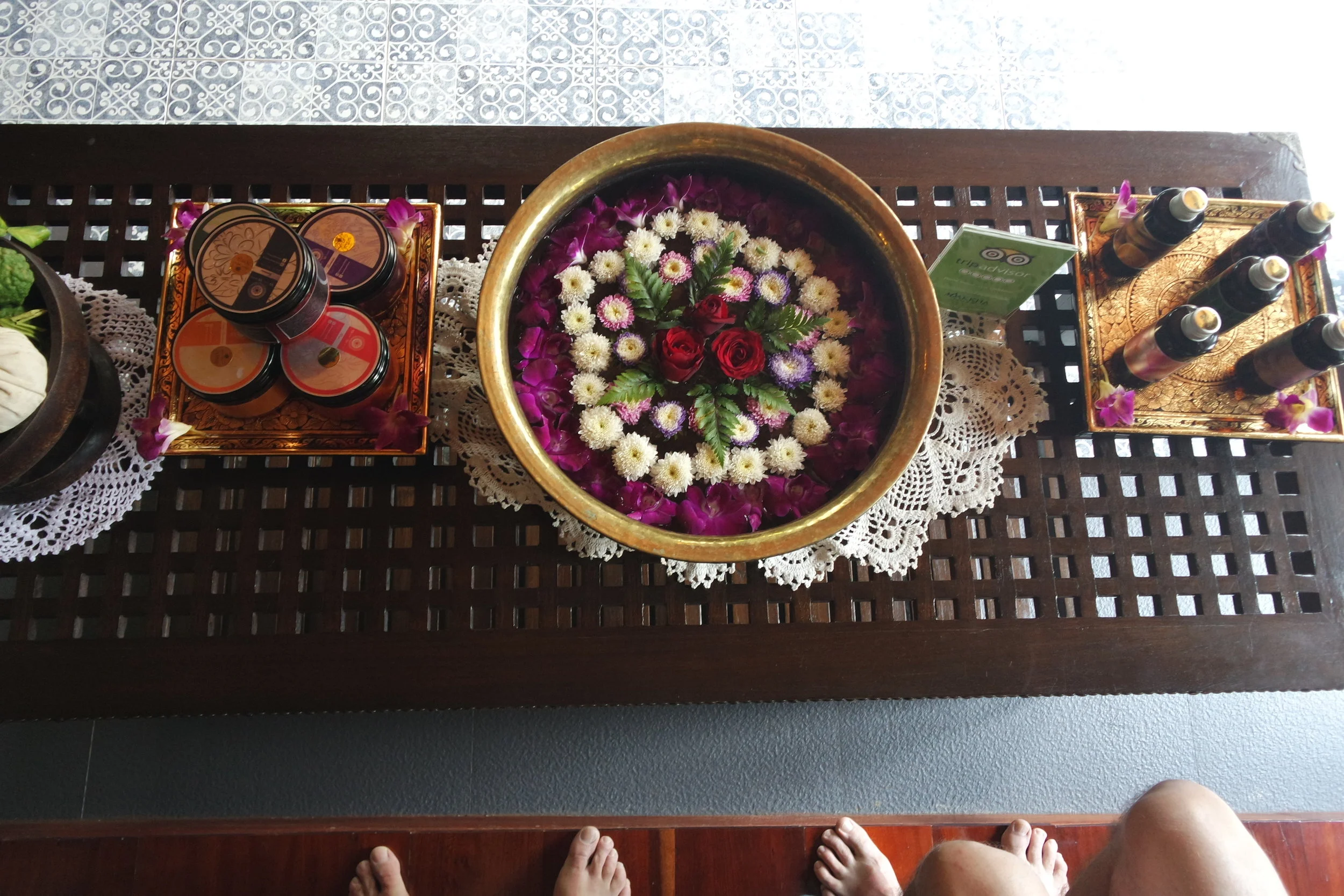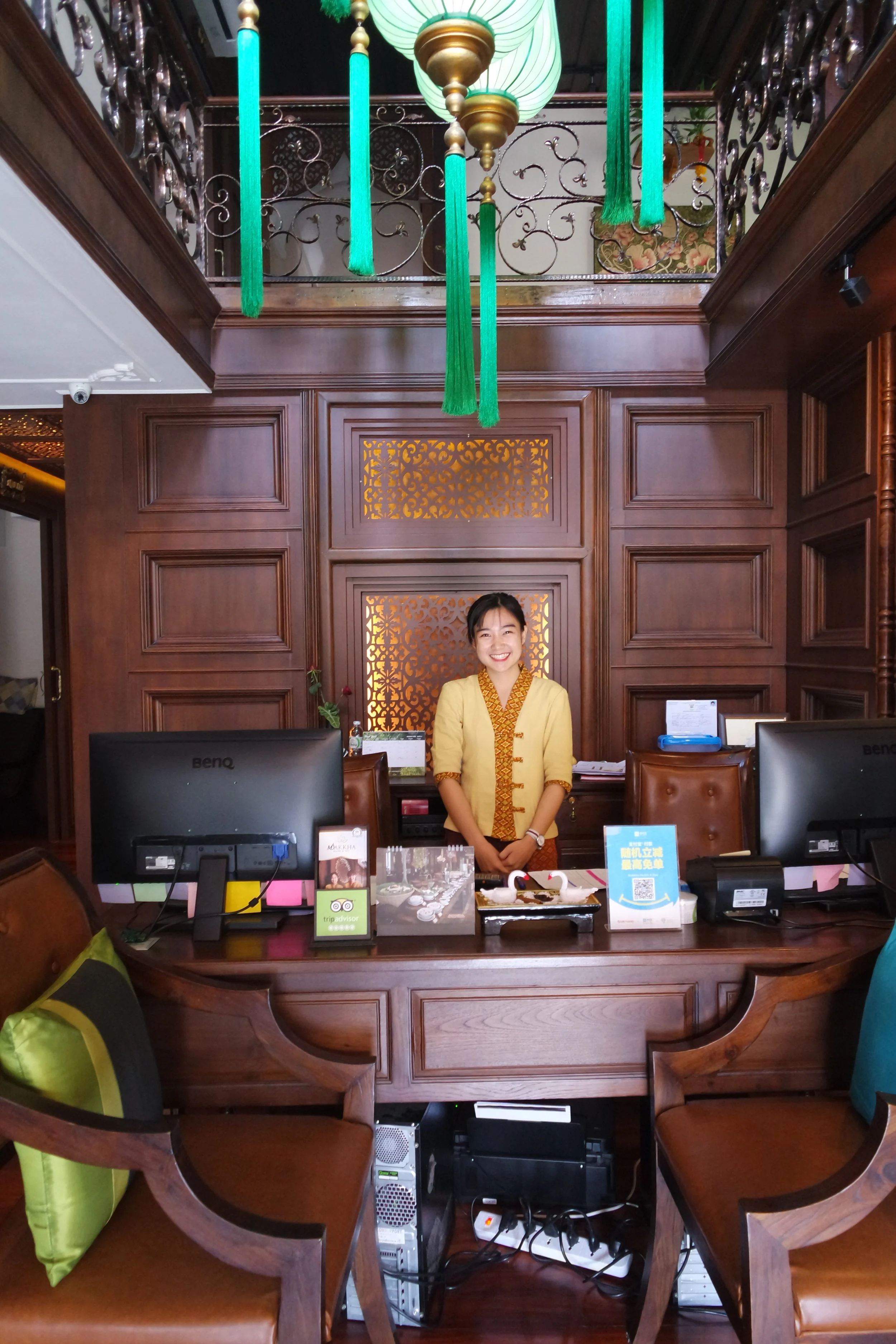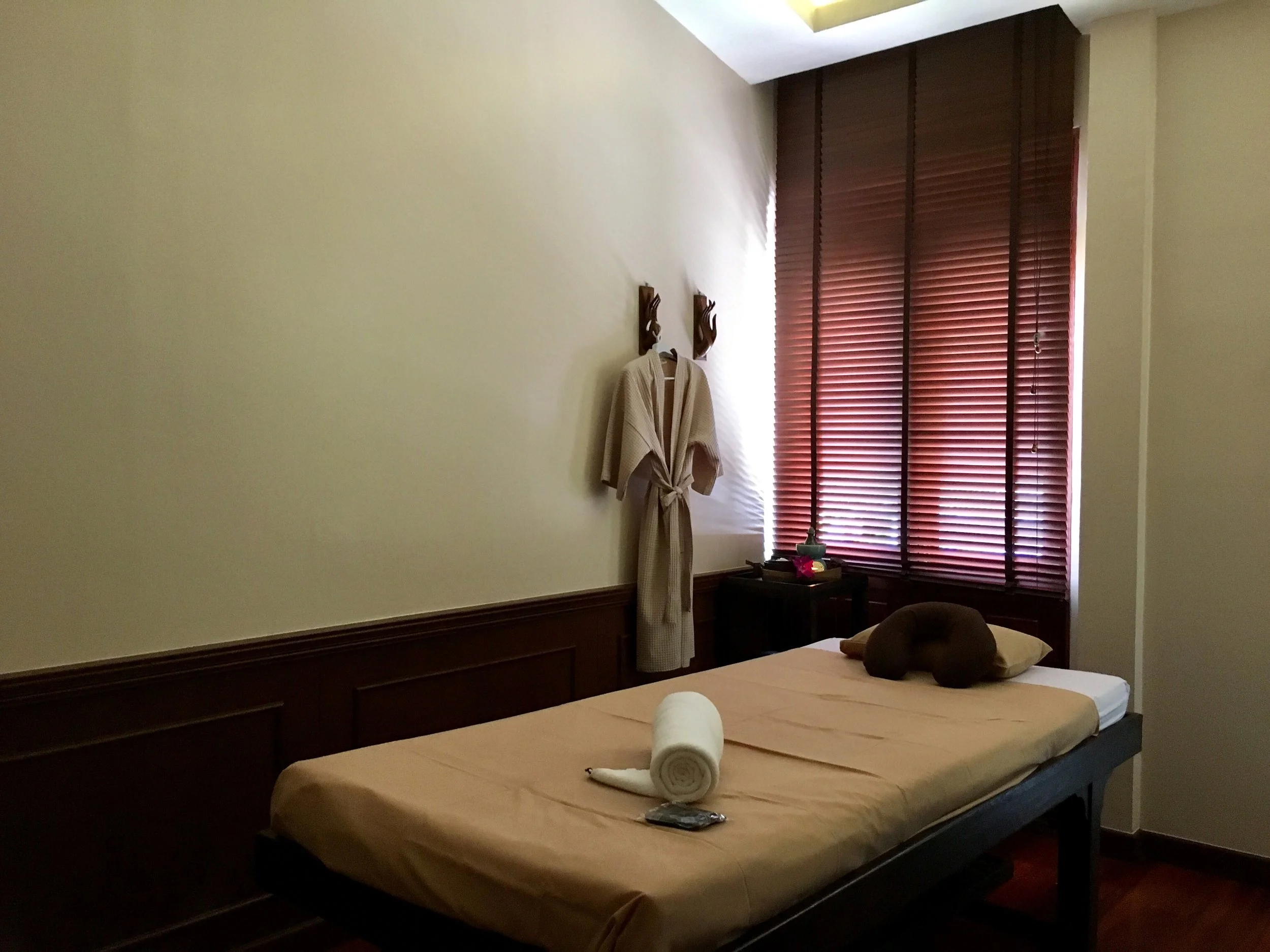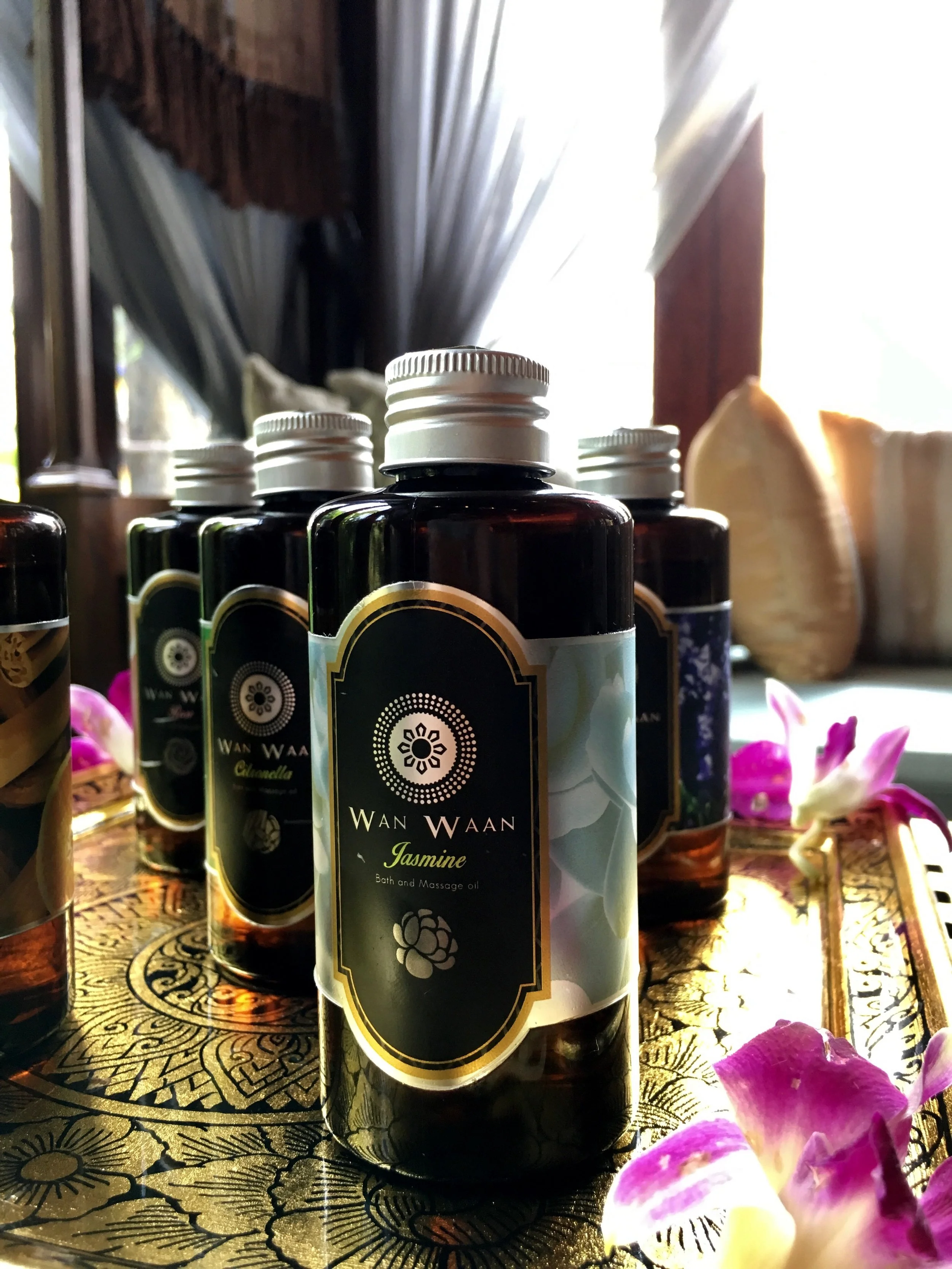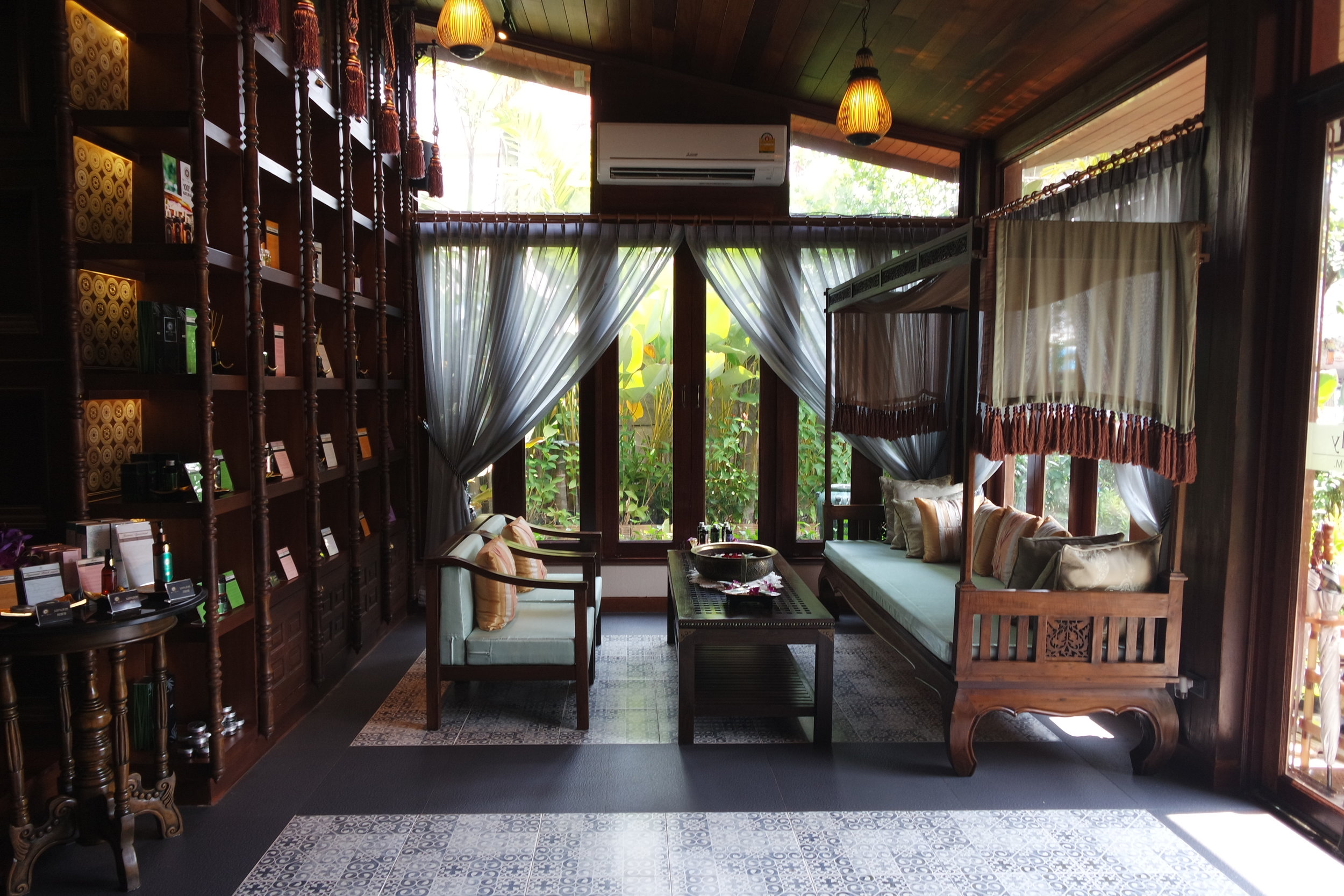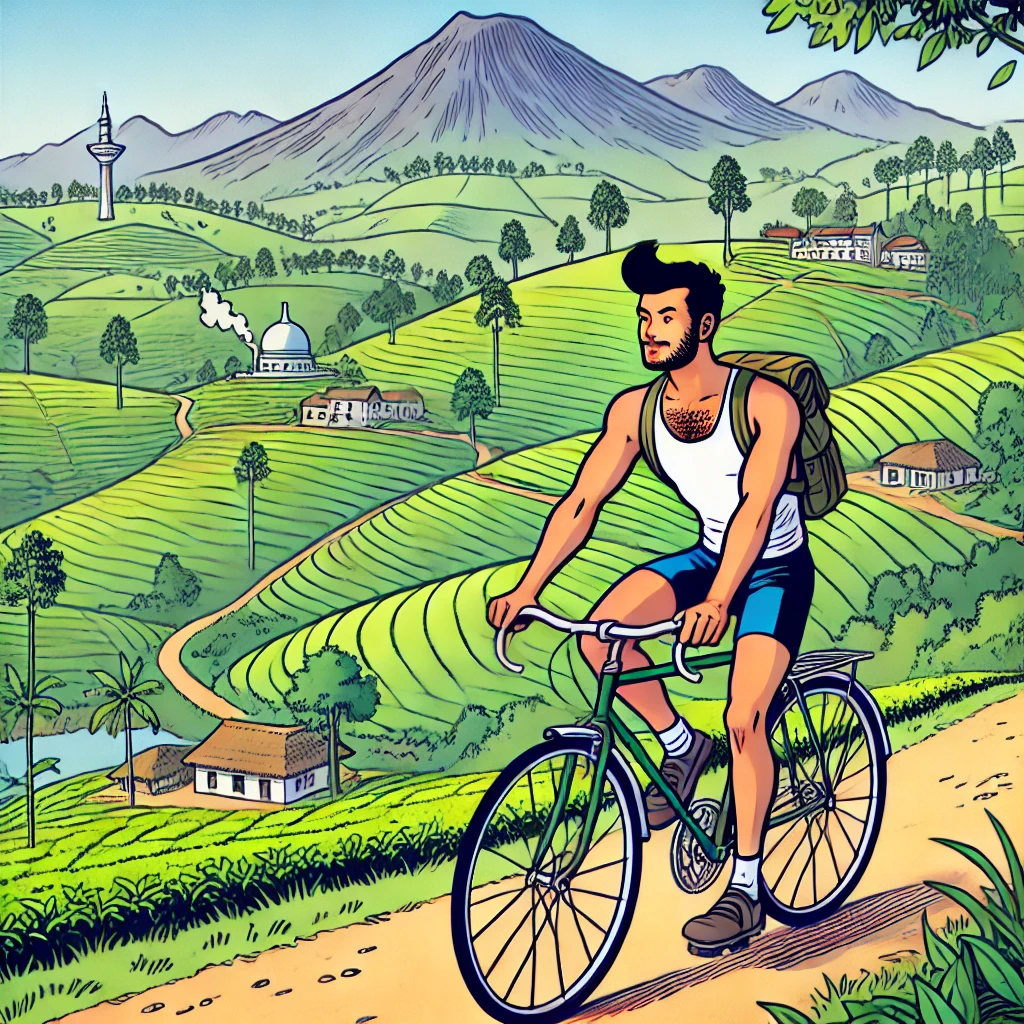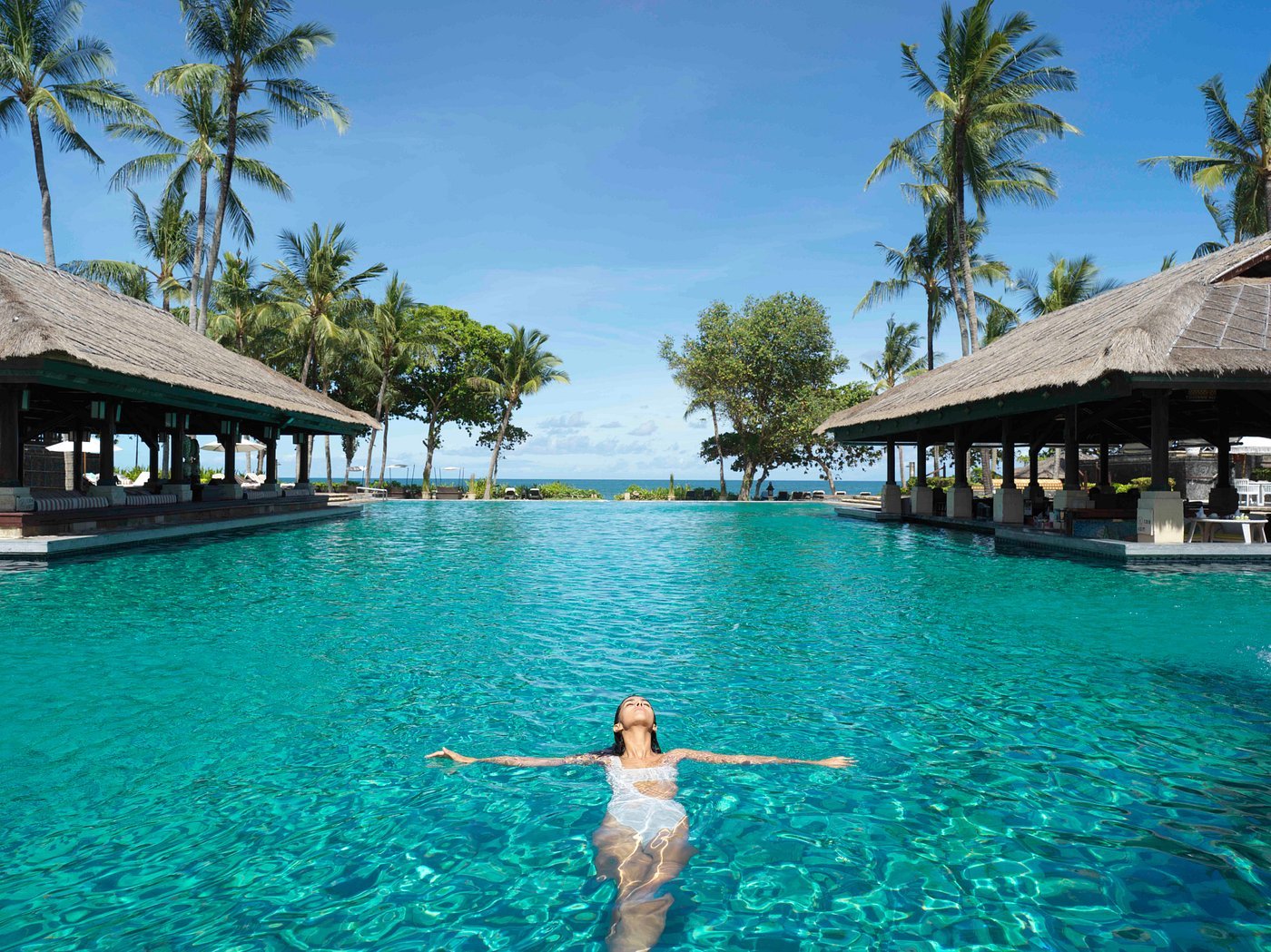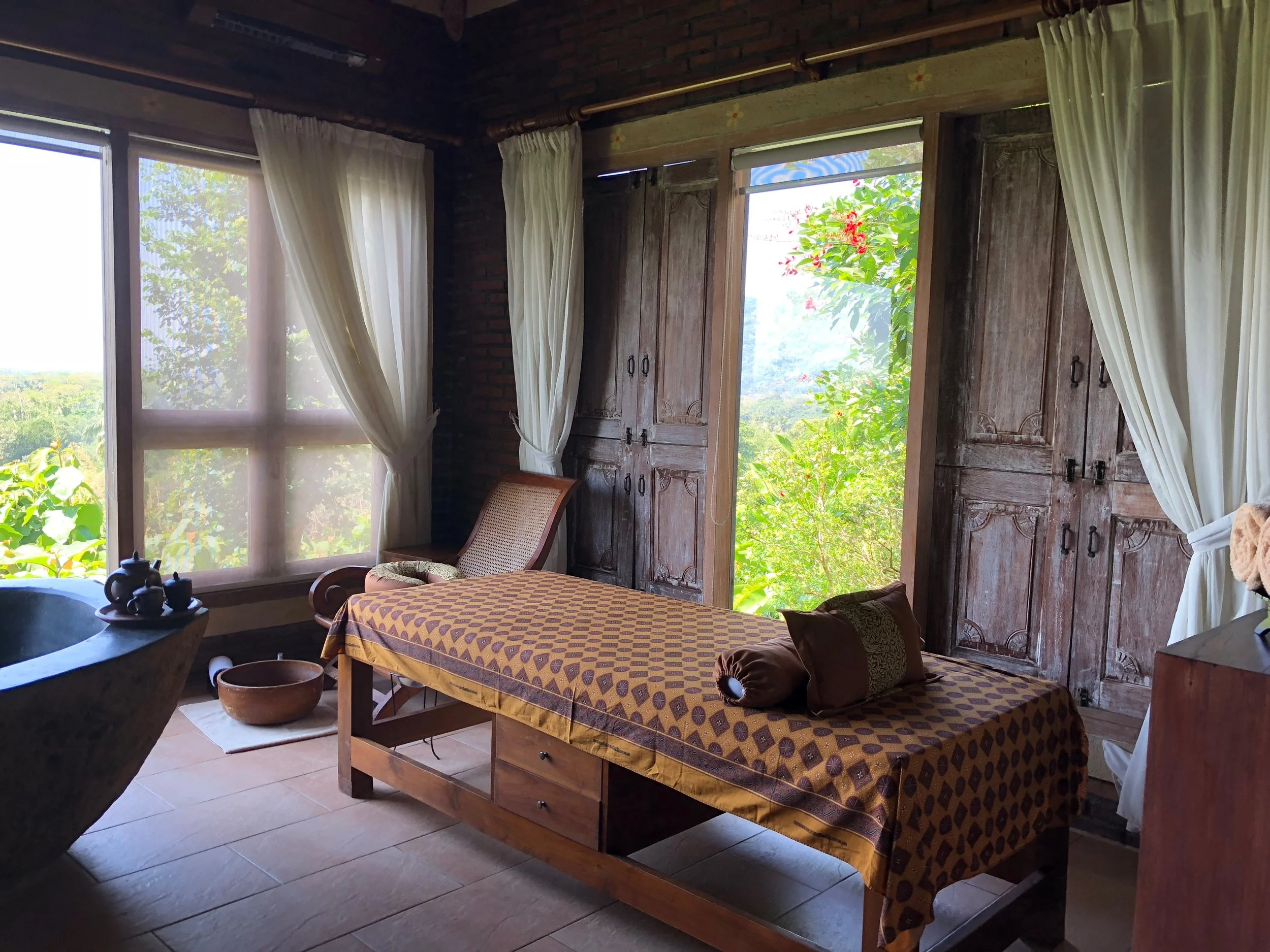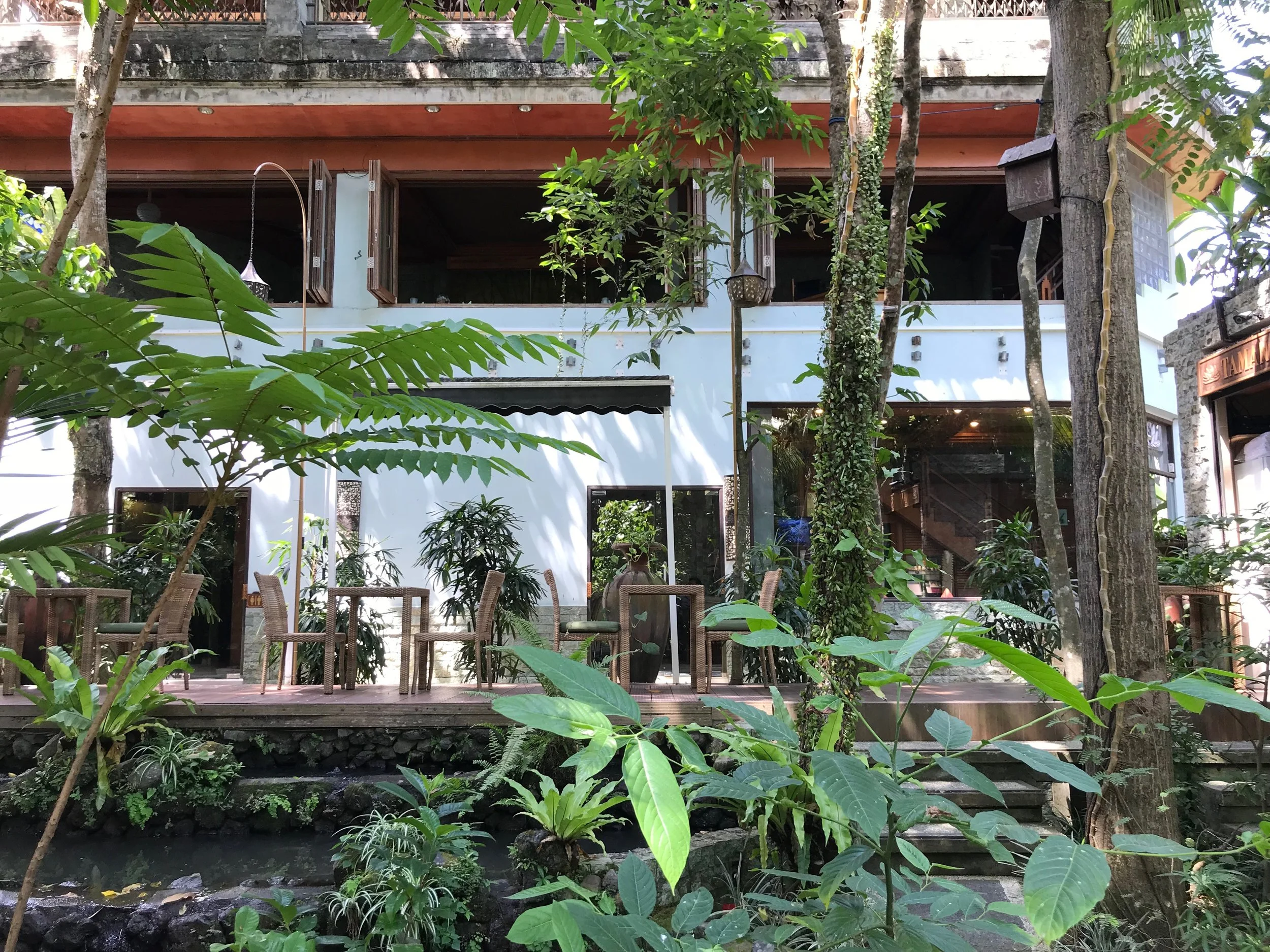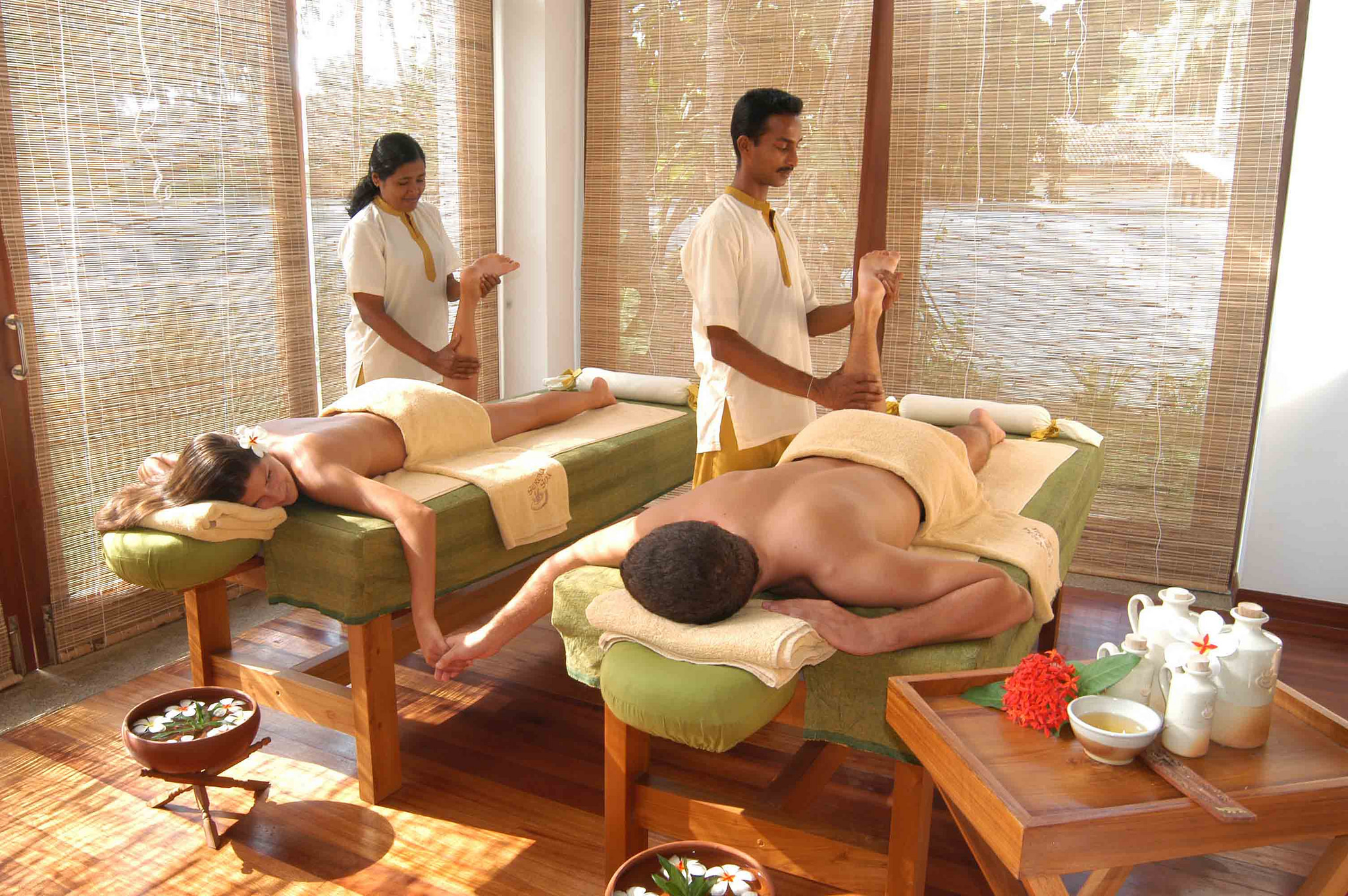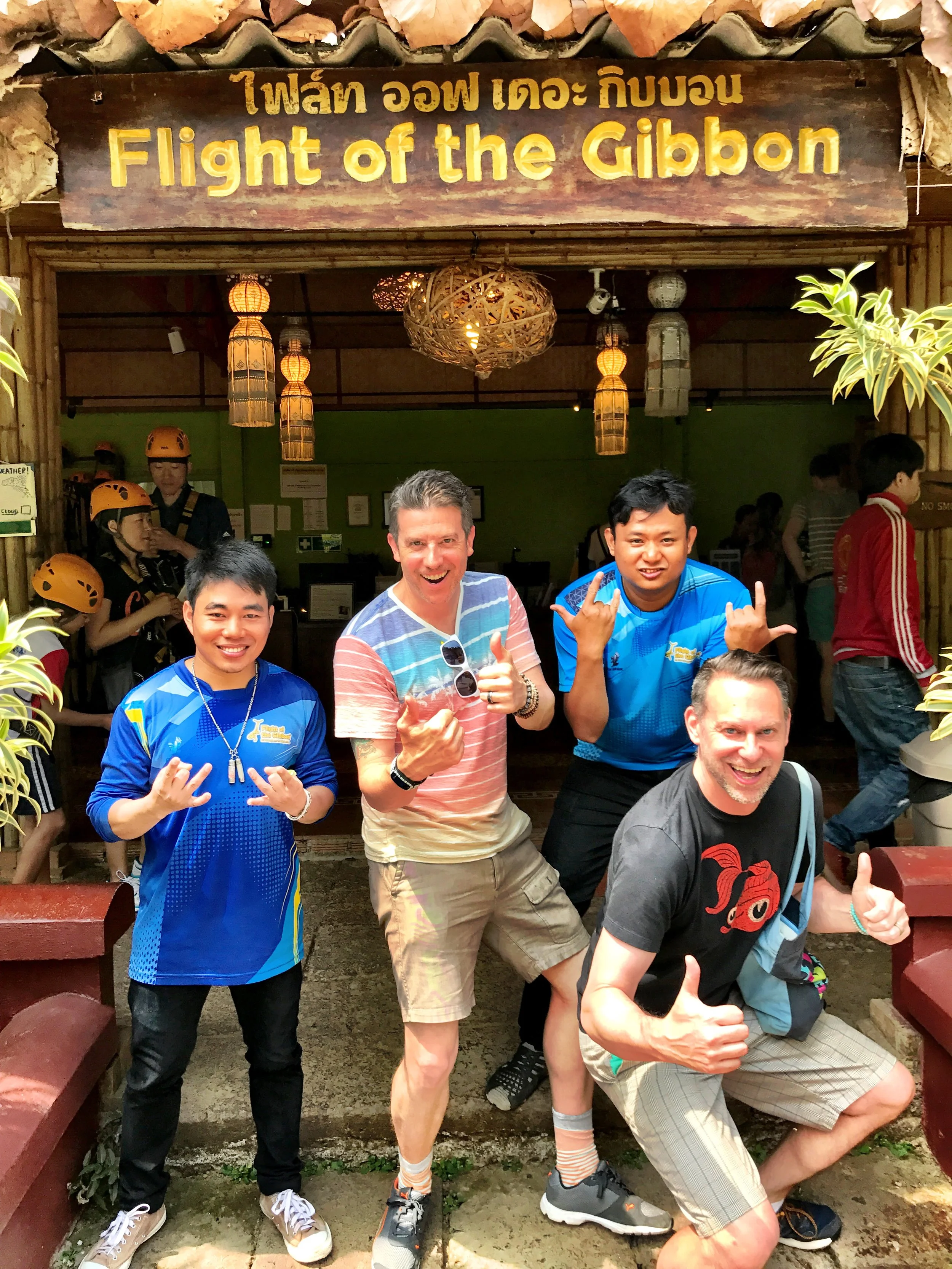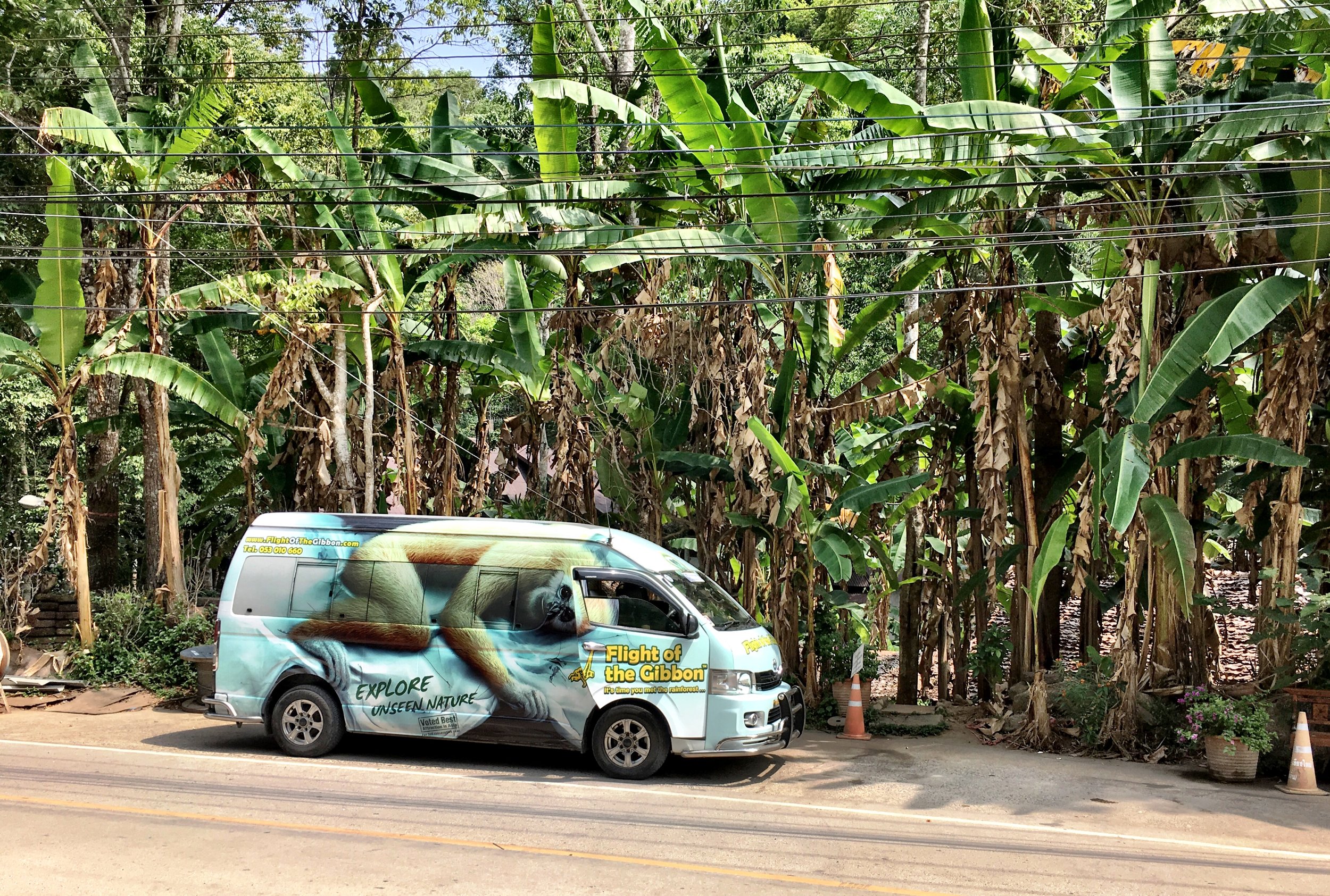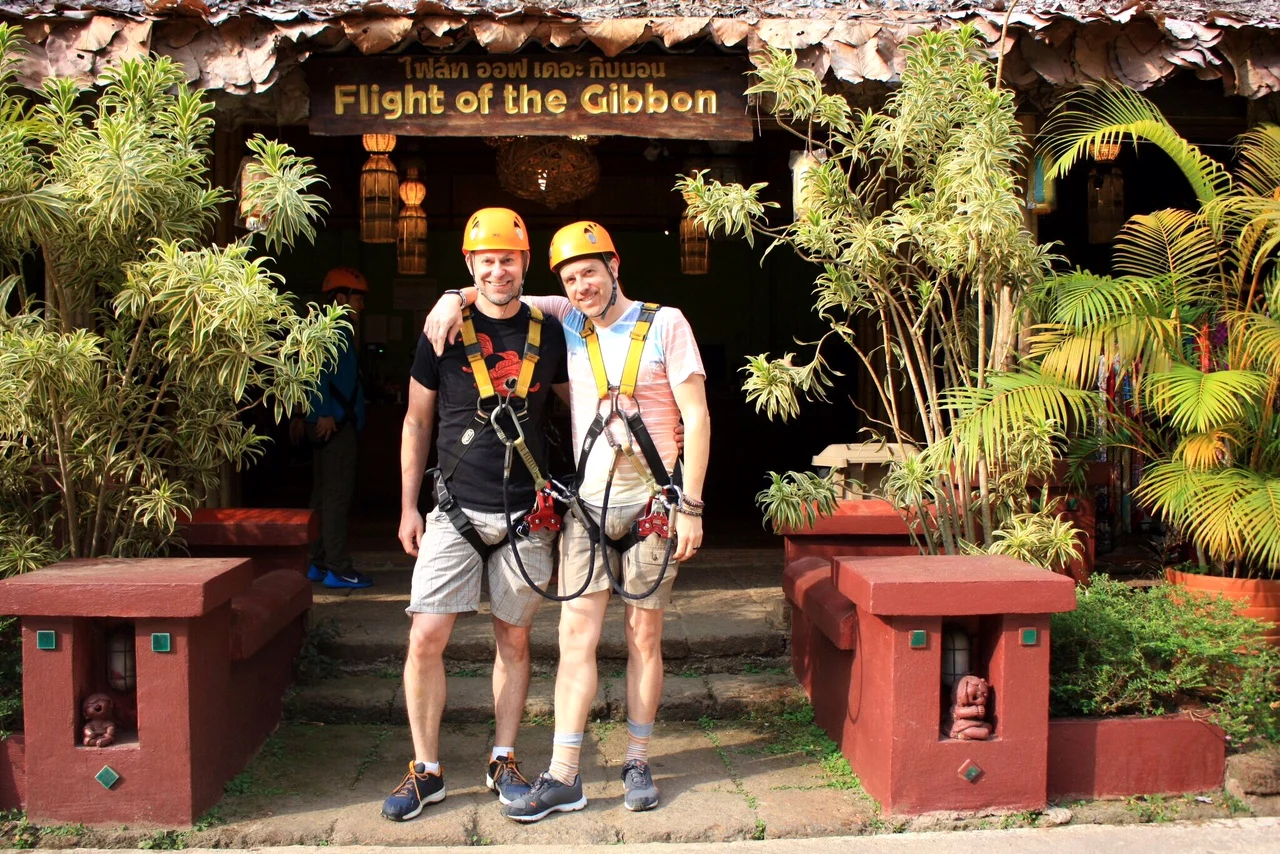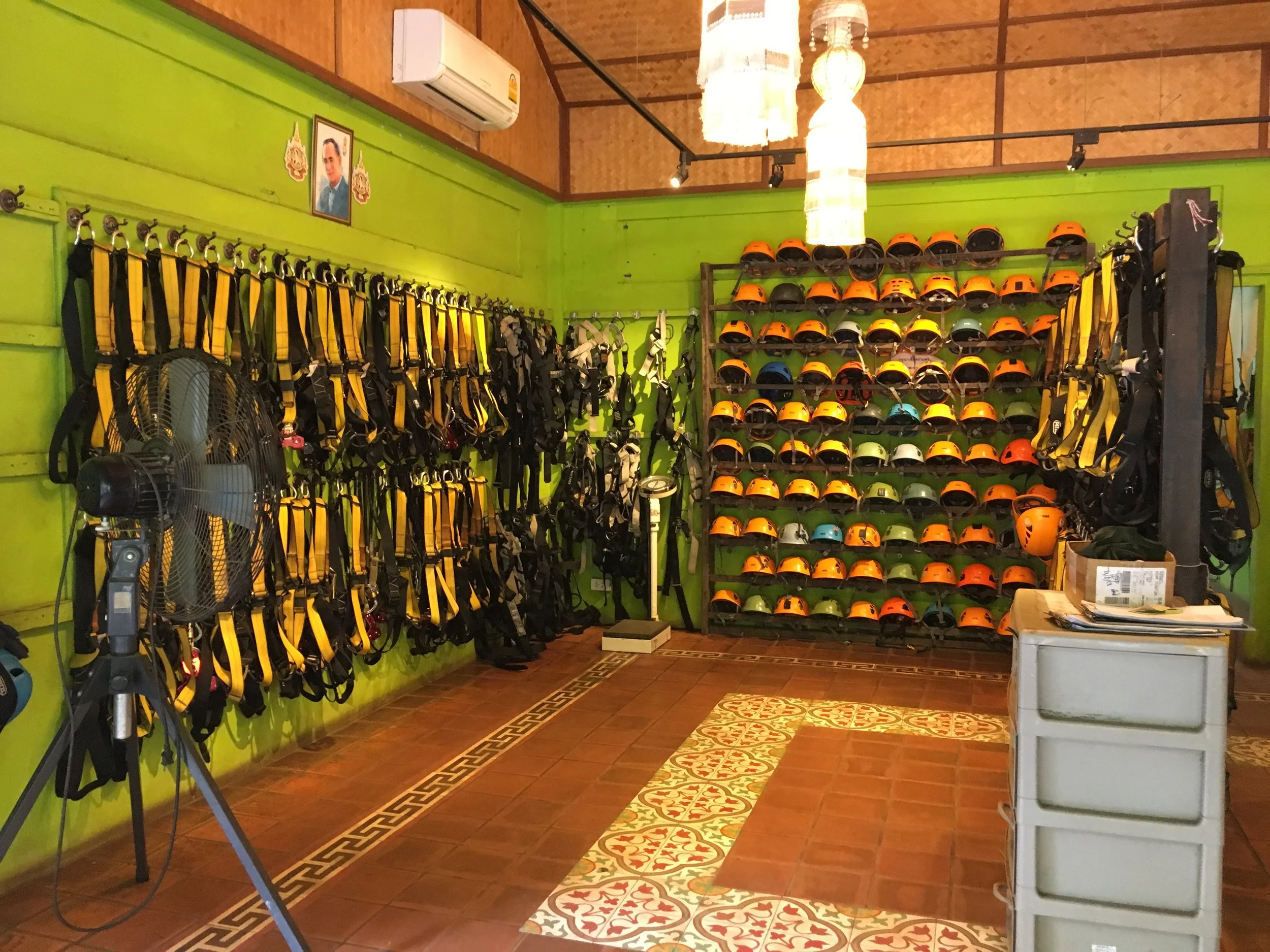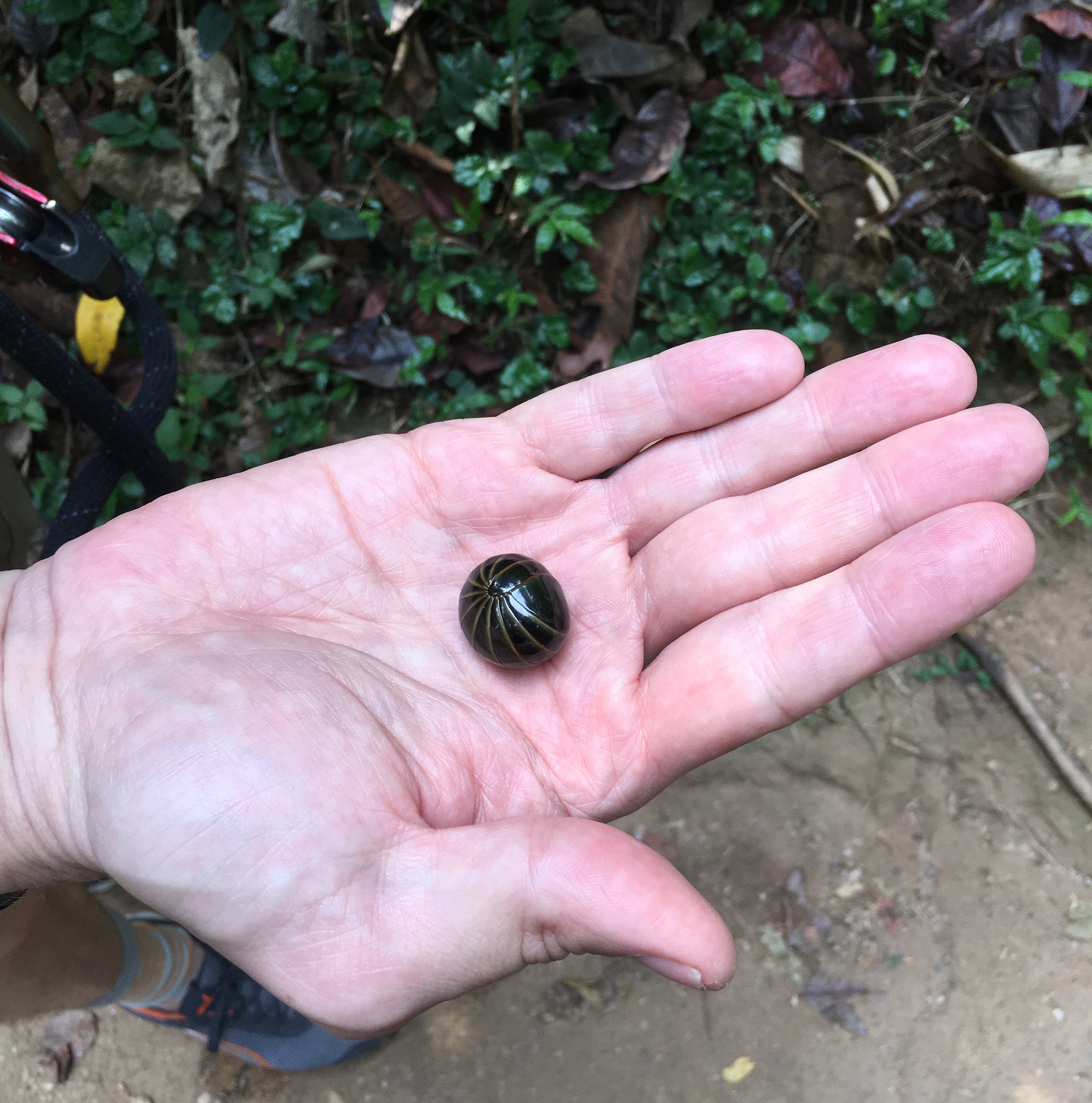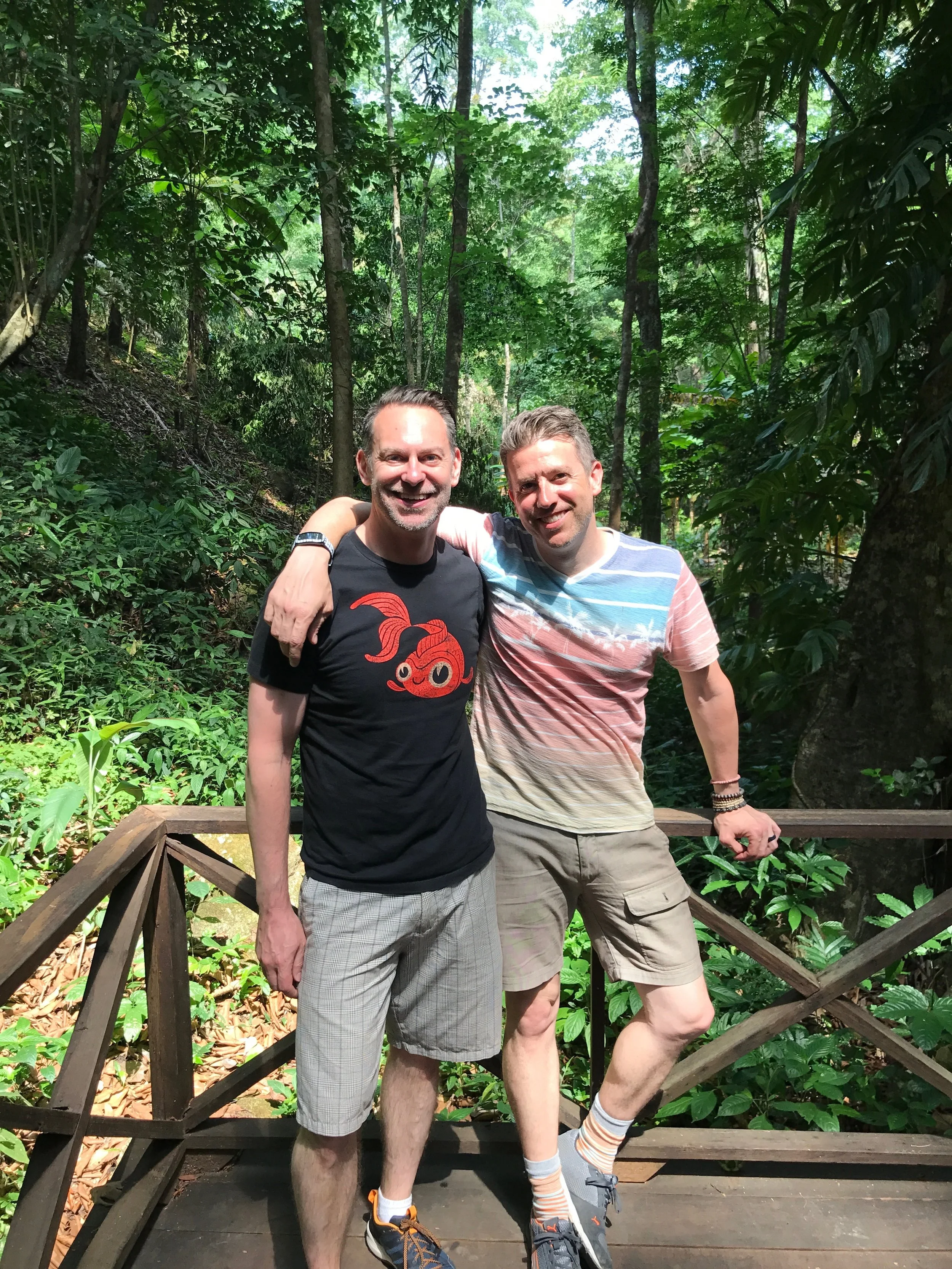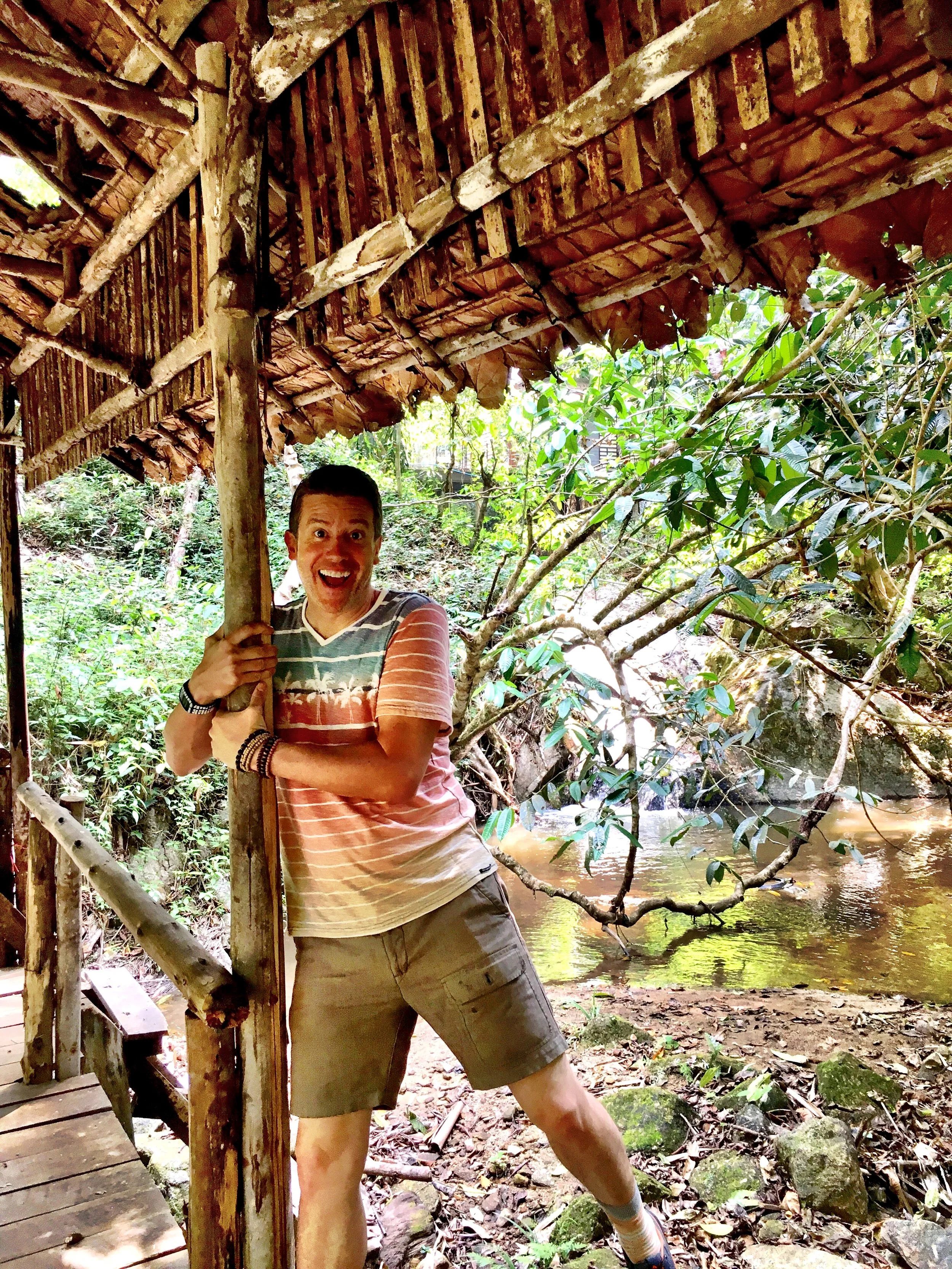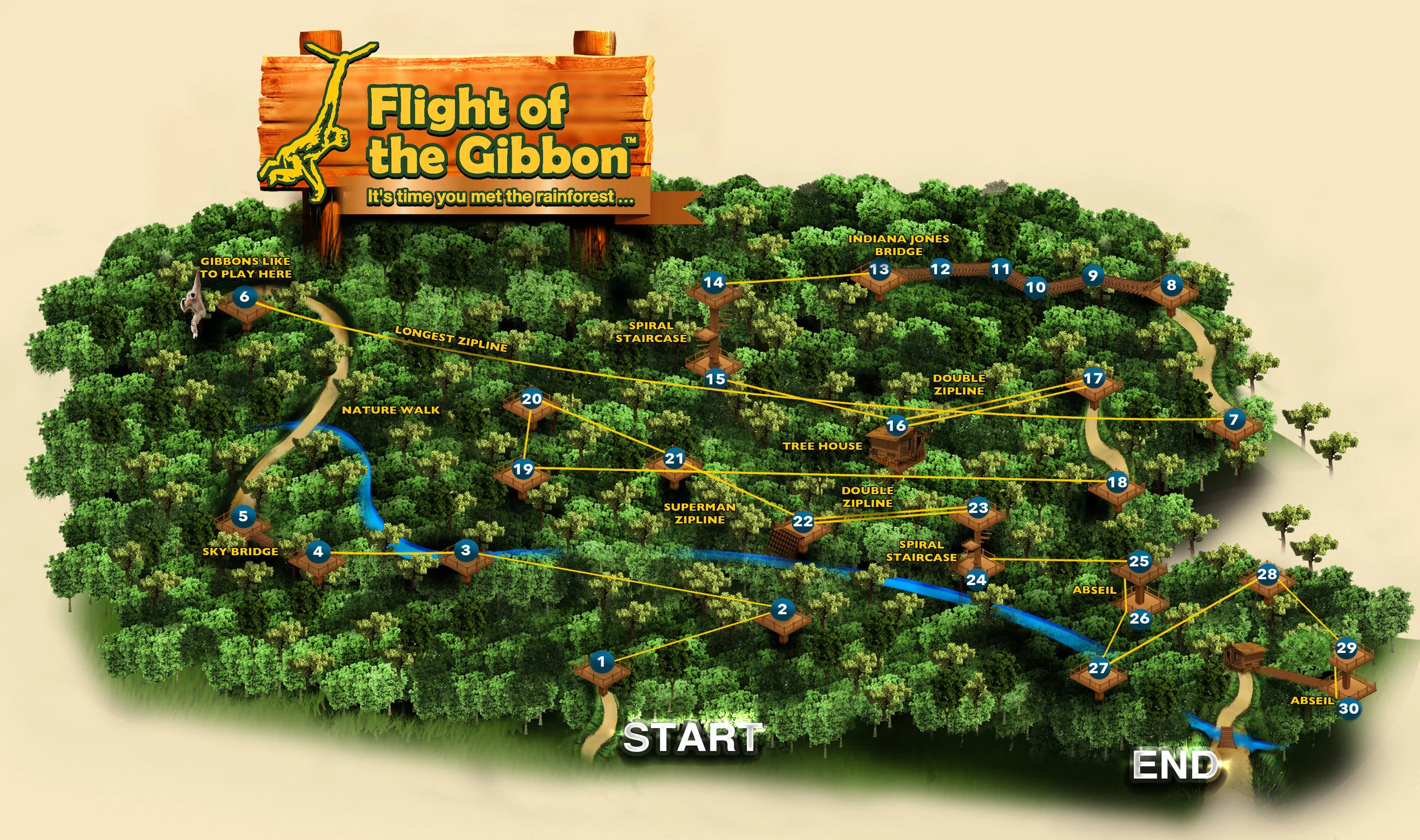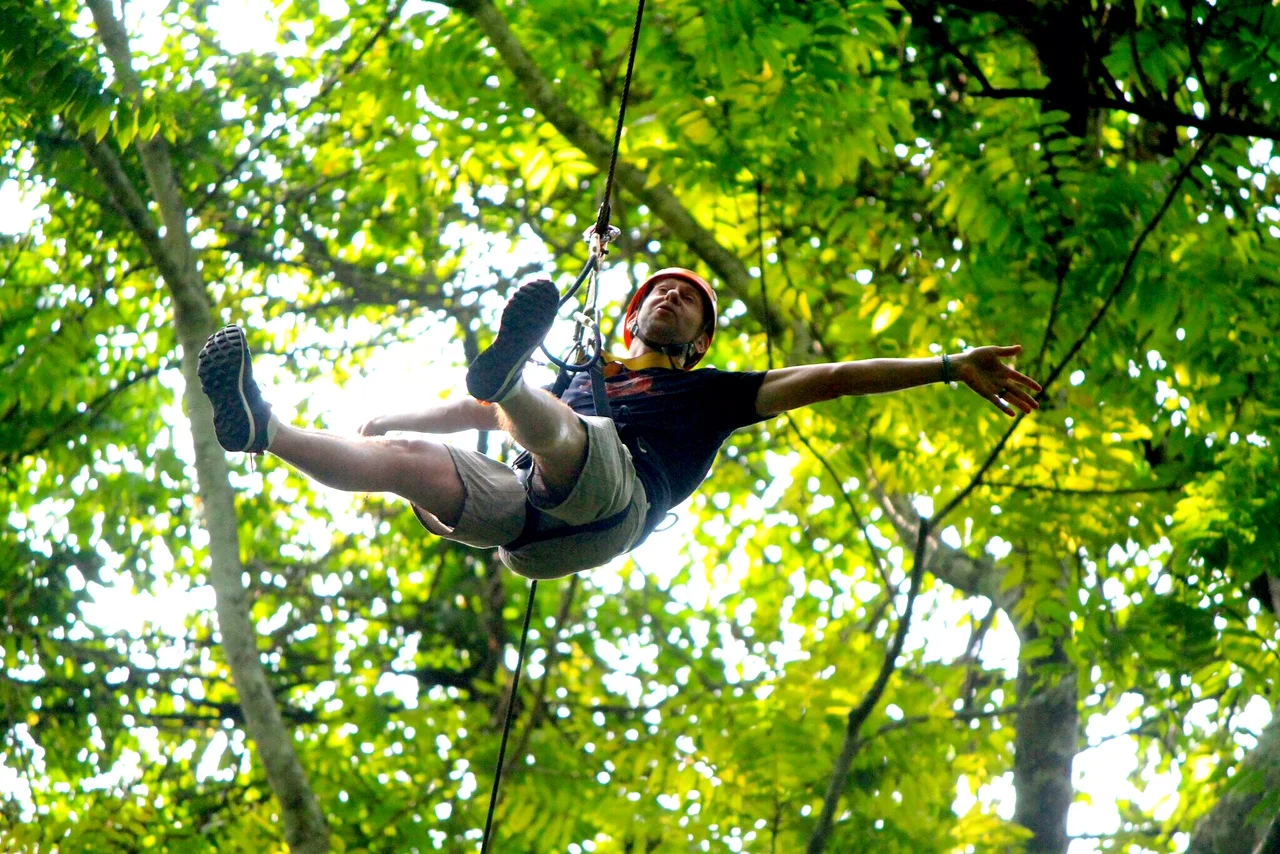Add this to a tour of Chiang Mai temples — and make a wish on the silver or gold trees.
It never makes the list of must-see temples in Chiang Mai, but we both fell under the spell of Wat Lok Molee
Chiang Mai is overflowing with temples and 7-Eleven convenience stores, although on occasion it might be easier to find the latter. I say this as Wally and I took a tuk-tuk to a lesser-known temple, Wat Kuan Kama, dedicated to a royal soldier’s beloved horse — only to arrive at the wrong one a couple of blocks away. The driver had dropped us off on Sriphoom Road on the eastern side of the Old City, near the Chang Puak Gate, when Wally pointed out the multi-tiered roof of a temple across the moat.
Guarding the temple are what look like evil demons — but they’re actually nice nature spirits known as yakshas
“A kiosk sells heart-shaped wish leaves to hang on the trees. Wally and I couldn’t resist purchasing one. ”
The day was young, so we agreed to see what it was, crossing the two-lane thoroughfare and moat via a small footbridge. A pair of yaksha statues, benevolent nature spirits, stand vigilant at the temple gate. Wally and I glanced at each other and grinned as we both knew we had happened upon a special place.
Holy Molee
The temple was none other than Wat Lok Molee, sometimes spelled Moli. One of the city’s older temples, its founding date is unknown, but it was mentioned in a charter in 1367 CE, when King Kue Na, the sixth ruler of the Mengrai Dynasty, invited a group of 10 monks from Burma who were pupils of Phra Maha Thera, a revered monk, to reside at the temple and spread the intellectual disciplines of Theravada Buddhism.
Two stone elephants line the pathway to the viharn, the main temple building
The viharn, or ordination hall, although old in appearance, was rebuilt in 2003. Its dynamic low-slung triple-gable roof telescopes outwards and is typical of traditional Lanna architecture. What’s atypical is its north-south axis alignment, as most Buddhist temples are orientated on an east-west axis, symbolic of the cycle of birth, death and rebirth. The bargeboards of the roof are decorated with shapes that evoke the heads of snakelike nagas. Perched at the roof apex are cho fa, decorative finials resembling the beak of a bird, possibly the mythical eagle warrior Garuda. These two elements represent the eternal struggle between these powerful entities. Naga is known as the sworn enemy of Garuda, who feeds mainly on — you guessed it — snakes.
The Buddhas in Wat Lok Molee’s viharn
The temple was likely linked to the royal family as the cremated remains of members of the Mangrai Dynasty (1292-1558) are interred within the chedi. In 1527 King Muangketklao, the 11th king of the dynasty, also known as King Ket, commissioned the chedi and viharn.
Buy a leaf from the stall out front and write a wish on it. Then hang it on the trees that stand on either side of the main temple
Make a Wish
The courtyard in front of the viharn contains two sacred wishing trees: one in silver and one in gold. There’s a small kiosk selling amulets, refreshments and symbolic heart-shaped wish leaves to hang on the trees. Wally and I couldn’t resist purchasing one. Wally wrote, “Please bless Wally & Duke” and hung it on the tree. I should also mention that the refreshment stand had a random collection of big-eyed Blythe dolls. I’m convinced the one sitting on the end was totally giving me the side eye.
Silver and gold wishing trees were Wally’s favorite part of Lok Molee
We entered the majestic wooden hall, walked down the center aisle and approached the large principal Buddha image. The figure is seated in the Dhyana mudra position, formed when the two hands are palm-up, overlapping, with their thumbs touching, the gesture promotes the energy of meditation.
The temple’s ornate ceilng
Looking up, the coffered ceiling is decorated with glittering glass mosaic lotus flowers and gold leaf images depicting the story of the Buddha’s life.
We exited the ordination hall to investigate the intriguing variety of devotional statues scattered throughout the temple complex. A wooden pavilion near the outer gate contains a statue of Queen Chiraprapha, whose brief reign lasted from 1545-1546.
Some of the shrines on the grounds of Lok Molee
One of the ornamented stucco pavilions is dedicated to the 18-armed Guanyin Bodhisattva, the goddess of mercy. An ornate crown with an image of the Buddha, whom she serves, rests atop her head. This figure reflects Mahayana Buddhism, showing elements of Chinese influence in Thailand.
Also amongst this menagerie is a raised brick platform with no less than five representations of the Hindu deity Ganesh.
A statue of the four-faced Hindu deity Brahma and a sacred tree
Ubosot
The ubosot, or chapel, has a rustic lodge feel, with wood floors and built-in cabinetry. The Buddha image is seated in the Dharmacakra Pravartana mudra position, which represents the wheel of dharma being set into motion. A smaller figure of my guy Upakut is seated beneath.
More wishing leaves are hung by the ancient brick chedi
Chedi
We passed through the open-sided shelter known as the sala baat with monks’ alms bowls for people to leave offerings, before arriving at the massive 16th-century chedi pagoda. Golden life-size statues, a who’s who of venerated monks, sit upon decorative stands.
The monks’ alms bowls and statues of their famous predecessors in an open-air pavillion
I was delighted to see a statue of Upakut in front of the chedi and began to make a game of finding him at the various temples Wally and I visited. I imagined he was part of symbolic plot development of a new Dan Brown novel set in Thailand.
Duke’s patron deity Upakut makes an appearance beneath the chedi at Wat Lok Molee
The exposed brickwork is a stark contrast to the gilded or stuccoed chedis of other Chiang Mai temples. The structure has three tiers and a large square base capped by a tubular ring-like detail called a torus. The sides of the reliquary chamber are double-redented, an architectural detail that looks like an accordion-folded piece of paper. It contains four niches facing the cardinal directions. The chedi’s main chamber houses the cremated remains of King Muang Ketklao, who was assassinated in 1545, and Queen Wisutthithewi, who reigned from 1564-1578. On top of this chamber are more torus, followed by a lotus bud crowned with a tall golden spire.
Perhaps it was the presence of Upakut, the wishing trees, or the fact that it was an unexpected discovery. Either way, this temple ended up being one of our favorites in Chiang Mai. –Duke
Wat Lok Molee
Si Phum
Mueang Chiang Mai District
Chiang Mai 50200, Thailand

